Cultivating Potential – Workshop 1 (Framing Potential)
The Appleton Greene Corporate Training Program (CTP) for Cultivating Potential is provided by Mr. Biss MRED Certified Learning Provider (CLP). Program Specifications: Monthly cost USD$2,500.00; Monthly Workshops 6 hours; Monthly Support 4 hours; Program Duration 12 months; Program orders subject to ongoing availability.
If you would like to view the Client Information Hub (CIH) for this program, please Click Here
Learning Provider Profile
Mr. Biss, MRED, is a Certified Learning Provider (CLP) at Appleton Greene. He has experience in management, marketing, and operations. He has a degree in Mechanical Engineering from the University of Maryland and a Masters of Real Estate Development from Auburn University.
He has industry experience in the following sectors: Non-profit & Charities, Real Estate, Defense, Aviation and Aerospace.
He has had commercial experience in the following countries: United States of America, or more specifically within the following cities: Washington DC, Atlanta GA, Charlotte NC, Orlando FL, and Raleigh NC.
In addition to serving as a KC-130J Transport Plane Commander during global operations throughout North America, Europe, and the Middle East, he served in leadership positions in aviation operations, quality assurance, and maintenance. During one role as a maintenance division officer, he was responsible for the maintenance of a $400MM fleet of aircraft and the leadership of 100 personnel.
Upon retiring from the Marine Corps, Biss pivoted professionally to pursue aspirations in human potential development and has been involved in pioneering work to bring advances human potential development and positive psychology interventions to those in addiction recovery to help cultivate their higher potential for wellbeing and a life of meaning.
Additionally, he serves as a founding member of a water NGO, where he leads small teams into rural villages in Central America to deliver innovative water solutions, having served more than 50 communities so far providing safe water to nearly 12,000 water-insecure people.
MOST Analysis
Mission Statement
Cultivating Potential carries a theme throughout that each module is “positivity-focused” and “strengths-based.” This first module will introduce the concept of such an approach and its opportunities for personal growth and increased potential.
This module then aims to empower the audience with a clear understanding of what human potential is and what factors can inhibit or elevate one’s actualized potential throughout life. As participants will begin to fully appreciate, every human has an incredible amount of untapped potential within them. Each person also experiences many events, circumstances, and conditioning that limit this expressed potential behind walls of insecurity or fear. Before long, many develop a propensity to settle for results and achievements far beneath what they genuinely want and are capable of attaining.
Fortunately, the forces limiting one’s innate ability begin to dissolve once a study of human potential begins. This in-depth study of human potential introduces many concepts and principles that will be developed fully during later modules. Core concepts for this workshop include self-efficacy, positive affect, happiness setpoint, eudemonic vs. hedonic happiness, overall life satisfaction, illness-wellness continuum, and personal responsibility for outcomes. With this foundation established, participants will chart a course forward that follows a holistic and comprehensive approach that addresses each element of positive psychology’s PERMA model. PERMA, an acronym for Positivity, Engagement, Relationships, Meaning, and Achievement, addresses each avenue for personal growth and wellbeing.
By the end of this module, participants will be confident that they can tap into much more of their innate potential and have a clear vision for how this journey will be accomplished in the coming months. While this module is more about sharing concepts and laying a foundation for growth than it is about the application, participants will have a renewed spirit for growth and future possibilities that is itself an empowering outcome.
Objectives
01. Define and examine the framework, process, and personal expectations of this course.
02. Understand the human potential model for performance and success.
02. Understand the role of self-efficacy in one’s ability to perform at their highest potential.
03. Improve personal productivity and sense of empowerment at work.
04. Identify opportunities to take greater levels of ownership and responsibility.
05. Identify appropriate responses to get desired results in the organization.
06. Develop a strengthened locus of control at work.
07. Improve each participants foundation for operating at higher levels of innate-potential.
08. Identify the line of division between the indirect and direct spheres of circumstances.
09. Foster a sense of connection with the fellow program participants.
10. Develop a skill for taking responsibility for difficult and troubling situations that arise.
Strategies
01. Each participant is to set aside time to study the elements of the workshop content.
02. Participants to set aside time to meet as a team to discuss the elements of framing human potential.
03 List the key personnel that will participate in each of the modules.
04. Participant complete the exercises individually and then as a group.
05. Analyze existing responsibilities and consider them in the context of locus of control and direct/indirect sphere events.
06. Participants meet to discuss the overall performance of the organization and identify where there may be lost actualized potential.
07. Seek opportunities to exploit resources within your direct sphere and locus of control
08. Participants should meet to discuss future expectations of the organization once leveraging increased potential individually and as a group.
09. Develop an integration plan for including new commitments born of the Project Study exercise.
10. Determine the estimated time commitment for the participants for each module and analyze the current workload to determine feasibility.
Tasks
01. Participants to read through the Preliminary Analysis for workshop and complete the
02. Participants to read through the entire workshop and make notes.
03. Schedule a meeting within the next 30 days for the participants to meet and discuss the workshop material.
04. Set a deadline within the next 30 days to take the self-assessment about human potential in your life along with the self-evaluation of self-efficacy.
05. Schedule a meeting in the next 30 days to complete the Responsibility Stems exercise with the group of Participants.
06. Set a deadline within the next 30 days to complete the locus of control analysis.
07. Set a deadline within the next 30 days to perform the analysis for creating or allowing outcomes.
08. Schedule a time in the next 30 days to complete the inventory of broken agreements.
09. Schedule a time in the next 30 days to complete the Project Study with a fellow participant and as a group or with your team.
10. Set a deadline in the next 30 to 60 days to review the results of the Project Study for dealing with difficult and troubling situations.
Introduction
Appropriately named, the first phase of this program is Laying the Foundation for Unlimited Potential. This phase focuses on developing that foundation for Cultivating Potential. Paramount for this stage is the adoption of the human potential model for productivity and success. Throughout this phase, we delve into understanding the interrelationship between actualized potential, self-efficacy, affect, and mindset. With techniques to capitalize on phase one, participants will begin experiencing improvements in their performance, happiness, productivity, and joy.
The height of a building is limited by the strength of its foundation, so too is the height of one’s potential success and achievement in life. The first part of building that foundation for growth is believing that growth is possible and accepting that full ownership of one’s life is the surest path to reaching one’s full potential. This level of ownership requires each individual to accept complete responsibility for the outcomes in their life. For many, stress and a heartfelt desire to do well can force them into a reactionary or survival mindset where attention tends toward external threats beyond their control. This external focus is disempowering and promotes fears or feelings of being overwhelmed. Establishing a foundation for reaching one’s highest potential demands taking personal responsibility for one’s thoughts and behaviors. With this acceptance of responsibility comes increased self-esteem and a sense of control. Phase One is a significant step towards participants cultivating their full potential; this stage of the program instills that everything a person needs to achieve their ambitions is within their control. Their goals are attainable with their capacity to grow.

We recognize that the world is rapidly changing, both in terms of broad, global patterns that drive business and in terms of the more immediate space that surrounds our daily lives. The options available to us to meet our needs and pursue our goals are evolving swiftly and often unpredictably, mirroring the exponential pace of development in the underlying technologies. In some ways, this enriches and empowers us more than ever before; in other ways, the trend can be disconcerting. This is one of the 21st century’s paradoxes: The world changes quickly, but our basic human needs do not. We are struggling to keep up with the world we have created and continue to create in some fundamental ways. It’s a period of high—and rising—stress.
We can already sense the tension: the sense of limitless options (for some) and the awareness of limited time (for most); the feeling of having just missed something and the fear of missing more; the thrill of seeing a 3D-printed car and the unease of wondering which jobs will remain for us in the age of intelligent machines; the hyper-connection and loss of connection; the expectation of on-demand everything and the appeal of slow, bespoke, handmade.
One of the most significant changes we are witnessing is the shortening of time spans, which is owing in large part to exponential technology advancements combined with the immediate dissemination of ideas and information across a linked world. What used to take decades now takes years; what used to take years now takes months; months to weeks, etc. This transition is upsetting traditional firms and business models in the institutional context, but it has also spawned a new set of enterprises and business models that are better suited to the faster (and growing) pace.
This transformation is also affecting us as individuals. An education for our parents lasted a career. It could now last 5–10 years. With the rapid rate of change, the ability to “know” a fixed store of knowledge is becoming less relevant and legitimate, while other qualities such as creativity, empathy, and the ability to understand context are becoming more vital. Our pupils will be required to take lifetime learning seriously and upgrade their abilities on a regular basis. They will very certainly change fields of study and employment several times during their lifetimes. We, too, will need to develop new habits and competencies that are tailored to the times, just as institutions.
People have turned to certain old, and very old, practices in the face of the challenges of a new, modern environment. There is a rising movement built around mindfulness, meditation, gratitude, and digital detox—all as antidotes to increased stress, as seen by events like the Wisdom 2.0 conference. The wellness industry is booming, with increasing demand for existing methods as well as the development of new practices and fresh takes on old ones. Yoga has never been required to perform so many tasks for so many people. According to a recent survey, the number of people practicing yoga in the United States has surged by about 80% since 2012, with practitioners paying more than $16 billion on training each year.
Meanwhile, spending on meditation-related products and services was slightly under $1 billion in 2015, excluding mindfulness apps. In the United States, the workplace wellness sector is worth more than $40 billion. Health and wellness, well-being, mental health, professional development, career advancement, and even community service intersect as the borders between various sectors and portions of our lives blur in the drive to understand ourselves holistically and so govern our lives.

Individual pliability in an unpredictably changing world
When we try to build new habits around our work and life, balance, notably work-life balance, frequently appears to be the aim, however difficult. We’re told that our lives, including our working lives, will be long—longer than previous generations’ — and that we’ll need to maintain our bodies, minds, and relationships throughout that time. We use balance to accomplish this. Is balance, however, the sole or even the best goal? When we are unhappy, we tend to notice large imbalances and believe that restoring equilibrium is the solution. However, in terms of our professions and objectives, as well as the ways we evaluate ourselves and find meaning, development or impact may be just as important as balance for many of us.
What is the goal if balance isn’t the goal? Personal practices for times of exponential change tend to be divided into two camps: those who speed up and those who slow down, not so much at odds as detached, each camp blind to the relevance of the other. On one hand, there are techniques for increasing speed: doing more, getting more, improving, growing quicker, and stronger. The answers are out there, digital tools put them all within reach, and the only question is, what’s stopping you? In this camp, we identify passions, get into a flow state, and hack everything, Tim Ferriss style; the only question is, what’s stopping you? Mindfulness, meditation, and digital detox are examples of practices for slowing down. If you can tune out the noise long enough to listen, you’ll find the answers.
Both camps are reacting to the mounting pressures that we are all experiencing these days. The urge to succeed, to be relevant and competitive in a quicker world where safety nets and social contracts are in short supply, is the purpose of the first. The second purpose is to reduce and recover from the actual demands of living in an always-on, fast-paced, competitive society. Each aim, which appears to be incompatible, points to alternative practices.
This scenario is worsened by the fact that for certain talents’ useful lives are shortening, and it’s difficult to foresee which abilities an organization will require next. Any task that can be standardized and made routine is likely to be automated, and fast-growing AI (artificial or augmented intelligence) will intrude on even “judgment” tasks. What will be left is the subject of a separate report, but many people believe there will still be several ways for humans to augment machines and for machines to augment humans. Resourcefulness, flexibility, and persistence, as well as curiosity, empathy, and creativity, will be important characteristics for future demands. The ability to learn new skills, contexts, and applications, as well as the flexibility to use skills and tools in novel ways and the creativity to create new knowledge, will be critical.
The techniques of slowing down and speeding up might be considered as complementing rather than incompatible if we aim for long-term performance. Slowing down has been proven to boost creativity, perseverance, and empathy. Curiosity is sparked, new resources are discovered, and we are exposed to new ideas and circumstances that may be relevant to our own domain or ambitions. Both are necessary for the type of learning that we predict will become increasingly relevant in the workplace: creating new information (insights, strategies, approaches) rather than integrating current knowledge pools.
In a system meant to be flexible and responsive, speeding up and slowing down together produce what we call “individual elasticity”: flexibility and responsiveness. Individual elasticity is based on Joshua Cooper Ramo’s concept of “resilience,” which is described as the ability to become stronger, not only survive or bounce back, as a result of system pressures. Our individual elasticity—our robust, flexible, responsive system—is the result of fostering both the ability to slow down and the ability to hurry up. In Chinese yin-yang philosophy, “opposite or opposed forces are actually complementary, interwoven, and interdependent in the natural world, and how they give origin to each other as they interrelate to one another,” there are echoes of this concept. Furthermore, developing the ability to cycle between slowing down and speeding up over weeks and months—as well as throughout the course of a day or an hour—requires a set of practices tailored to the cadence and rhythm that each individual requires.
Focusing on speeding forward without allowing time or space to calm down and evaluate might lead to burnout or the pursuit of a topic or professional path that is no longer viable. Slowing down and becoming grounded can be beneficial and restorative, but without focus, direction, and exploration, they can become stagnant. Growth and discovery, as well as rest, provide nourishment for our thoughts, spirits, and bodies. The effect on unlocking potential is higher when both sides are acknowledged to be complementary and pursued deliberately to encourage each other.
While different life and career stages may necessitate the use of some practices over others at any one moment, it is critical for people to be able to slow down and speed up, as well as to build a variety of speeding-up and slowing-down practices to draw on throughout their lives.
Ambitious professionals frequently devote a significant amount of time to planning tactics that will aid them in achieving greater levels of success. They aspire to a more prestigious job title, more pay, and accountability for larger revenues, profits, and employee numbers. Family, friends, and co-workers all have an impact on their conceptions of success.
Despite their efforts and accomplishments, many people eventually discover that they lack a true sense of professional pleasure and fulfillment. A surprising proportion of accomplished CEOs have reported significant dissatisfaction with their careers. They reflected on their past accomplishments and wished that they had pursued a different career path altogether.
Consider the case of a highly accomplished research analyst at a prominent securities firm who sought assistance because he was dissatisfied with his professional advancement. This was especially amusing because he was well-known, well-respected (he was ranked first in his industry sector), and well-paid. He claimed that he was tired of his job after ten years, disliked his boss, and thought he had no prospects for advancement. Most importantly, he had always aspired to be an investment manager, but he had begun his career as an analyst and had never seriously reconsidered his route. He was entrapped. He was afraid of losing his status and didn’t want to disappoint anyone, but he also didn’t want to keep doing what he was doing.
As he spoke, he wondered if he’d been so focused on achieving certain goals and impressing others that he’d lost sight of what he truly valued. He enjoyed analyzing equities and evaluating management teams, but he also desired to be in charge of making actual investment decisions and then being held accountable for the outcomes. He was advised to take action and inquire about a job change with a variety of investment businesses (including his current employer). Following this, he was offered and accepted a portfolio manager position in his present firm’s asset management division. He discovered that his firm’s leaders wanted to keep him regardless of his job title, and that they were startled to learn that he wanted to work in investment banking. He’s since developed into a fantastic investment manager, and while he wishes he’d taken a step back and reconsidered his profession years ago, he’s glad he did so while there was still time.
This program is designed to assist you in examining the issue, “Am I attaining my potential?” if you are having comparable sentiments of frustration or even regret about the course of your work. This is not the same as asking, “How do I get to the top?” or “How do I succeed in my job?” Rather, it’s about examining how you define success in your heart of hearts and then charting a course to get there.
“Am I living up to my full potential?” is not the same as “How do I get to the top?”
To do so, you must take a step back and reevaluate your career, beginning with the realization that it is your obligation to manage it. Too many people believe they are victims in their jobs when they actually have a lot of control. To reclaim control, you must examine your actions in three areas: knowing yourself, excelling at important jobs, and displaying character and leadership.
Take your own path.

Reaching your full potential necessitates reflection and proactive practices, but it all begins with a simple…
Getting to Know Yourself
Taking charge of your career begins with a thorough assessment of your present abilities and performance. Can you list two or three of your greatest strengths and two or three of your most major flaws? While most people can list their strengths, they often have trouble identifying key flaws. This activity necessitates in-depth thinking and, nearly invariably, the participation of those who will give you the truth. Unfortunately, you can’t always rely on your supervisor to appropriately judge your abilities or to be willing to confront you with your shortcomings. It’s up to you to take charge of this process by seeking coaching, asking for very specific feedback, and being open to input from a wide range of people at different levels within your company. Because you will meet new obstacles and demands as your career grows, getting feedback should be a continuous activity.
In a Harvard Business Review essay, Robert Steven Kaplan, president and chief executive of the Federal Reserve Bank of Dallas, said that he recently visited with a division head of a prominent professional services organization. Despite the fact that he’d been a rising star for several years, he believed he’d reached a plateau. He had no idea why his direct reports and CEO were no longer engaged and enthusiastic in their dealings with him. He was able to explicitly identify his strengths during their conversations, but when Robert inquired about his faults, he offered him generic answers like “Maybe I’m too impatient” and “I need to raise my profile.” When Robert pressed him about his boss’s remarks, he hesitated to name even one specific flaw. Robert tasked him with the following task: At least five co-workers and subordinates should be interviewed.
He returned with many “surprises” a few weeks later. He’d heard, for example, that despite being detail-oriented and decisive, he micromanaged, acted in a dictatorial manner, and didn’t listen. With these new insights, he sought coaching, began working on his shortcomings, and began asking input from his co-workers and subordinates on a regular basis. A year later, he claimed that these continued efforts had increased his effectiveness, and he was once again confident and hopeful about his profession.
This type of initiative involves patience, humility, and a willingness to tackle flaws, concerns, and blind spots that many of us would like to overlook. But It’s always impressive when people demonstrate the ability to adjust and grow once they realize their flaws as well as their virtues.
It’s not easy to persuade others to admit where you’re failing, especially if they’re your subordinates. It has to be done in one-on-one interactions, and if your employees see you acting on their comments, they’ll be more willing to offer advise since they know you respect their perspective. Your subordinates and co-workers will also feel invested in your and your unit’s success, making them more inclined to appreciate working with you.
Your next difficulty is to figure out what you genuinely enjoy doing once you’ve figured out your talents and shortcomings. What is your ideal occupation? How closely does it resemble what you’re doing now? Many people either don’t know what they want to accomplish with their lives or are so focused on what their peers think that they end up in the incorrect field. An MBA student recently approached a career coach for guidance on whether to work for a hedge fund, private equity firm, or investment bank. When asked if he was interested in financial markets, he promptly replied that he was not. He had no idea what the main responsibilities of each of those occupations would be. When asked what he would do with $10 million, though, his response was unmistakable: he would seek a career in the music industry. He was a concert musician who adored the music industry. He decided he needed to reevaluate his options after realizing how much he had been influenced by his peers’ inclination toward the lucrative financial services industry.
The popular wisdom regarding the attractiveness of various occupations is continually changing. Medical and legal careers were regarded as financially profitable and socially desirable twenty-five years ago. Today, a number of doctors and lawyers are dissatisfied with their careers and recognize that they may have made professional decisions based on the opinions of their peers and popular opinion rather than whether or not they would enjoy the work. Hedge funds and private equity are trendy sectors right now, but those who enter them without a strong passion for the job at hand may find themselves beginning again after a few years. You will have the strength to overcome personal disappointments, overcome adversity, face and resolve your weaknesses, and work the long hours required to realize your full potential if you love what you do.
Performing Well in Critical Situations
If you don’t excel in the jobs that are critical to your chosen business, it will be quite difficult for you to succeed. That may seem obvious, yet many CEOs fail to recognize the three most important tasks that contribute to career or business success. Conducting cutting-edge research, being published, and acquiring funds are likely to be the three keys for a medical researcher. Recruiting, maintaining, and training great salespeople, as well as customer segmentation and client relationship management, may be critical duties if you manage a large sales staff. If you’re considering a new career, you should first determine what will help you succeed in the new role, and then consider whether you love those important responsibilities. Identifying key activities in your current employment might help you decide how to spend your time and grow your talents.
This link is occasionally lost sight of by promising leaders. A new division head of a large industrial corporation recently stated that he was having difficulty increasing sales and earnings. He grumbled that he didn’t have enough hours in the day since he was spending too much time extinguishing fires. When asked to name the three major drivers of his company’s success, he admitted that he didn’t know. He spent the next few weeks interviewing employees and customers, and he came to the conclusion that the key to his company’s success was cultivating close relationships with each of his top 25 customers’ purchasing managers, putting the right people in key sales and manufacturing leadership positions, and staying on the cutting edge of product innovation. In addition, he recognized that his division was underperforming in all three areas.
He then cleared his calendar, forced himself to delegate duties that were less critical to his performance, and concentrated on lifting the bar in each of these areas. He reported six months later that he had replaced several executives, including the sales manager and the head of product development, and that he had formed an executive committee that met weekly to discuss crucial business issues. He also stated that he had been far more diligent in aligning his priorities (and those of his leadership team) with the company’s main success factors. Sales and earnings began to rise, and he felt secure in his ability to continue on his upward career path.
Demonstrating Character and Leadership
Character and leadership, while apparently amorphous, often create the difference between good and great performance. The degree to which you put the interests of your company and co-workers ahead of your own is one indicator of character. Excellent leaders are willing to go above and beyond for others, regardless of what it means to them. They are mentors and coaches. They adopt the mindset of a business owner and consider what they would do if they were in charge of all decisions. They’re willing to offer a recommendation that will benefit the corporation as a whole, even if it will hurt their own unit. They have the fortitude to believe that their actions will be rewarded in the long run, even if they are not in their own best interests in the short term.
Being a leader also entails being willing to speak up, even if your point of view is unpopular. Even those who secretly carry major reservations nod in agreement when CEOs make ideas. In actuality, most CEOs crave differing viewpoints so that they can make better decisions. While emerging leaders must use excellent judgment when it comes to the tone and timing of their dissent, they must also be conscious that playing it safe when they should be articulating their heartfelt ideas might lead to a plateau.
One CEO expressed his dissatisfaction with a recent significant hire. His top three reports had all had interviews with numerous job candidates and expressed no serious reservations about the ultimate selection. After the new employee had begun to struggle, it was revealed that two of the three senior managers had privately expressed serious reservations, but had judged that the CEO’s decision had been made and that speaking out would be irresponsible. The CEO was incensed. He acknowledged his own role in the disaster (and promised to do more to foster dissent), but he downgraded his assessment of the two executives who failed to communicate their opinions. Otherwise confident executives frequently overestimate the career danger of speaking up while significantly underestimating the risk of being silent.

Many people’s careers have stalled by playing it safe.
Emerging leaders who push themselves out of genuine concern for the company’s best interests are admired by the majority of excellent CEOs. Doing the right thing is a rewarding experience in and of itself, both personally and professionally. Of course, this strategy necessitates a reasonable level of trust in the outcome of the case. Rarely do you see people jeopardize their careers by speaking up and voicing a well-thought-out opposing viewpoint (even when it was unpopular). Many bitter and perplexed people, on the other hand, have stagnated their careers by playing it safe.
There will be ups and downs in any lucrative profession, as well as bad days, weeks, and months. Everyone will experience setbacks and demoralizing circumstances. When one of these stumbling blocks appears, some people quit their ambitions. They lose their bearings and, as a result, undercut their own performance—a wound made all the more agonizing by the fact that it is self-inflicted. This program’s courses are designed to help you avoid self-inflicted wounds. Nobody can stop you from realizing your full potential; the challenge is for you to determine your dream, develop the skills needed to get there, and demonstrate character and leadership. Then you must have the confidence to reassess, make modifications, and pursue a path that reflects who you truly are on a regular basis.
Executive Summary
Chapter 1: An Introduction to Cultivating Human Potential
The Oxford Language dictionary defines potential as “latent qualities or abilities that may be developed and lead to future success or usefulness.” Intrinsic to the discussion of human potential is a proposition that harnessing these latent characteristics provides the path to a happier, more fulfilling, and more successful life. During the coming 12 months, participants will discover the true nature of human potential, the implications for failing to develop one’s latent characteristics, and processes for actualizing more of our innate potential to the realization of the many positive benefits that await.
If you were drawn to this course on Cultivating Potential, it is likely that you have felt at some point or another that you were living beneath your full potential. This feeling of lack may present most in your personal life, your family life, your professional life, or a combination of many areas. Anyone who has endured the sinking feelings of “I am meant for more,” or “life should be more than this,” can attest, that when we feel deficient in one area of our life, it affects the rest. Ultimately, a lack of meeting our potential in any area of our life will limit how well we perform and what we have to contribute to our professional endeavors. As our professional life suffers, so too will everything else.
If you are in a leadership role, maybe you were attracted to Cultivating Potential because you sense that your employees or team are failing to realize their potential and you are looking for ways to help them unlock their latent skills and abilities. Like the adage about putting your own oxygen mask on first so you can then provide assistance to others, this program will take a similar approach. The best way to encourage and empower others to be their best versions is to model that growth and empowered behavior. And, while going through this program which will bring about a cultivation of your true human potential, you will find many ways to introduce the concepts and applications to the rest of your organization. Each exercise you will complete during the coming months can be easily adapted and shared with others in your charge.

Chapter 2: The Human Potential Model for Performance
“Potential” is multi-dimensional, and just because you are excelling in one area of your potential, it doesn’t mean you are living a healthy, well-balanced and fulfilling life. The goal of Cultivating Potential is to help you rise in all areas, but specifically where you feel you are struggling, as a lack of potential in one area will drag all other areas down.
Many traditional programs designed to help maximize potential are derived from the principles of traditional psychology; they focus on a “disease model” which aims to reduce symptoms and defects along a treatment paradigm to help people “return to neutral” without needing external stimuli. A disease-model approach too often disempowers individuals by focusing the attention on what is not working well and what is wrong with them. This not only limits growth potential, it sets a baseline for life-satisfaction, happiness, and fulfillment that falls far below their true potential.
The principles of positive psychology and science of human flourishing can unleash that untapped potential by operating along a full wellness paradigm. This helps people discover what is right with them, what strengths they possess, and leverage what is working well so they can re-discover their whole and perfect selves. A positivity-focused, strengths-based program helps those seeking a successful long-term recovery to move far north of neutral and experience high-level wellness and a life of Thriving.
Each person has a certain level of potential for happiness, success, fulfillment, and contribution in their life. One’s actualized potential – how much of their true potential they are currently living into – is a function of their self-efficacy and positive affect (S.E. + P.A.). New skills, positive experiences, and recent wins tend to raise one’s level of self-efficacy and positive affect which, in turn, inspires them to take on greater challenges, try more things, and live into their higher potential. Failures, setbacks, traumatic events or negative environments erode one’s self-efficacy and positive affect which ultimately diminish the level of potential they will live into.

Chapter 3: Factors that promote or limit human potential
Many factors can determine whether you live up to your potential. Fear, shame, bad role models (mentors, leaders that are modeling poor habits and behaviors) can all limit your career growth. Pop Culture, community and learned behaviors also come into play without you maybe realizing. Non nurturing Environments, shame (I am bad/not enough), fear and overwhelm (feeling of not being in control), guilt (what I did was bad, I didn’t do enough) and resentments (stolen energy and distracted responsibility, lack of compassion, a parasitic emotion) will all negatively impact your growth.
Human potential is promoted by opposites of the above, and also – taking risk and succeeding, or taking risk and surviving; reflecting on past wins and successes: and having support and accountability.
What Determines a Person’s Potential?
A person’s potential is determined by several factors: Physical Security, Emotional Security, Environment and Mindset.
Physical Security
Our basic physical needs must be satisfied before we can even attempt to reach our full potential. Our days must be spent fulfilling fundamental needs such as those for food, drink, and shelter if we are to exist.
Consider this: the individual who has the potential to become the greatest computer programmer ever could be living with a nomadic tribe in Sub-Saharan Africa right now. However, because they must spend their days tending to these fundamental physical necessities, their full potential will remain unrealized.
Emotional Security
Humans are sociable creatures that do not thrive in isolation. Forming close ties with people has been found to be quite beneficial to our mental health in studies. These relationships begin to form in early childhood; babies rely on this bond with a parent or carer to meet their requirements, and if the bond is broken for any reason, it can have long-term psychological implications.
Environment
Another crucial component that influences your ability to reach your maximum potential is your environment.
In the same way as the computer programmer in the preceding example, you could have the potential to be the greatest composer since Beethoven, but if you didn’t have access to music or grew up in a home that didn’t respect that skill set, you’re unlikely to reach your full potential. Furthermore, if you didn’t encounter others taking on risks, attempting to grow, and striving to reach their own true potential, then you wouldn’t have those positive-growth behaviors to model yourself.
Mindset
We don’t have to worry about acquiring enough food, drink, or shelter for the most part. Our bodily as well as emotional requirements have been addressed (to a large extent anyway). And any limitations imposed by our environment are minor (especially with the availability of the internet).
So, for the most part, our thinking is the key factor preventing us from realizing our maximum potential. The story we carry around in our heads is our attitude. It begins to develop in childhood and can last the rest of our lives.

Chapter 4: 100% Responsibility – Taking Ownership
Poker was played in almost every bar across the west as the American frontier was being established. Players took turns dealing the cards because they were wary of each other cheating. A distinctive marker was handed to each dealer to place on the table in front of them. It was usually a knife with a buckhorn handle. Someone who didn’t want the duty of dealing the cards would pass it on to the next player, hence the expression “passing the buck.”
You know how big of a problem this can be in the job if you’ve ever worked with or managed someone who was indecisive and careless about their work, passing off their obligations to others. Taking responsibility for your work helps to avoid these problems by demonstrating to others that you can be trusted, even when the job is difficult. Everything goes more smoothly if everyone on your team does their job, no matter how tiny, and accepts responsibility for the results they create. Your role as the company’s CEO is to serve as a coach. Rather than throwing folks under the bus, you should invite them to ride alongside you.
Why Should I Take Ownership?
Employees that only do the bare minimum are a drain on the workplace’s energy. Those who always seek to blame their lack of success on someone else’s mistake is also a burden. It’s your role as a leader to motivate those in your charge and those around you to seek responsibility and acceptance of outcomes, good or bad. Make them more conscientious about their work, empower them, and keep their minds tuned to seeking solutions and opportunities instead of roadblock or excuses. In essence, you must teach them how to take responsibility.
Employees are personally invested in a company’s success when they believe they are contributing to its overall success. Because of the nature of your work or title, you may feel greater ownership in your company than other employees. As a leader, the best way to inspire others to take responsibility is to demonstrate the behavior yourself. An office full of people who are proud of the work on which they put their names is a productive and rewarding environment for everyone.
Is it Really That Important?
One of the unusual aspects of being a business owner or entrepreneur is that you are your own first employee. Leaders at every level also feel this to a degree if their position is vital for the organization’s success. Every day, you represent your firm in two ways: as a boss and as a worker. Your standards are the only ones that matter in the end – the standards you have for yourself and those in your charge. That is why it is critical to take ownership of everything you do and every piece of the company you can influence. You’re accepting responsibility for your work, the work of the employees you lead, and every other part of the business. Taking ownership is, at its core, about accepting responsibility and taking the initiative to lead. You’ve already invested in yourself professionally or as an entrepreneur. As an investor, anything less than the finest from you or your team is unacceptable. People will put forth more effort for recognition and opportunity than for anything else. In this Course Manual, you will find out how to take ownership of your creation and inspire your team to do the same.

Chapter 5: Internalizing Locus of Control
Internalizing LOC: Part of this is accepting 100% responsibility, looking at what you can control and looking at how you can control or influence the outcomes.
Anxiety, some believe, is an emotional response we experience when we feel like we are out of control – or do not personally control something that will fulfill a need we have. We all have basic needs as humans: (think Maslow’s Hierarchy if you are familiar with it) connection, acceptance, security of body, family, career, health, food, etc. When the determining factor to whether or not we will have this need fulfilled is something we do not directly control, that is when we feel anxiety.
For example, when we have financial needs and we don’t know whether we will earn enough money to support our needs, lose our job, the economy will crash, these are often thought of as outcomes that will be determined by someone/people other than us. When we have a loved one that is sick and we don’t know if they will get better, and we feel that we cannot affect the outcome, that’s when we feel anxiety the most.
Anxiety is a parasitic emotion that drains our creative and productive energy. It creates a perpetual stress state in which we experience inhibited cognitive function, reduced creativity, and it fuels a perspective that sees other things also out of our control. This downward spiral is a huge thief of our potential.
What we focus on not only persists but often expands. When we ruminate over things outside out locus of control, these thoughts and emotions will persist. When we shift our mindset and perspective and focus instead on things we can and do control, no matter how small, this helps to discharge the anxious energy and free our greatest cognitive faculties to emerge. With this, our ability to engage and lean into our higher potential is also freed.
Locus of control – who or what is in control of the outcome that is experienced
External Locus of control – something beyond what we can control or influence will be the determining factor in our outcome (health, success, happiness, fulfillment, potential). Resulting emotions are fear, overwhelm, anxiety, frustration, loss of hope.
Internal Locus of Control – the fulfillment of a need or desire is going to be influenced or determined by something that you have direct control over. Internalized locus of control – i.e. taking responsibility – results in decreased stress, increased sense of hope and excitement, enthusiasm, higher cognitive function (improved immune response), improved innovation and creativity.

Chapter 6: Equation for Responsibility: Event, Response, Outcome
The Success Formula: Event + Response = Outcome
The recipe for success can be applied to almost any scenario in your life. A specific event (E) combined with your response to that specific situation (R) leads in an outcome in this formula (O).
It’s easy to go through life believing that events or external circumstances determine our outcomes and success. Things happen, and you have no control over the outcome. You have no control over your success. E is the same as O. Right?
It turns out that you do, in fact, have a voice in your own success. While you may not be able to control every event that occurs in your life, you do have a say in how things unfold. Your participation in the outcome stems from your reaction to an occurrence. E + R equals O.
Event (Can’t Control) + Response (Can Control) = Outcome (Can Directly Influence)
Let’s be honest. You can’t have complete control over every event that happens, and you might not be able to easily create any outcome you desire, but we would all be surprised by how much more control we have over outcomes than we normally believe. This concept is introduced as an equation to illustrate the control we do have over outcomes. Like a numerical equation, you can manipulate inputs on the left side to get what you want on the right side. If the (E)vent that life gives you is a 2, and you are used to (R)esponding with a 3, your (O)utcome will be a 5. If you would rather have an outcome of 8, you can change your response to a 6. If external circumstances change and life now gives you a 1 instead of a 2, you can accept the new outcome or you can change your response and regain the outcome that you want.
As you will discover in the course manual, this concept is distilled down to a simple equation to make it easier to conceptualized. Regardless of the simplicity, this is not a concept to trivialize or minimize the far-reaching impact it can influence in every outcome you wish to experience
Weather, traffic, and other people’s choices are just a few of the factors that are beyond your control. Nonetheless, these are the elements that wind up bearing the brunt of the blame and serving as justifications for where you end up.
The truth is that in every given situation, the only thing you have control over is your reaction to the events and circumstances you face. And how you respond is a determining factor in the outcome you create. You might not be able to control a global pandemic, for example. However, you always have control over how you react to current circumstances and which opportunities you pursue, how you deal with the stress, and which roadblocks you allow to hold you back.
Master Your Mindset
Your personal thoughts and actions might determine whether you stay stuck in your current situation or make significant advances in your life. When you realize that how you react to an unpredictable situation is the key to achieving your goals, a few things will happen in your life:
• You take control of your life and take on greater responsibilities.
• You don’t wait for things to happen to you; you create them.
• You stop making excuses and start looking for answers.
• You’re more willing to try new, unusual, and uncomfortable things.
• You are no longer blaming others for your predicament.
• You understand that things will not always go as planned.
• You stop attempting to be flawless or expecting life to be perfect.
If you find that you’re not happy with the results you’re getting (in the gym, at home, at work, in life), then ask yourself:
• What outcome do I want to create?
• What do I have control of in this situation?
• What’s my response to what I can’t control?
• What response gets me closer my outcome?
• What choices do I have?
• What change can I make?
Then, let go of the things you can’t control. Take responsibility for your responses. (The word, responsibility is, after all, derived from the words response and ability – or, more directly, an ability to choose one’s response.) Take action on your choices. And make a meaningful change to your mindset and to your life.

Chapter 7: The Indirect Sphere
One way to envision the world as we experience it is as though it is comprised of three concentric spheres. You might picture these three spheres as concentric bubbles.
The largest sphere, which I think of as the Indirect Sphere, encompasses everything that happens in the world, good or bad, that does not directly affect us. This might include things such as news of an occurrence a thousand miles away or word of a tragedy happening overseas. Perhaps a classmate from high school, whom you haven’t spoken to in years, recently got married or lost a job. Maybe a well-known celebrity you like lost a child.
We hear about these things often, and though they don’t affect us directly, they can have an impact on us—if we allow them to. If we ponder or ruminate over these indirect occurrences, they can affect our mood, our concentration, and ultimately, the actions we take, which will have a direct effect on the results we experience
The Indirect Sphere
The Indirect Sphere is the largest, outermost Sphere. This Sphere is comprised of everything that happens in the world that is beyond our control and has no direct influence over us. Hence, the “Indirect” label. These are the events and circumstances that affect us indirectly, at best.
Consider the news of a celebrity divorce. Perhaps it is someone you like, a person whose movies you have always enjoyed or whose concerts you have attended. Maybe seeing pictures of them with their family has made you smile in the past. But this is not someone you personally know or interact with in any way. His or her divorce does not directly affect you.
That said, it does have the power to have an effect over you—if you allow it to. How invested you become in this news is completely up to you. If you spend hours poring over gossip magazines and searching for clues behind the celebrity splits, you are devoting valuable time and energy to an event that has nothing to do with you, diverting that time and energy from the things you can control. Before long, this rumination over the upsetting news will begin to affect your emotional state which will affect the way you respond to things that do directly impact you.
An easy way to determine if something directly or indirectly affects us is by asking whether or not we need to respond to it. If a riot occurs a few thousand miles away, and you don’t know anyone involved, there is nothing you have to do (physically or emotionally) to respond to that event.
If, on the other hand, the hot water heater in your house springs a leak, there is no way you can choose to not let that affect you. You have to do something in response.
Now, is it normal to have an emotional response to something tragic happening in the world, even if it doesn’t directly affect you? Absolutely. And, in fact, there can be a lot of benefits from choosing to respond to certain events that speak to you emotionally, either through donating your time or funds. But the point is, you have a choice when it comes to how you respond to events and circumstances in the Indirect Sphere. You don’t have to respond to any of it.

Chapter 8: The Direct Sphere
The Direct Sphere is comprised of all the events and circumstances in life that directly affect us—the ones that force us to respond or react in some way. Events in this Sphere may include losing your wallet, the bad weather that occurs on your day off, or the harsh words your boss spoke to you. Each of the events or circumstances within the Direct Sphere elicits some form of reaction.
Let’s say your distant neighbor loses his job. You can recognize this as a terrible and unfortunate event, but it is not one that directly affects you or your family. It is an Indirect Sphere event. You may respond, but you don’t have to.
If you lose your job, on the other hand, that would be a Direct Sphere event. You have to respond in some way; if you don’t, you and your family will soon go hungry and wind up on the streets. Still, how you respond is up to you. You have a choice whether this Direct Sphere event will spark a downward spiral of emotional turmoil or elicit constructive action on your part.
With Indirect Sphere events, you choose whether you react or respond.
With Direct Sphere events, you choose how you will react or respond.
Both Indirect and Direct Sphere events and circumstances can be seen in a positive or negative light. There are some universal principles you will discover in the course material that will help you identify the positive side of every event you face.
During this course, you will learn to adopt an empowering and liberating process for success and resilience that stems from this concept of life’s spheres. In essence, once an event is brought to your attention, filter that event in your mind to decipher whether it directly affects you or not. Then, discard Indirect Sphere events from your thoughts and turn your focus back to the Direct Sphere items on your plate.

Chapter 9: The Action Sphere
The Action Sphere
The last sphere of this three-sphere metaphor is the “Action Sphere.” This Sphere encompasses everything in the world we can affect ourselves. The Action Sphere can extend both directly and indirectly beyond you to all the people and things you control or influence with your actions and words.
In the section about E+R=O, we begin to get a sense for what we can control in this Action Sphere. If we pull back to see everything we may indirectly affect with our actions, we see how far our Action Sphere – our influence and impact on the world – really extends.
Let’s say you decide to volunteer for Big Brothers Big Sisters. You take a “Little” – the youth assigned to you for mentorship – under your wings and commit to spending time with him or her once a week. You introduce your Little to experiences they never would have had otherwise and provide encouragement and sound advice they aren’t getting at home. As a result of your guidance and mentorship, your Little blossoms in school and decides to pursue a college degree. Ultimately, he or she rises above the circumstances of his or her home life and goes on to live a productive and happy existence—possibly becoming a Big Brother or Sister themselves a decade or two down the line.
That is an example of your Action Sphere at work.
The actions we take today have an influence on the world we experience tomorrow. The events we create this year help to define the circumstances we see in the next. The Action Sphere extends as far as your voice and actions can travel, which today, with the Internet, blogs and social media, can reach pretty far. The Action Sphere also extends outward, to all that you can affect with your personal actions—the people you help, the work you do and the legacy you build with your own hands. When your actions inspire the actions of another, then your Action Sphere extends indirectly through all they can reach as well.

Chapter 10: Personal Integrity
What does personal integrity mean?
Personal integrity is described as having strong morals or beliefs and adhering to them in both words and deeds.
Integrity is a simple concept: living with integrity is upholding your values regardless of the situation or who is looking. You live by your own set of morals.
Matching what you say to what you do is a simple way to think about integrity. For example, if someone claims that honesty is one of their values but is frequently dishonest or rarely shares the whole truth with others, they are displaying a lack of integrity. If you value honesty (or personal integrity), you’ll find a method to be open and honest with others, even if it’s challenging.
You are not only operating according to your values when you have personal integrity; you are also genuine to yourself and what you believe in. When it comes to what you want in life and the type of person you want to be, you don’t let others easily influence you, and you stick to your convictions.
To reach out highest potential, we must not have conflicting intentions or suffer diffused attention and focus with our allegiances. Everything must align to reach our highest good and to produce our highest good; we must maintain harmony between our values and beliefs and the actions and behavoirs we exhibit.
A lack of integrity is one of the fastest ways to erode our potential. A loss of integrity compromises connections and relationships; we lose trust in self and trust of others; confuses priorities; erodes confidence. We don’t take ourselves seriously and soon question how much we can take others seriously or trust them. A lack of integrity compromises social connection and bonding that is prerequisite for high functioning. Humans are hard-wired for and operate the best when they maintain strong connections with others. This means healthy and supporting relationships that empower us to be our best. A lack of integrity with our words and actions causes a lack of integrity with the human connections we have.
The Three Forms of Integrity:
According to management consultant and executive coach, Dan Coughlin, there are three types of integrity:
1. Internal integrity – This is your deepest level of integrity. Is your integrity merely for show, or do you actually conduct your life with integrity in mind? Internal integrity refers to the ability to do the correct thing even when no one is looking and when you will earn no credit for it. Doing the right thing, even if it is the more difficult decision, while no one is looking is a significant step toward living a life of integrity.
2. External integrity – This is the image you project to others. When your actions are in line with your beliefs and what you say, you have high external integrity. If your words say one thing but your actions suggest another, you need to make some more effort!
3. Image integrity – This is the image of your integrity, similar to exterior integrity. Can these behaviors be viewed of in any other manner, even though you appear to be doing the right things and following the correct path? Are you allowing your image to be interpreted in any way? People have incredibly vivid imaginations. When we don’t understand something, we’re ready to make assumptions and generate opinions on why it’s happening. Maintaining your image integrity entails making sure that none of your actions or statements might be misinterpreted.

Chapter 11: Improving Response/Increasing Resilience
The American Psychological Association defines resilience as “the ability to adapt well in the face of adversity, trauma, tragedy, threats, or even large sources of risk.” In layman’s terms, resilience can be defined as the capacity to bounce back when things go wrong rather than cracking under duress. The good news is that everyone, to varied degrees, is resilient. However, one’s resilience will vary with time – both throughout the day and throughout one’s life. Well rested, nourished, and hydrated, a person may exhibit greater resilience, or capacity to bounce back from stress. During one’s lifetime, capacity can be developed and diminished just as one may develop other skills or lose them over time due to lack of use.
It’s crucial to remember that a resilient person still feels the pain of a challenging situation or stressful time; they’ve just developed a greater capacity to deal with the trying times. Resilience, fortunately, can be learned, developed, and cultivated. And professionally, a lack of resilience can make or break one’s career advancement as resilience is directly correlated with an ability to succeed in the face of adversity or handle the stress of the unknown.
The road to professional achievement is no longer the same as it once was. When the Baby Boomers first entered the workforce, getting on the appropriate organizational ladder and sticking to it was all that mattered. “Be faithful to the corporation, and the company will be loyal to you,” they were basically instructed.
Today, the idea of working for a single company for your entire career, putting your head down and doing essentially the same type of job, seems quaint. Your career is likely to go through several stages, involving multiple organizations, evolving skill sets, and abrupt change; resilience is the key to being successful on that journey.
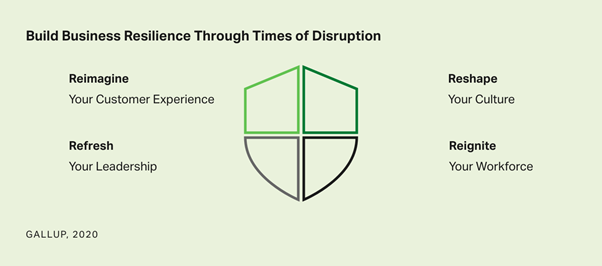
Resilience is a set of abilities
You may not be able to affect the outcome of a highly stressful situation, but you can control how you interpret and respond to it. As resilience increases, so does your capacity to respond to situations in an effective and productive manner.
Part of fostering greater resilience is learning a skill set that includes:
• Recognizing and interpreting unpleasant situations for what they are. “This isn’t a doom-and-gloom scenario.” “Regardless of how painful this situation may be, there is an opportunity to learn and grow.” “I’m working to stay in the present moment.”
• Perseverance in the face of adversity.
• Having a defined set of objectives and a sense of direction.
• Seeing the big picture and accepting that adversity is an inevitable part of a life worth living.
• Leveraging one’s emotions to respond constructively instead of being controlled by one’s emotions.
• Keeping in touch with people and leveraging healthy, nurturing connections.
What is the significance of this?
There is mounting evidence to support the following assertions:
• Resilient people tend to do better in school and at work
• Resilient people can achieve more in their careers
• Resilience is a critical leadership trait
• Resilient people can enjoy happier and healthier lives
• Resilient people are more productive employees
As a result, developing persistence and tenacity is a crucial talent –maintaining these traits in the face of adversity requires resilience. Knowing how to recognize various stressors and how to manage with them boosts your ability to recover from hardship. You will be a happier and more productive employee as a result. As a result, many employers will ask you questions during the interview stage about how you have dealt with stress in the past or how you would handle a hypothetical circumstance if it occurred to you. These are some of the most typical interview questions.

Chapter 12: Leadership – Developing the Potential of Your Workplace
In the Marine Corps, I learned that people typically step up to the level of trust and responsibility you give them. I learned that if a person is failing to take responsibility and ownership of situations, it was likely due to the leader failing to properly delegate any kind of trust or control. Micromanagement squanders initiative and subordinate’s desire to take responsibility. An ethos of Marine Corps Leadership is to strive for “centralized control, decentralized execution,” This tenant acknowledges that there is a boss/leader/department head in control who sets a direction or intent, but the execution and front-line decisions that need to be made accordingly, were left to those at the lowest levels and the point of action – those who are “in the trenches.”
It’s common for 19 year-old Marines to make life-or-death decisions in wartime because the communication chain back to the centralized control would take so long the decision at hand would no longer be relevant. The same is true, though not as life-and-death, at any organization. In today’s business climate, organizations need to be able to shift and maneuver and adapt as quickly as possible in order to take advantage of opportunities. The only way allow an organization to develop this agility is to push decision-making authority down to the lowest levels possible. Of course there must also be a pull for decision-making authority at the lower levels; this is where fostering ownership and individual responsibility at every level is required.
To allow such an arrangement of decentralized execution to function, organizations rely on training and transparent communication. The lowest level employees who can make decisions MUST be very clear on what the intent and desired outcome of the leader who is accountable for said outcome. With this clear intent, employees at the lower levels can make good decisions from their perspective and front-line knowledge that will positively affect the overall goal of the organization or division.
Leadership is about allowing others to reach their full potential
A leader in the twenty-first century must be able to make the most of any scenario. They are fearless in challenging the current status quo and pushing the boundaries to improve things. The best leaders know how to get the most out of others because of these and other attributes; they help others to reach their maximum potential.
The type of leaders an employee is able to witness and learn from have a significant impact on shaping the future of that employee’s personal and professional future. Leaders impact everything from the lens through which employees perceive the world, the decisions they make, to how they manage their lives and careers. This is why so many of today’s top leaders were mentored by great leaders in the past. One’s ability to succeed as a leader is a result of the leaders and mentors they surround themselves with throughout theircareers.
Always keep in mind the leaders, mentors, and networks who are influencing your character growth as you chart out your career. When you do, you’ll gain a lot better understanding of how you will be influenced to think, act, and innovate.
When you find mentors who are eager to take an active interest in your progress and success, you know you’ve found the appropriate leader for your career growth. If your leader shows no interest, it doesn’t mean that you cannot learn from them by observation, but the direct impact may be limited. Continually ask yourself, “Do those I surround myself with and look up to encourage me to fulfill my full potential.
Each person brings their own set of experiences, values, cultural backgrounds, inspirations, and beliefs to the table. The finest leaders are those who are able to recognize and respect the distinctions that each person brings, as well as how to make the most of them. These leaders have the emotional intelligence to connect the dots and opportunities within each dot in order to help each of their employees reach their maximum potential.
Great leadres know how to push you out of your comfort zone to see how far you can go. They look at how far you can push yourself and whether you accept the challenges. When they never allow you to become complacent and are continuously testing and helping you expand your skill sets and capacities to prepare you for the next phase of your career, you know you’ve found the appropriate leader in your profession.
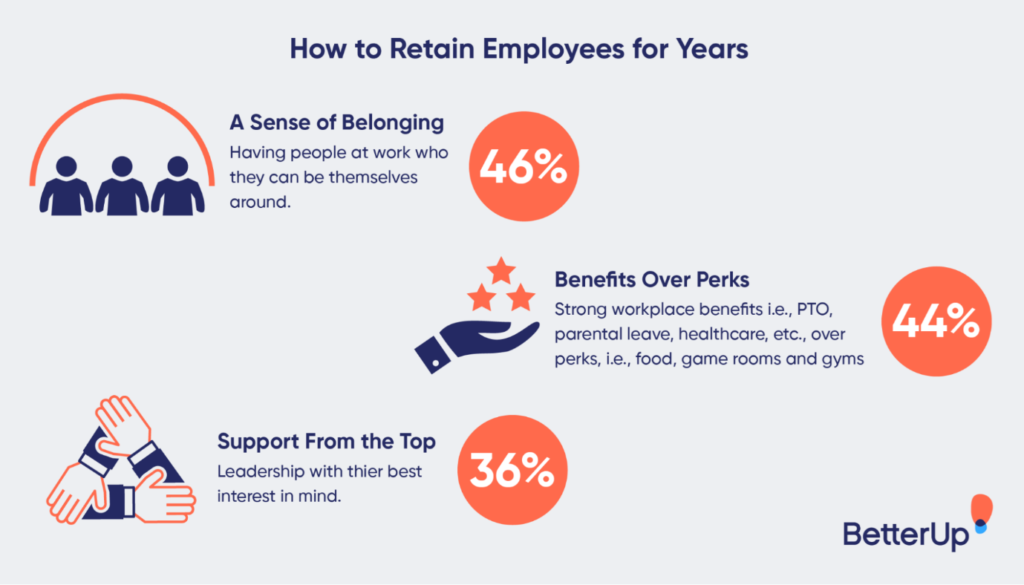
Curriculum
Cultivating Potential – Workshop 1 – Framework Potential
- An Introduction to Cultivating Human Potential
- The Human Potential Model for Performance
- Factors that Promote or Limit Human Potential
- 100% Responsibility – Taking Ownership
- Internalizing Locus of Control
- Equation for Responsibility
- The Indirect Sphere
- The Direct Sphere
- The Action Sphere (Equation for Results/Outcomes)
- Personal Integrity
- Improving Response/Increasing Resilience
- Leadership – Developing the Potential of Your Workplace
Distance Learning
Introduction
Welcome to Appleton Greene and thank you for enrolling on the Cultivating Potential corporate training program. You will be learning through our unique facilitation via distance-learning method, which will enable you to practically implement everything that you learn academically. The methods and materials used in your program have been designed and developed to ensure that you derive the maximum benefits and enjoyment possible. We hope that you find the program challenging and fun to do. However, if you have never been a distance-learner before, you may be experiencing some trepidation at the task before you. So we will get you started by giving you some basic information and guidance on how you can make the best use of the modules, how you should manage the materials and what you should be doing as you work through them. This guide is designed to point you in the right direction and help you to become an effective distance-learner. Take a few hours or so to study this guide and your guide to tutorial support for students, while making notes, before you start to study in earnest.
Study environment
You will need to locate a quiet and private place to study, preferably a room where you can easily be isolated from external disturbances or distractions. Make sure the room is well-lit and incorporates a relaxed, pleasant feel. If you can spoil yourself within your study environment, you will have much more of a chance to ensure that you are always in the right frame of mind when you do devote time to study. For example, a nice fire, the ability to play soft soothing background music, soft but effective lighting, perhaps a nice view if possible and a good size desk with a comfortable chair. Make sure that your family know when you are studying and understand your study rules. Your study environment is very important. The ideal situation, if at all possible, is to have a separate study, which can be devoted to you. If this is not possible then you will need to pay a lot more attention to developing and managing your study schedule, because it will affect other people as well as yourself. The better your study environment, the more productive you will be.
Study tools & rules
Try and make sure that your study tools are sufficient and in good working order. You will need to have access to a computer, scanner and printer, with access to the internet. You will need a very comfortable chair, which supports your lower back, and you will need a good filing system. It can be very frustrating if you are spending valuable study time trying to fix study tools that are unreliable, or unsuitable for the task. Make sure that your study tools are up to date. You will also need to consider some study rules. Some of these rules will apply to you and will be intended to help you to be more disciplined about when and how you study. This distance-learning guide will help you and after you have read it you can put some thought into what your study rules should be. You will also need to negotiate some study rules for your family, friends or anyone who lives with you. They too will need to be disciplined in order to ensure that they can support you while you study. It is important to ensure that your family and friends are an integral part of your study team. Having their support and encouragement can prove to be a crucial contribution to your successful completion of the program. Involve them in as much as you can.
Successful distance-learning
Distance-learners are freed from the necessity of attending regular classes or workshops, since they can study in their own way, at their own pace and for their own purposes. But unlike traditional internal training courses, it is the student’s responsibility, with a distance-learning program, to ensure that they manage their own study contribution. This requires strong self-discipline and self-motivation skills and there must be a clear will to succeed. Those students who are used to managing themselves, are good at managing others and who enjoy working in isolation, are more likely to be good distance-learners. It is also important to be aware of the main reasons why you are studying and of the main objectives that you are hoping to achieve as a result. You will need to remind yourself of these objectives at times when you need to motivate yourself. Never lose sight of your long-term goals and your short-term objectives. There is nobody available here to pamper you, or to look after you, or to spoon-feed you with information, so you will need to find ways to encourage and appreciate yourself while you are studying. Make sure that you chart your study progress, so that you can be sure of your achievements and re-evaluate your goals and objectives regularly.
Self-assessment
Appleton Greene training programs are in all cases post-graduate programs. Consequently, you should already have obtained a business-related degree and be an experienced learner. You should therefore already be aware of your study strengths and weaknesses. For example, which time of the day are you at your most productive? Are you a lark or an owl? What study methods do you respond to the most? Are you a consistent learner? How do you discipline yourself? How do you ensure that you enjoy yourself while studying? It is important to understand yourself as a learner and so some self-assessment early on will be necessary if you are to apply yourself correctly. Perform a SWOT analysis on yourself as a student. List your internal strengths and weaknesses as a student and your external opportunities and threats. This will help you later on when you are creating a study plan. You can then incorporate features within your study plan that can ensure that you are playing to your strengths, while compensating for your weaknesses. You can also ensure that you make the most of your opportunities, while avoiding the potential threats to your success.
Accepting responsibility as a student
Training programs invariably require a significant investment, both in terms of what they cost and in the time that you need to contribute to study and the responsibility for successful completion of training programs rests entirely with the student. This is never more apparent than when a student is learning via distance-learning. Accepting responsibility as a student is an important step towards ensuring that you can successfully complete your training program. It is easy to instantly blame other people or factors when things go wrong. But the fact of the matter is that if a failure is your failure, then you have the power to do something about it, it is entirely in your own hands. If it is always someone else’s failure, then you are powerless to do anything about it. All students study in entirely different ways, this is because we are all individuals and what is right for one student, is not necessarily right for another. In order to succeed, you will have to accept personal responsibility for finding a way to plan, implement and manage a personal study plan that works for you. If you do not succeed, you only have yourself to blame.
Planning
By far the most critical contribution to stress, is the feeling of not being in control. In the absence of planning we tend to be reactive and can stumble from pillar to post in the hope that things will turn out fine in the end. Invariably they don’t! In order to be in control, we need to have firm ideas about how and when we want to do things. We also need to consider as many possible eventualities as we can, so that we are prepared for them when they happen. Prescriptive Change, is far easier to manage and control, than Emergent Change. The same is true with distance-learning. It is much easier and much more enjoyable, if you feel that you are in control and that things are going to plan. Even when things do go wrong, you are prepared for them and can act accordingly without any unnecessary stress. It is important therefore that you do take time to plan your studies properly.
Management
Once you have developed a clear study plan, it is of equal importance to ensure that you manage the implementation of it. Most of us usually enjoy planning, but it is usually during implementation when things go wrong. Targets are not met and we do not understand why. Sometimes we do not even know if targets are being met. It is not enough for us to conclude that the study plan just failed. If it is failing, you will need to understand what you can do about it. Similarly if your study plan is succeeding, it is still important to understand why, so that you can improve upon your success. You therefore need to have guidelines for self-assessment so that you can be consistent with performance improvement throughout the program. If you manage things correctly, then your performance should constantly improve throughout the program.
Study objectives & tasks
The first place to start is developing your program objectives. These should feature your reasons for undertaking the training program in order of priority. Keep them succinct and to the point in order to avoid confusion. Do not just write the first things that come into your head because they are likely to be too similar to each other. Make a list of possible departmental headings, such as: Customer Service; E-business; Finance; Globalization; Human Resources; Technology; Legal; Management; Marketing and Production. Then brainstorm for ideas by listing as many things that you want to achieve under each heading and later re-arrange these things in order of priority. Finally, select the top item from each department heading and choose these as your program objectives. Try and restrict yourself to five because it will enable you to focus clearly. It is likely that the other things that you listed will be achieved if each of the top objectives are achieved. If this does not prove to be the case, then simply work through the process again.
Study forecast
As a guide, the Appleton Greene Cultivating Potential corporate training program should take 12-18 months to complete, depending upon your availability and current commitments. The reason why there is such a variance in time estimates is because every student is an individual, with differing productivity levels and different commitments. These differentiations are then exaggerated by the fact that this is a distance-learning program, which incorporates the practical integration of academic theory as an as a part of the training program. Consequently all of the project studies are real, which means that important decisions and compromises need to be made. You will want to get things right and will need to be patient with your expectations in order to ensure that they are. We would always recommend that you are prudent with your own task and time forecasts, but you still need to develop them and have a clear indication of what are realistic expectations in your case. With reference to your time planning: consider the time that you can realistically dedicate towards study with the program every week; calculate how long it should take you to complete the program, using the guidelines featured here; then break the program down into logical modules and allocate a suitable proportion of time to each of them, these will be your milestones; you can create a time plan by using a spreadsheet on your computer, or a personal organizer such as MS Outlook, you could also use a financial forecasting software; break your time forecasts down into manageable chunks of time, the more specific you can be, the more productive and accurate your time management will be; finally, use formulas where possible to do your time calculations for you, because this will help later on when your forecasts need to change in line with actual performance. With reference to your task planning: refer to your list of tasks that need to be undertaken in order to achieve your program objectives; with reference to your time plan, calculate when each task should be implemented; remember that you are not estimating when your objectives will be achieved, but when you will need to focus upon implementing the corresponding tasks; you also need to ensure that each task is implemented in conjunction with the associated training modules which are relevant; then break each single task down into a list of specific to do’s, say approximately ten to do’s for each task and enter these into your study plan; once again you could use MS Outlook to incorporate both your time and task planning and this could constitute your study plan; you could also use a project management software like MS Project. You should now have a clear and realistic forecast detailing when you can expect to be able to do something about undertaking the tasks to achieve your program objectives.
Performance management
It is one thing to develop your study forecast, it is quite another to monitor your progress. Ultimately it is less important whether you achieve your original study forecast and more important that you update it so that it constantly remains realistic in line with your performance. As you begin to work through the program, you will begin to have more of an idea about your own personal performance and productivity levels as a distance-learner. Once you have completed your first study module, you should re-evaluate your study forecast for both time and tasks, so that they reflect your actual performance level achieved. In order to achieve this you must first time yourself while training by using an alarm clock. Set the alarm for hourly intervals and make a note of how far you have come within that time. You can then make a note of your actual performance on your study plan and then compare your performance against your forecast. Then consider the reasons that have contributed towards your performance level, whether they are positive or negative and make a considered adjustment to your future forecasts as a result. Given time, you should start achieving your forecasts regularly.
With reference to time management: time yourself while you are studying and make a note of the actual time taken in your study plan; consider your successes with time-efficiency and the reasons for the success in each case and take this into consideration when reviewing future time planning; consider your failures with time-efficiency and the reasons for the failures in each case and take this into consideration when reviewing future time planning; re-evaluate your study forecast in relation to time planning for the remainder of your training program to ensure that you continue to be realistic about your time expectations. You need to be consistent with your time management, otherwise you will never complete your studies. This will either be because you are not contributing enough time to your studies, or you will become less efficient with the time that you do allocate to your studies. Remember, if you are not in control of your studies, they can just become yet another cause of stress for you.
With reference to your task management: time yourself while you are studying and make a note of the actual tasks that you have undertaken in your study plan; consider your successes with task-efficiency and the reasons for the success in each case; take this into consideration when reviewing future task planning; consider your failures with task-efficiency and the reasons for the failures in each case and take this into consideration when reviewing future task planning; re-evaluate your study forecast in relation to task planning for the remainder of your training program to ensure that you continue to be realistic about your task expectations. You need to be consistent with your task management, otherwise you will never know whether you are achieving your program objectives or not.
Keeping in touch
You will have access to qualified and experienced professors and tutors who are responsible for providing tutorial support for your particular training program. So don’t be shy about letting them know how you are getting on. We keep electronic records of all tutorial support emails so that professors and tutors can review previous correspondence before considering an individual response. It also means that there is a record of all communications between you and your professors and tutors and this helps to avoid any unnecessary duplication, misunderstanding, or misinterpretation. If you have a problem relating to the program, share it with them via email. It is likely that they have come across the same problem before and are usually able to make helpful suggestions and steer you in the right direction. To learn more about when and how to use tutorial support, please refer to the Tutorial Support section of this student information guide. This will help you to ensure that you are making the most of tutorial support that is available to you and will ultimately contribute towards your success and enjoyment with your training program.
Work colleagues and family
You should certainly discuss your program study progress with your colleagues, friends and your family. Appleton Greene training programs are very practical. They require you to seek information from other people, to plan, develop and implement processes with other people and to achieve feedback from other people in relation to viability and productivity. You will therefore have plenty of opportunities to test your ideas and enlist the views of others. People tend to be sympathetic towards distance-learners, so don’t bottle it all up in yourself. Get out there and share it! It is also likely that your family and colleagues are going to benefit from your labors with the program, so they are likely to be much more interested in being involved than you might think. Be bold about delegating work to those who might benefit themselves. This is a great way to achieve understanding and commitment from people who you may later rely upon for process implementation. Share your experiences with your friends and family.
Making it relevant
The key to successful learning is to make it relevant to your own individual circumstances. At all times you should be trying to make bridges between the content of the program and your own situation. Whether you achieve this through quiet reflection or through interactive discussion with your colleagues, client partners or your family, remember that it is the most important and rewarding aspect of translating your studies into real self-improvement. You should be clear about how you want the program to benefit you. This involves setting clear study objectives in relation to the content of the course in terms of understanding, concepts, completing research or reviewing activities and relating the content of the modules to your own situation. Your objectives may understandably change as you work through the program, in which case you should enter the revised objectives on your study plan so that you have a permanent reminder of what you are trying to achieve, when and why.
Distance-learning check-list
Prepare your study environment, your study tools and rules.
Undertake detailed self-assessment in terms of your ability as a learner.
Create a format for your study plan.
Consider your study objectives and tasks.
Create a study forecast.
Assess your study performance.
Re-evaluate your study forecast.
Be consistent when managing your study plan.
Use your Appleton Greene Certified Learning Provider (CLP) for tutorial support.
Make sure you keep in touch with those around you.

Tutorial Support
Programs
Appleton Greene uses standard and bespoke corporate training programs as vessels to transfer business process improvement knowledge into the heart of our clients’ organizations. Each individual program focuses upon the implementation of a specific business process, which enables clients to easily quantify their return on investment. There are hundreds of established Appleton Greene corporate training products now available to clients within customer services, e-business, finance, globalization, human resources, information technology, legal, management, marketing and production. It does not matter whether a client’s employees are located within one office, or an unlimited number of international offices, we can still bring them together to learn and implement specific business processes collectively. Our approach to global localization enables us to provide clients with a truly international service with that all important personal touch. Appleton Greene corporate training programs can be provided virtually or locally and they are all unique in that they individually focus upon a specific business function. They are implemented over a sustainable period of time and professional support is consistently provided by qualified learning providers and specialist consultants.
Support available
You will have a designated Certified Learning Provider (CLP) and an Accredited Consultant and we encourage you to communicate with them as much as possible. In all cases tutorial support is provided online because we can then keep a record of all communications to ensure that tutorial support remains consistent. You would also be forwarding your work to the tutorial support unit for evaluation and assessment. You will receive individual feedback on all of the work that you undertake on a one-to-one basis, together with specific recommendations for anything that may need to be changed in order to achieve a pass with merit or a pass with distinction and you then have as many opportunities as you may need to re-submit project studies until they meet with the required standard. Consequently the only reason that you should really fail (CLP) is if you do not do the work. It makes no difference to us whether a student takes 12 months or 18 months to complete the program, what matters is that in all cases the same quality standard will have been achieved.
Support Process
Please forward all of your future emails to the designated (CLP) Tutorial Support Unit email address that has been provided and please do not duplicate or copy your emails to other AGC email accounts as this will just cause unnecessary administration. Please note that emails are always answered as quickly as possible but you will need to allow a period of up to 20 business days for responses to general tutorial support emails during busy periods, because emails are answered strictly within the order in which they are received. You will also need to allow a period of up to 30 business days for the evaluation and assessment of project studies. This does not include weekends or public holidays. Please therefore kindly allow for this within your time planning. All communications are managed online via email because it enables tutorial service support managers to review other communications which have been received before responding and it ensures that there is a copy of all communications retained on file for future reference. All communications will be stored within your personal (CLP) study file here at Appleton Greene throughout your designated study period. If you need any assistance or clarification at any time, please do not hesitate to contact us by forwarding an email and remember that we are here to help. If you have any questions, please list and number your questions succinctly and you can then be sure of receiving specific answers to each and every query.
Time Management
It takes approximately 1 Year to complete the Cultivating Potential corporate training program, incorporating 12 x 6-hour monthly workshops. Each student will also need to contribute approximately 4 hours per week over 1 Year of their personal time. Students can study from home or work at their own pace and are responsible for managing their own study plan. There are no formal examinations and students are evaluated and assessed based upon their project study submissions, together with the quality of their internal analysis and supporting documents. They can contribute more time towards study when they have the time to do so and can contribute less time when they are busy. All students tend to be in full time employment while studying and the Cultivating Potential program is purposely designed to accommodate this, so there is plenty of flexibility in terms of time management. It makes no difference to us at Appleton Greene, whether individuals take 12-18 months to complete this program. What matters is that in all cases the same standard of quality will have been achieved with the standard and bespoke programs that have been developed.
Distance Learning Guide
The distance learning guide should be your first port of call when starting your training program. It will help you when you are planning how and when to study, how to create the right environment and how to establish the right frame of mind. If you can lay the foundations properly during the planning stage, then it will contribute to your enjoyment and productivity while training later. The guide helps to change your lifestyle in order to accommodate time for study and to cultivate good study habits. It helps you to chart your progress so that you can measure your performance and achieve your goals. It explains the tools that you will need for study and how to make them work. It also explains how to translate academic theory into practical reality. Spend some time now working through your distance learning guide and make sure that you have firm foundations in place so that you can make the most of your distance learning program. There is no requirement for you to attend training workshops or classes at Appleton Greene offices. The entire program is undertaken online, program course manuals and project studies are administered via the Appleton Greene web site and via email, so you are able to study at your own pace and in the comfort of your own home or office as long as you have a computer and access to the internet.
How To Study
The how to study guide provides students with a clear understanding of the Appleton Greene facilitation via distance learning training methods and enables students to obtain a clear overview of the training program content. It enables students to understand the step-by-step training methods used by Appleton Greene and how course manuals are integrated with project studies. It explains the research and development that is required and the need to provide evidence and references to support your statements. It also enables students to understand precisely what will be required of them in order to achieve a pass with merit and a pass with distinction for individual project studies and provides useful guidance on how to be innovative and creative when developing your Unique Program Proposition (UPP).
Tutorial Support
Tutorial support for the Appleton Greene Cultivating Potential corporate training program is provided online either through the Appleton Greene Client Support Portal (CSP), or via email. All tutorial support requests are facilitated by a designated Program Administration Manager (PAM). They are responsible for deciding which professor or tutor is the most appropriate option relating to the support required and then the tutorial support request is forwarded onto them. Once the professor or tutor has completed the tutorial support request and answered any questions that have been asked, this communication is then returned to the student via email by the designated Program Administration Manager (PAM). This enables all tutorial support, between students, professors and tutors, to be facilitated by the designated Program Administration Manager (PAM) efficiently and securely through the email account. You will therefore need to allow a period of up to 20 business days for responses to general support queries and up to 30 business days for the evaluation and assessment of project studies, because all tutorial support requests are answered strictly within the order in which they are received. This does not include weekends or public holidays. Consequently you need to put some thought into the management of your tutorial support procedure in order to ensure that your study plan is feasible and to obtain the maximum possible benefit from tutorial support during your period of study. Please retain copies of your tutorial support emails for future reference. Please ensure that ALL of your tutorial support emails are set out using the format as suggested within your guide to tutorial support. Your tutorial support emails need to be referenced clearly to the specific part of the course manual or project study which you are working on at any given time. You also need to list and number any questions that you would like to ask, up to a maximum of five questions within each tutorial support email. Remember the more specific you can be with your questions the more specific your answers will be too and this will help you to avoid any unnecessary misunderstanding, misinterpretation, or duplication. The guide to tutorial support is intended to help you to understand how and when to use support in order to ensure that you get the most out of your training program. Appleton Greene training programs are designed to enable you to do things for yourself. They provide you with a structure or a framework and we use tutorial support to facilitate students while they practically implement what they learn. In other words, we are enabling students to do things for themselves. The benefits of distance learning via facilitation are considerable and are much more sustainable in the long-term than traditional short-term knowledge sharing programs. Consequently you should learn how and when to use tutorial support so that you can maximize the benefits from your learning experience with Appleton Greene. This guide describes the purpose of each training function and how to use them and how to use tutorial support in relation to each aspect of the training program. It also provides useful tips and guidance with regard to best practice.
Tutorial Support Tips
Students are often unsure about how and when to use tutorial support with Appleton Greene. This Tip List will help you to understand more about how to achieve the most from using tutorial support. Refer to it regularly to ensure that you are continuing to use the service properly. Tutorial support is critical to the success of your training experience, but it is important to understand when and how to use it in order to maximize the benefit that you receive. It is no coincidence that those students who succeed are those that learn how to be positive, proactive and productive when using tutorial support.
Be positive and friendly with your tutorial support emails
Remember that if you forward an email to the tutorial support unit, you are dealing with real people. “Do unto others as you would expect others to do unto you”. If you are positive, complimentary and generally friendly in your emails, you will generate a similar response in return. This will be more enjoyable, productive and rewarding for you in the long-term.
Think about the impression that you want to create
Every time that you communicate, you create an impression, which can be either positive or negative, so put some thought into the impression that you want to create. Remember that copies of all tutorial support emails are stored electronically and tutors will always refer to prior correspondence before responding to any current emails. Over a period of time, a general opinion will be arrived at in relation to your character, attitude and ability. Try to manage your own frustrations, mood swings and temperament professionally, without involving the tutorial support team. Demonstrating frustration or a lack of patience is a weakness and will be interpreted as such. The good thing about communicating in writing, is that you will have the time to consider your content carefully, you can review it and proof-read it before sending your email to Appleton Greene and this should help you to communicate more professionally, consistently and to avoid any unnecessary knee-jerk reactions to individual situations as and when they may arise. Please also remember that the CLP Tutorial Support Unit will not just be responsible for evaluating and assessing the quality of your work, they will also be responsible for providing recommendations to other learning providers and to client contacts within the Appleton Greene global client network, so do be in control of your own emotions and try to create a good impression.
Remember that quality is preferred to quantity
Please remember that when you send an email to the tutorial support team, you are not using Twitter or Text Messaging. Try not to forward an email every time that you have a thought. This will not prove to be productive either for you or for the tutorial support team. Take time to prepare your communications properly, as if you were writing a professional letter to a business colleague and make a list of queries that you are likely to have and then incorporate them within one email, say once every month, so that the tutorial support team can understand more about context, application and your methodology for study. Get yourself into a consistent routine with your tutorial support requests and use the tutorial support template provided with ALL of your emails. The (CLP) Tutorial Support Unit will not spoon-feed you with information. They need to be able to evaluate and assess your tutorial support requests carefully and professionally.
Be specific about your questions in order to receive specific answers
Try not to write essays by thinking as you are writing tutorial support emails. The tutorial support unit can be unclear about what in fact you are asking, or what you are looking to achieve. Be specific about asking questions that you want answers to. Number your questions. You will then receive specific answers to each and every question. This is the main purpose of tutorial support via email.
Keep a record of your tutorial support emails
It is important that you keep a record of all tutorial support emails that are forwarded to you. You can then refer to them when necessary and it avoids any unnecessary duplication, misunderstanding, or misinterpretation.
Individual training workshops or telephone support
Please be advised that Appleton Greene does not provide separate or individual tutorial support meetings, workshops, or provide telephone support for individual students. Appleton Greene is an equal opportunities learning and service provider and we are therefore understandably bound to treat all students equally. We cannot therefore broker special financial or study arrangements with individual students regardless of the circumstances. All tutorial support is provided online and this enables Appleton Greene to keep a record of all communications between students, professors and tutors on file for future reference, in accordance with our quality management procedure and your terms and conditions of enrolment. All tutorial support is provided online via email because it enables us to have time to consider support content carefully, it ensures that you receive a considered and detailed response to your queries. You can number questions that you would like to ask, which relate to things that you do not understand or where clarification may be required. You can then be sure of receiving specific answers to each individual query. You will also then have a record of these communications and of all tutorial support, which has been provided to you. This makes tutorial support administration more productive by avoiding any unnecessary duplication, misunderstanding, or misinterpretation.
Tutorial Support Email Format
You should use this tutorial support format if you need to request clarification or assistance while studying with your training program. Please note that ALL of your tutorial support request emails should use the same format. You should therefore set up a standard email template, which you can then use as and when you need to. Emails that are forwarded to Appleton Greene, which do not use the following format, may be rejected and returned to you by the (CLP) Program Administration Manager. A detailed response will then be forwarded to you via email usually within 20 business days of receipt for general support queries and 30 business days for the evaluation and assessment of project studies. This does not include weekends or public holidays. Your tutorial support request, together with the corresponding TSU reply, will then be saved and stored within your electronic TSU file at Appleton Greene for future reference.
Subject line of your email
Please insert: Appleton Greene (CLP) Tutorial Support Request: (Your Full Name) (Date), within the subject line of your email.
Main body of your email
Please insert:
1. Appleton Greene Certified Learning Provider (CLP) Tutorial Support Request
2. Your Full Name
3. Date of TS request
4. Preferred email address
5. Backup email address
6. Course manual page name or number (reference)
7. Project study page name or number (reference)
Subject of enquiry
Please insert a maximum of 50 words (please be succinct)
Briefly outline the subject matter of your inquiry, or what your questions relate to.
Question 1
Maximum of 50 words (please be succinct)
Question 2
Maximum of 50 words (please be succinct)
Question 3
Maximum of 50 words (please be succinct)
Question 4
Maximum of 50 words (please be succinct)
Question 5
Maximum of 50 words (please be succinct)
Please note that a maximum of 5 questions is permitted with each individual tutorial support request email.
Procedure
* List the questions that you want to ask first, then re-arrange them in order of priority. Make sure that you reference them, where necessary, to the course manuals or project studies.
* Make sure that you are specific about your questions and number them. Try to plan the content within your emails to make sure that it is relevant.
* Make sure that your tutorial support emails are set out correctly, using the Tutorial Support Email Format provided here.
* Save a copy of your email and incorporate the date sent after the subject title. Keep your tutorial support emails within the same file and in date order for easy reference.
* Allow up to 20 business days for a response to general tutorial support emails and up to 30 business days for the evaluation and assessment of project studies, because detailed individual responses will be made in all cases and tutorial support emails are answered strictly within the order in which they are received.
* Emails can and do get lost. So if you have not received a reply within the appropriate time, forward another copy or a reminder to the tutorial support unit to be sure that it has been received but do not forward reminders unless the appropriate time has elapsed.
* When you receive a reply, save it immediately featuring the date of receipt after the subject heading for easy reference. In most cases the tutorial support unit replies to your questions individually, so you will have a record of the questions that you asked as well as the answers offered. With project studies however, separate emails are usually forwarded by the tutorial support unit, so do keep a record of your own original emails as well.
* Remember to be positive and friendly in your emails. You are dealing with real people who will respond to the same things that you respond to.
* Try not to repeat questions that have already been asked in previous emails. If this happens the tutorial support unit will probably just refer you to the appropriate answers that have already been provided within previous emails.
* If you lose your tutorial support email records you can write to Appleton Greene to receive a copy of your tutorial support file, but a separate administration charge may be levied for this service.

How To Study
Your Certified Learning Provider (CLP) and Accredited Consultant can help you to plan a task list for getting started so that you can be clear about your direction and your priorities in relation to your training program. It is also a good way to introduce yourself to the tutorial support team.
Planning your study environment
Your study conditions are of great importance and will have a direct effect on how much you enjoy your training program. Consider how much space you will have, whether it is comfortable and private and whether you are likely to be disturbed. The study tools and facilities at your disposal are also important to the success of your distance-learning experience. Your tutorial support unit can help with useful tips and guidance, regardless of your starting position. It is important to get this right before you start working on your training program.
Planning your program objectives
It is important that you have a clear list of study objectives, in order of priority, before you start working on your training program. Your tutorial support unit can offer assistance here to ensure that your study objectives have been afforded due consideration and priority.
Planning how and when to study
Distance-learners are freed from the necessity of attending regular classes, since they can study in their own way, at their own pace and for their own purposes. This approach is designed to let you study efficiently away from the traditional classroom environment. It is important however, that you plan how and when to study, so that you are making the most of your natural attributes, strengths and opportunities. Your tutorial support unit can offer assistance and useful tips to ensure that you are playing to your strengths.
Planning your study tasks
You should have a clear understanding of the study tasks that you should be undertaking and the priority associated with each task. These tasks should also be integrated with your program objectives. The distance learning guide and the guide to tutorial support for students should help you here, but if you need any clarification or assistance, please contact your tutorial support unit.
Planning your time
You will need to allocate specific times during your calendar when you intend to study if you are to have a realistic chance of completing your program on time. You are responsible for planning and managing your own study time, so it is important that you are successful with this. Your tutorial support unit can help you with this if your time plan is not working.
Keeping in touch
Consistency is the key here. If you communicate too frequently in short bursts, or too infrequently with no pattern, then your management ability with your studies will be questioned, both by you and by your tutorial support unit. It is obvious when a student is in control and when one is not and this will depend how able you are at sticking with your study plan. Inconsistency invariably leads to in-completion.
Charting your progress
Your tutorial support team can help you to chart your own study progress. Refer to your distance learning guide for further details.
Making it work
To succeed, all that you will need to do is apply yourself to undertaking your training program and interpreting it correctly. Success or failure lies in your hands and your hands alone, so be sure that you have a strategy for making it work. Your Certified Learning Provider (CLP) and Accredited Consultant can guide you through the process of program planning, development and implementation.
Reading methods
Interpretation is often unique to the individual but it can be improved and even quantified by implementing consistent interpretation methods. Interpretation can be affected by outside interference such as family members, TV, or the Internet, or simply by other thoughts which are demanding priority in our minds. One thing that can improve our productivity is using recognized reading methods. This helps us to focus and to be more structured when reading information for reasons of importance, rather than relaxation.
Speed reading
When reading through course manuals for the first time, subconsciously set your reading speed to be just fast enough that you cannot dwell on individual words or tables. With practice, you should be able to read an A4 sheet of paper in one minute. You will not achieve much in the way of a detailed understanding, but your brain will retain a useful overview. This overview will be important later on and will enable you to keep individual issues in perspective with a more generic picture because speed reading appeals to the memory part of the brain. Do not worry about what you do or do not remember at this stage.
Content reading
Once you have speed read everything, you can then start work in earnest. You now need to read a particular section of your course manual thoroughly, by making detailed notes while you read. This process is called Content Reading and it will help to consolidate your understanding and interpretation of the information that has been provided.
Making structured notes on the course manuals
When you are content reading, you should be making detailed notes, which are both structured and informative. Make these notes in a MS Word document on your computer, because you can then amend and update these as and when you deem it to be necessary. List your notes under three headings: 1. Interpretation – 2. Questions – 3. Tasks. The purpose of the 1st section is to clarify your interpretation by writing it down. The purpose of the 2nd section is to list any questions that the issue raises for you. The purpose of the 3rd section is to list any tasks that you should undertake as a result. Anyone who has graduated with a business-related degree should already be familiar with this process.
Organizing structured notes separately
You should then transfer your notes to a separate study notebook, preferably one that enables easy referencing, such as a MS Word Document, a MS Excel Spreadsheet, a MS Access Database, or a personal organizer on your cell phone. Transferring your notes allows you to have the opportunity of cross-checking and verifying them, which assists considerably with understanding and interpretation. You will also find that the better you are at doing this, the more chance you will have of ensuring that you achieve your study objectives.
Question your understanding
Do challenge your understanding. Explain things to yourself in your own words by writing things down.
Clarifying your understanding
If you are at all unsure, forward an email to your tutorial support unit and they will help to clarify your understanding.
Question your interpretation
Do challenge your interpretation. Qualify your interpretation by writing it down.
Clarifying your interpretation
If you are at all unsure, forward an email to your tutorial support unit and they will help to clarify your interpretation.
Qualification Requirements
The student will need to successfully complete the project study and all of the exercises relating to the Cultivating Potential corporate training program, achieving a pass with merit or distinction in each case, in order to qualify as an Accredited Cultivating Potential Specialist (ACPS). All monthly workshops need to be tried and tested within your company. These project studies can be completed in your own time and at your own pace and in the comfort of your own home or office. There are no formal examinations, assessment is based upon the successful completion of the project studies. They are called project studies because, unlike case studies, these projects are not theoretical, they incorporate real program processes that need to be properly researched and developed. The project studies assist us in measuring your understanding and interpretation of the training program and enable us to assess qualification merits. All of the project studies are based entirely upon the content within the training program and they enable you to integrate what you have learnt into your corporate training practice.
Cultivating Potential – Grading Contribution
Project Study – Grading Contribution
Customer Service – 10%
E-business – 05%
Finance – 10%
Globalization – 10%
Human Resources – 10%
Information Technology – 10%
Legal – 05%
Management – 10%
Marketing – 10%
Production – 10%
Education – 05%
Logistics – 05%
TOTAL GRADING – 100%
Qualification grades
A mark of 90% = Pass with Distinction.
A mark of 75% = Pass with Merit.
A mark of less than 75% = Fail.
If you fail to achieve a mark of 75% with a project study, you will receive detailed feedback from the Certified Learning Provider (CLP) and/or Accredited Consultant, together with a list of tasks which you will need to complete, in order to ensure that your project study meets with the minimum quality standard that is required by Appleton Greene. You can then re-submit your project study for further evaluation and assessment. Indeed you can re-submit as many drafts of your project studies as you need to, until such a time as they eventually meet with the required standard by Appleton Greene, so you need not worry about this, it is all part of the learning process.
When marking project studies, Appleton Greene is looking for sufficient evidence of the following:
Pass with merit
A satisfactory level of program understanding
A satisfactory level of program interpretation
A satisfactory level of project study content presentation
A satisfactory level of Unique Program Proposition (UPP) quality
A satisfactory level of the practical integration of academic theory
Pass with distinction
An exceptional level of program understanding
An exceptional level of program interpretation
An exceptional level of project study content presentation
An exceptional level of Unique Program Proposition (UPP) quality
An exceptional level of the practical integration of academic theory
Preliminary Analysis
Prelude about reaching one’s full potential (that of an individual or that of an organization) is akin to figuring out the combination to a lock. To cultivate potential, there are specific fundamentals that must be in place. Some well-intended and well-performing companies just aren’t breaking through to their full potential and it’s not because they aren’t trying or because they do not have many of the fundamentals in place. If you are missing one number to a combination, the lock will not open. If you are missing a core fundamental to potential, you will not unlock the highest levels of performance and success. This program, Cultivating Potential, is designed to help you and your organization get all of the numbers to the lock and arrange them in the right order so you can unlock the full potential of everyone involved.
Reflective Questions:
1. In concert with this analogy, what factors do you feel are “correct numbers” and are working for you and your organization’s potential?
2. What does an ideal situation look like for you and your life? Imagine one year from now you are sharing your life situation with a close friend and you are explaining just how incredible everything has become. Describe: How you know what you’re experiencing is ideal; what you are doing; how you are spending your time; where you’re living; how you feel when going to work and when heading home.
3. Now, what does your ideal experience look like from a professional perspective? Imagine you are conversing with an old acquaintance about work and what your organization is doing. How do you know your organization is reaching its highest potential and making the greatest impact in the marketplace? Describe: what projects your organization is working on; the kind of growth or expansion that is taking place; how employees engage and interact; what major awards or milestones is the company achieving.
4. Lastly, take the simple assessment provided and respond how your current situation is on the following scale: 0 to 10, with 0 being the worst case and 10 being perfect.
In the following areas of your life, how would you rate:
a. Your Health
b. Your Recreation and Free Time
c. Your Relationships
d. Your Finances
e. Your Education and/or Professional Development
Now, considering your company, how would you rate:
a. The Level of Performance Compared to the Industry
b. The Feel of the Workplace Environment
c. Effectiveness of Leadership
d. The Level of Innovation and Growth
e. The Workplace Culture
Next, for any number less than a 10, jot down a few reasons why you ranked it as highly as you did. Then, record some ideas about what would have to happen or change to make the score a 10.

Further Reading:
Research Article
“Human Potential Realization: Igniting employee happiness AND unlocking business performance
By Mark Vandeneijnde,
Co-Founder at BEING at Full Potential,
Published Mar 26, 2018
This article is a must read for all employers looking for the next breakthrough in organizational performance. It lays out the challenges we face in today’s organizational world and provides scientific proof that Human Potential Realization is the key to create happier workplaces that in turn will unleash the next wave of value creation in organizations.
1. BACKGROUND
According to a recent Gallup study only 13% of employees are engaged at work, costing US companies roughly $450-550 Billion annually. It seems that focusing on employee happiness is the key to reversing this trend. Research at the University of Warwick found that the experience of happiness led to a 12% spike in productivity, while unhappy workers proved 10% less productive. Similarly, the extensive “Science of Happiness at Work” research done by iOpener Institute in the UK found that the happiest employees:
• Take one tenth the sick-leave of their least happy colleagues
• Are six times more energized
• Intend to stay twice as long in their organizations
• Are twice as productive
This is common sense: human happiness has a large and positive causal effect on productivity. This much is known and having data to prove it is helpful to draw the attention of Organizational Development (OD) & HR professionals. What is less clear however is how to SUSTAINABLY create organizational cultures where employees FEEL happy. In other words what are the deeper drivers of happiness?
2. WHAT IS HAPPINESS?
The answer to this question DOES NOT lie in better benefits, higher pay, promotions etc….These extrinsic factors might provide a brief boost in the sensation of happiness but it will not be sustainable. Before long we will take the new level of pay or increased responsibility for granted and yearn for the next wave of external recognition.
Our deep held belief at BEING at Full Potential is that true, sustainable happiness originates from a deeper place within, a place of inner fulfillment. We have found that when we ignite the Human Spirit, and find opportunities to utilize our unique gifts and talents in service of a meaningful cause, our lives automatically get filled with joy, happiness and bliss. In other words, true happiness is simply an inner choice for a more abundant & aligned approach to life. This is great news because inner happiness is fully within our own control! A 2012 Harvard Business Review article refers to this as “Positive Intelligence”. They have found that there is a 12% increase in productivity when the mindset of gratitude and acknowledgment are practiced on a daily basis.
3. A HOLISTIC FRAMEWORK TO MEASURE AND PREDICT EMPLOYEE HAPPINESS
We, at Being at Full Potential, recognize that this whole inner dimension of mindset and attitude can be difficult to grasp and act on, especially in the organizational context. Without a holistic framework that breaks down the INNER BEING into concrete dimensions that we can measure and implement in systematic ways, very little action will be taken to sustainably boost employee happiness in the workplace.
“What gets measured, gets done”
Addressing this need has been our source of inspiration and creativity over the past 10 years and has resulted in the development of the following “House” framework (see figure 1 below). In this model we look at the deeper drivers of Human BEINGNESS and measure the extent to which they are being expressed at a given point in time.
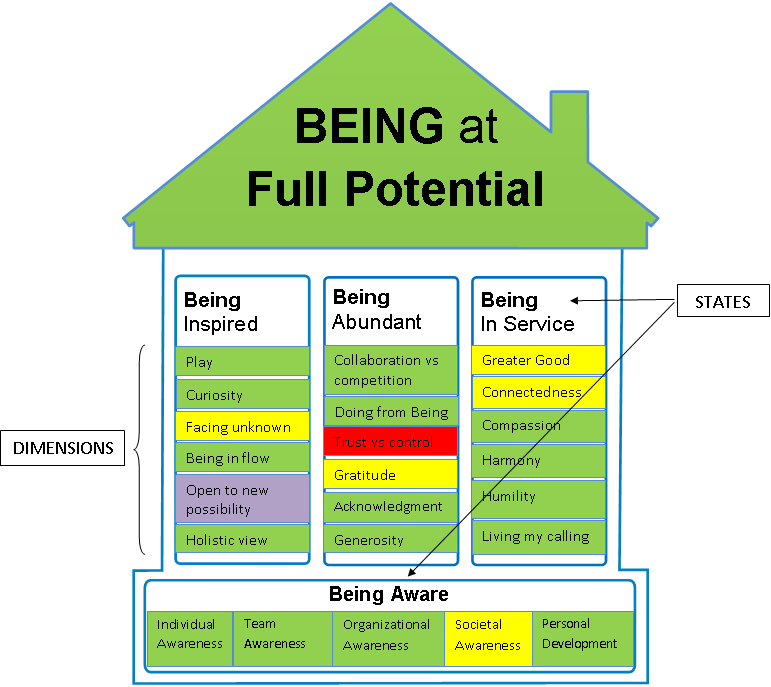
Not only can we measure the deeper drivers of Human Potential Realization, we can now also SCIENTIFICALLY PROVE that it correlates with HAPPINESS. Our recent research with Fontys University in the Netherlands has found that the more we step into our Human Potential by expressing each one of these 23 Dimensions, the happier and more fulfilled we will BE.
4. CORRELATING HUMAN POTENTIAL REALIZATION TO HAPPINESS
Our research with Fontys started with the following question: ‘What is the relationship between expressing our Human Potential, measured with the Human Potential Assessment (HPA), and HAPPINESS, measured with the Oxford Happiness Questionnaire (OHQ)?
In the period between September 2016 and March 2017 a sample of 100 people (including students and graduates who have recently joined the workforce) completed the Human Potential Assessment. In addition to the standard 83 questions for the HPA, this assessment also included the 8 questions used to measure the Oxford Happiness Index.
The researchers at Fontys University have successfully concluded that there is a high correlation (rs = .45, p <.01, two-tailed, N = 101) between the total scores of the HPA and the OHQ, with the strongest positive correlation (rs = .61, p <.05, two-tailed, N = 15) being in the age category of 36 to 48 years. Furthermore, the two dimensions of the Human Potential model: 'Individual Awareness' and 'Living my calling' have the highest correlation with the total score of the OHQ, namely rs = .54 and rs = .53 respectively. 5. WHAT DOES THIS MEAN FOR ORGANIZATIONAL DEVELOPMENT PROFESSIONALS?
For the first time we can now measure the deeper drivers of happiness and feel confident that addressing them will result in performance breakthroughs! Specifically, this research suggests we should be looking at initiatives that raise the awareness of an individual’s gifts & talents (individual awareness) and finding opportunities for them to bring more of who they are into their day to day work (Living my calling), both of which are proven to have the greatest impact on Happiness.
This same research with Fontys makes it abundantly clear that there is a lot of work for us to do in raising the Human Potential utilization of the younger generation joining the workforce (see House diagram – Figure 2). This is no surprise given today’s low employee engagement scores. However, now we know where to focus our attention and how to turn this unsustainable situation with into a huge opportunity!”
To continue reading this article, please visit:
https://www.linkedin.com/pulse/human-potential-realization-igniting-employee-mark-vandeneijnde

Research Paper
“A Model for Realizing Human Potential
By David Kazmer,
University of Massachusetts Lowell
Abstract The realization of human potential requires each individual to consider their future possibilities relative to their current capabilities so that they may develop and execute a plan to gain knowledge, experience, and opportunities. Accordingly, a model is herein presented in which an individual’s understanding of their own capabilities is informed by objective assessment after which that individual’s perception of future possibilities is supported with a probabilistic career tree diagram. The proposed model provides a detailed registry of the individual’s skills with indicia of scarcity relative to the needs of varying employment opportunities. In addition, the proposed model provides a roadmap for gaining knowledge and experience to advance and/or change careers.
The proposed model provides not only a personalized and dynamic program of education, assessment, and certifications but also access to potential employers for the gainful application of human resources through an auction system to garner and allocate resources. While an example is provided for an Associate’s of Science in Engineering degree using a variety of resources including Massively Open On-line Courses (MOOCs), the model is extensible to a diversity of professions and educational resources such as traditional college courses, industry seminars, and other hybrid programs that provide knowledge and abilities sought by employers. Each individual’s potential can thus be realized by helping each individual to rationally choose their own career plan as a function of requisite costs, benefits, and interests.
The proposed model is feasible from a technological perspective, and could significantly increase the rate of return on education across a lifelong career. While the proposed model could significantly lessen income disparity, it would not eliminate income inequality or the need for continuing social entitlements. Given current educational trends and societal pressures, policies related to program accreditation and professional licensure should be adapted to emphasize licensing of individuals rather than accreditation of programs.
Introduction
Our system of higher education is obsolete. Our students and practitioners are not well served by traditional academic programs graduating degreed engineers with classical curricula characteristic of earlier epochs. There are issues with both cost and breadth. Kazmer and Bardaro1 recently found that the rate of return using engineering education has declined to 6.5% from the 19.0% found forty years ago by Psacharopoulos2. Regarding breadth, Bigliardi et al3 advise managers of technical staff to develop and encourage lateral career moves of engineers, particularly for newcomers, by offering a variety of experiences that is likely to speed and better define their self-concept.
Of grave concern is widening income inequality, an inequality that potentially threatens our very social stability. Economist Tyler Cowen4, among other popular works5, 6, suggest that “average is over” and increased income inequality is inevitable. In Cowen’s opinion, the U.S. government will continue to provide increased entitlements (subsidized housing, food assistance, health care, and ultimately a guaranteed minimum annual income) to “recalibrate” societal norms and thereby avoid riot and revolt. Such a “recalibration” through public policy may be feasible, but is probably not optimal with respect to maximizing total human potential and quality of life. Cowen posits that the fundamental cause of increased income inequality is the lack of human motivation to increase his/her human capital, even with the theoretical availability of free and high quality education.
We believe that our educational system, public policies, and societal norms must evolve to facilitate the development of all human potential. The model proposed here supports the development and fulfillment of rational expectations through several elements each of which leverages open information flows and free market principles:
• Assessment of current capabilities through cloud-based administration of certifications, course transcripts, and endorsements to provide a detailed registry and analysis of human expertise, more robust and quantitative than a resume or LinkedIn profile;
• Synthesis of probabilistic career possibilities, presented as a tree diagram, each with an actionable roadmap of required courses, certifications, and experiences along with cost and time estimates to completion;
• Analysis of current and future salary profiles derived from big data such as federal salary reports and self-reported data to provide cost: benefit analysis of potential investments;
• Facilitation of negotiations between individuals and human resource consumers (corporations, government, and non-governmental organizations) and third party suppliers (educational institutions, banks, foundations) to facilitate the realization of human potential.
The Model
Each of the model elements is next presented followed by discussion relative to other research. An example for an Associate’s degree in engineering was purposefully selected for several reasons. First, the curricula for this degree is readily understood by the engineering education community. Second, the example may be informative to the general public contemplating the pursuit of such a degree. Third, there is a diversity of course and other offerings that might be used to satisfy degree requirements. Fourth, there is a diversity of educational and career pathways that such a degree may create. While engineering is the focus of this paper, the model is extensible to other degrees and, more generally, to different careers requiring a diversity of human capital.
Part 1 – Credentialing & Certification: A resume or curriculum vita provides a snapshot or view of one’s professional life. Typical components that may be described include (in order of decreasing formality) degrees, licenses, job titles, certifications, self-assessed and peer-assessed skills, expertise, contributions, interests, and other endorsements. LinkedIn is one widely used system for managing and publishing these items. However, the LinkedIn system is deficient with respect to expertise decomposition/scaffolding, objective assessment, and verification.
For example, consider the sample resume for some J. Doe provided at left in Figure 1. The resume or LinkedIn profile provides an overview of accomplishments. The proposed model uses a variety of databases to deconstruct the high-level certifications, skills, and keywords into a detailed registry of lower level skills. For example, published curricula can be used to map a Bachelor’s of Science in Engineering (BSE) degree to individual course plans to even more detailed course learning objectives. Similarly, industry certifications (e.g. Comsol Heat Transfer) can be similarly defined including pre-requisites and learning outcomes. Some keywords, such as the job title Design Engineer, imply a set of skills that may not be explicitly understood by a prospective employer. As such, a keyword database can be defined that maps keywords to underlying requisite skills.”
To continue reading this research paper, please visit:
https://www.researchgate.net/publication/288691738_A_model_for_realizing_human_potential

Research Article
“Rethinking Human Potential From a Talent Development Perspective
By David Yun Dai,
University at Albany, SUNY, NY, USA
Abstract
Historically, the potential of a person has been perceived as fixed and primarily inherited, thus, different from achievement. Current thinking broadens our view of human potential, not as a fixed capacity, but as malleable and incremental, depending on multiple factors, exogenous as well as endogenous, facilitative or inhibitive. This conception opens the door for new ways of thinking about strategies and provisions of gifted education. In this theoretical analysis, I first critique the traditional trait conception of human potential undergirding gifted education practice. I then present an alternative, a process model of talent development, that views human potential as contextually and developmentally shaped, a result of dynamic interplay of endogenous and exogenous forces, revealing the power of nurture as well as nature. Finally, I discuss the policy and practical implications of this new conception of human potential for gifted education.
The idea that development could actually transform a person’s gifts has not had much currency in the field to date, and the failure to embrace a more profound concept of development is at the heart of the current tension in the field as well as the key to its future.
The concept of human potential is crucial for education: How confident we are that we can bring a person from the current state to a desired state and how likely a set goal can be achieved depend on a sound understanding of human potential. This article provides, in the context of talent development, a conception of human potential that can facilitate the cultivation of talent and creative productivity. For this purpose, I first critique the traditional trait approach to human potential. Then, I present an analytic framework based on my Evolving Complexity Theory (ECT) of talent development (Dai, 2017), which identifies human potential as developmentally unfolding, involving increasingly complex interactions with task and social environments. Finally, I discuss the policy and practical implications of the new conception of human potential in terms of a paradigm shift in gifted education.
What Is Problematic About Trait Conceptions of Human Potential
For the purpose of this article, human potential is defined as any latent qualities that can be realized or developed through experiences, leading to some objectively definable success and achievement. Although traditional conceptions of human potential vary in emphasis, they tend to be trait-level explanations. A trait is a stable individual characteristic that is functionally potent across a set of situations. For example, giftedness, however defined, is often considered a personal trait or something made of a constellation of traits. Ever since Terman (1925) used the Stanford-Binet intelligence test to identify the gifted, trait conceptions of giftedness and talent have been the mainstay and conceptual foundation of educational practice (e.g., placement strategy). Although Terman worked to identify children at the high end of the IQ spectrum, the gifted, Goddard worked to identify the “feeble-minded” (see Hall, 2003). Contemporary trait models of giftedness, from the popular Differentiated Model of Giftedness and Talent (DMGT; Gagné, 2005) to relatively new conceptualizations of giftedness based on brain research (e.g., Geake, 2008), have inherited this legacy.
Although personal traits can be a valid explanation of human potential to some degree, trait conceptions of human potential suffer from several limitations. First, trait models tend to perpetuate a fixed interpretation of human potential as static and capacity-like, as if one’s potential to learn and grow is somehow capped by what trait measures or test scores indicate. Second, trait models have an individualistic bias in the sense that what one is potentially capable of doing and accomplishing is solely attributed to one’s own characteristics such as gifts and talents, rather than learning experiences and active participation in socially organized activities, including formal education (see Plucker & Barab, 2005, for a critique). Third, trait models are prone to reification of psychological abstracts, turning constructs such as “gifts” and “talents” into “real entities” that hold an explanatory power, leading to tautological reasoning: A person acts intelligently because the person is intelligent or has high intelligence, or, more directly, a person is gifted or possesses giftedness if he or she shows “gifted” behavior; nothing is truly explained or explicated. An alternative view of ability is articulated by Bandura (1993), who argued that “ability is not a fixed attribute residing in one’s behavioral repertoire. Rather, it is a generative capability in which cognitive, social, motivational, and behavioral skills must be organized and effectively orchestrated to serve numerous purposes” (p. 118; see also Dai & Sternberg, 2004).
The past two decades have witnessed changes in conceptions of human potential in general, particularly in giftedness and talent. In developmental psychology, a doctrine of genetic determinism is replaced by a view of human potential as interactively shaped at multiple levels (genetic, neural, behavioral, and environmental) through development in a probabilistic, bidirectional rather than unidirectional manner (Gottlieb, 1998, 2007). In educational psychology, Snow (1992) redefined aptitude, a term close in meaning to potential, as situational. For him, aptitudes are always relative to present opportunities and challenges, indicating the extent to which one can benefit from them (see also Lohman, 2005). Departing from the psychometric tradition even further, some scholars view intelligence as a shared accomplishment, distributed between the person, the task, and tools available, rather than solely attributed to the individual (Gresalfi et al., 2012) and gifted performance as fundamentally contextually situated and distributed (Barab & Plucker, 2002). In gifted education, Renzulli (1978, 1986) foretold a contextual and developmental view of giftedness. Although cognitive and noncognitive traits are stable and amenable to testing and reliable measurement, task commitment and creativity are developmentally and contextually shaped and, therefore, can only be assessed in situ. Feldman’s (1986) study of child prodigies in art, chess, and mathematics led to a confluence model of talent development, which postulates the dynamic interplay of endogenous and exogenous factors as underlying the child prodigy phenomenon. Subotnik et al. (2011) pointed out the importance of the match between one’s profile of characteristics, cognitive and noncognitive, and a domain in which the person is engaged. Ziegler’s (2005) ecological theory (Actiotope Model) of giftedness stresses the primacy of human action (in context) in developing human potential. These theories and models have broadened our view of human potential.
General Tenets of Human Potential
To develop a sound understanding of human potential, it is important to distinguish between two kinds of intervening conditions for the realization of human potential: facilitating and enabling. Facilitating conditions are those that make the demonstration of latent potential possible. This is the kind of human potential facilitated by what Horowitz (2000) called minimal experience. Early literacy, musical sensitivity, or logical reasoning can be seen as cases in point. A hallmark of such human potentialities is that their development does not require formal instruction, and extensive experience, training, and practice. In comparison, enabling conditions are those that truly make capacity-building possible; that is, they enable individuals to develop new characteristics that are biologically secondary and, therefore, involve extensive educational experiences and training (Geary, 1995). For instance, most competences of academic or artistic nature are significantly “schooled.” Vygotsky’s (1978) notion of zone of proximal development (ZPD) alludes to enabling conditions. For him, more competent others and cultural tools enable less capable individuals to surpass themselves through development. This is why expertise researchers highlight the importance of enabling conditions; they argue that, rather than capped by the genetic makeup, human potential can be augmented by deliberate practice along with education, training, and technology in a fundamental way (Ericsson, 2006). In short, facilitating conditions lead to various manifestations of individual differences in a wide range of cognitive, affective, and motivation variables, such as differential rates of learning and competences, differential levels of interest and persistence, and differential propensities or proclivities to seek certain environments. In contrast, enabling conditions mainly concern how far sociocultural forces (including more competent others) can go in helping individuals develop desirable characteristics and stretch their competence to new levels, which are otherwise unattainable. We can call the former perspective on human potential the “being” camp and the latter perspective the “doing” camp. Both perspectives are valid to some degree. However, the former without the latter tends to perpetuate a fixed view of individual differences (i.e., reductionist) explanation of human potential, whereas the latter without the former tends to perpetuate an infinite malleability perspective on human potential (see Dai, 2012). Therefore, integration of the “being” and “doing” accounts is necessary for creating a more balanced view of how human potential gets realized and further develops into a mature talent (see also Subotnik et al., 2011).
The dilemma of attempts to realize human potential through facilitative and enabling conditions reveals the paradoxical nature of human potential: Human beings are adaptive in a biological sense and intentional in a sociocultural sense (Dennett, 1987). Adaptive changes are often considered spontaneous, reflecting a natural tendency of the person to pick developmental niches that suit his or her needs and goals, and maximize the chance of biological and social success. In contrast, intentionally engendered changes reflect a more social, deliberate tendency to develop culturally desired and personally aspired competencies and characteristics. It is by this dual nature of human potential that developing individuals is the active producer (i.e., agent) as well as the product of individual development (Lerner, 2004). Because the development of human potential is always situated in specific functional contexts, which determine how an action is structured and supported to reach its goal, the adaptive and intentional dimensions of human action are often intertwined. In other words, human transactional experiences with the environments are adaptive from an individual development perspective (i.e., achieving goodness of fit regardless of one’s intent) and intentional from a sociocultural perspective, that is, mediated by sociocultural values, norms, and belief systems (Gresalfi et al., 2012).
Because of the paradox discussed above, research evidence also goes both ways. There is compelling evidence for differential patterns of long-term talent development that can be best explained by differential aptitudes and dispositions, and distinct characteristic adaptations (i.e., the “being” account; Gagné, 2005; Lubinski & Benbow, 2006). However, there is equally compelling evidence for the enabling effects of sustained efforts to perfect the trade or find out the truth (i.e., the “doing” account; Ericsson et al., 1993; Gruber, 1986), resulting in changes that can be deeply structural (e.g., changes in the brain anatomy of professional musicians; Schlaug, 2001) as well as functional (e.g., overcoming basic cognitive constraints such as memory capacity; Ericsson & Lehmann, 1996; see Dai, 2010, and Ullén et al., 2016, for reviews). How do we reconcile and integrate these seemingly competing accounts of human potential? I believe that a viable solution is taking a developmental approach.
Although, in reality, what makes a facilitating versus enabling condition is not clear-cut, it is developmentally discernable. As a first approximation, we assume that individuals in their lifetime go through a progressive course of learning and talent development (Dai, 2017), in the order of informal learning experiences (e.g., those facilitated at home), followed by formal education or self-initiated systematic learning, advanced training, and, ultimately, cutting-edge work in particular domains (cf. Gagné, 2005). Because early phases of learning and development reflect more or less the dominance of endogenous forces (i.e., personally driven, adaptive) and later phases much heavier exogenous interventions (i.e., institutionally and socioculturally driven, intentionally promoted), we can roughly see the long-term developmental process as a transition from characteristic adaptations to maximal adaptations under various facilitating and enabling conditions (Dai, 2017).”
To continue reading this research article, please visit:
https://journals.sagepub.com/doi/full/10.1177/0162353219897850#abstract
Course Manuals 1-12
Course Manual 1: An Introduction to Cultivating Human Potential
Laying the foundation – Straws sticks and bricks
Do you recall the children’s story “The Three Little Pigs”? You may have read it as a youngster, and if you haven’t, a fast internet search will get you up to speed.
This well-known fable has a connection to your story. What is the material of your personal foundation: straw, stick, or brick? In your life, who or what is the Big Bad Wolf? It can appear in the form of a layoff, a break-up, a health issue, criticism, an undermining employer, or any other challenge that prevents you from accomplishing your goal.
What distinguishes one person from another in terms of resiliency? It all boils down to how strong our foundation is and how we’ve developed our own sense of ourselves. How much effort and time have we put into our own foundation? Is our foundation rock-solid? Do we make a commitment to ourselves to strengthen it by taking the time to do so? We frequently seek approval and recognition from other sources. We are constantly looking for others to validate our worth. Unfortunately, no matter how many times we are told about our greatness, it doesn’t matter if we don’t believe it for ourselves. These acknowledgements will fall upon deaf ears. Take a thorough assessment of oneself, including your body, emotions, and spirit. How did you lay the groundwork for your foundation?

Body: How do you look after your body? Examine your basic requirements in terms of sleep, nutrition, and exercise. Sleep is crucial. There is more research than ever before demonstrating how sleep affects our entire existence. Our life would suffer if we didn’t have it. The quality and quantity of our energy are influenced by what we eat. Our bodily nature is influenced by how we fuel ourselves. Let’s not forget about physical activity. Being alive and embodying energy is what movement is all about; movement is life.
Emotions: How do you talk to yourself about your emotions? Self-compassion and positive self-talk reveal the strength of our foundation. Constant criticism and feelings of inadequacy are never constructive, especially in the long run. It’s all about self-awareness, maximizing our strengths while also being conscious of our weaknesses. You need to feel valued and confident in who you are as a human being and what you have to offer the world deep down inside.
Spirit: What are your values and why are you here? You have a purpose if you are alive. Everyone is here for a reason and has something special to offer the world. A clear sense of direction and purpose aids progress, especially when faced with adversity. It is critical to understand and adhere to your principles throughout your career.
In one way or another, you will run into the Big Bad Wolf in your life. Do you live in a straw, stick, or brick house? It takes time and work to develop a strong sense of self – body, emotions, and spirit. It isn’t something that happens over night. You are unstoppable when your foundation is solid. It can survive any headwind, regardless of how strong or fierce the wolf is.

What is Human Potential?
Human potential is the expression or actualization of one’s unique gifts and abilities for living well in all areas of our life personally and professionally. As we cultivate human potential in one or more areas of our lives, we find that our happiness increases, our professional success increases, and our life satisfaction also rises.
How Does Cultivating Human Potential Affect Us?
When we cultivate our own potential, the benefits go far beyond an improved resume or salary. Our relationships are better, our happiness increases, and our sense of purpose is amplified. Sometimes cultivating potential can be challenging, but the benefits are well worth it!
Human Potential Movement
The Human Potential Movement (HPM) developed from the counterculture of the 1960s and was founded on the belief that everyone had remarkable potential that is mostly untapped. The movement is based on the notion that through developing one’s “human potential,” people can live lives of happiness, creativity, and fulfillment, and that such people will use their activities in society to help others release their potential as well. Adherents think that individuals cultivating their personal potential will have a good impact on society as a whole.
History
In that Abraham Maslow’s theory of self-actualization informed its development, the HPM has a lot in common with humanistic psychology. The Institutes for the Achievement of Human Potential, founded in 1955 by Glenn Doman and Carl Delacato, was an early proponent of and influence on the Human Potential Movement, as Doman stated, “Every child born has, at the moment of birth, a greater potential intelligence than Leonardo da Vinci ever used.”
For the magazine Look, George Leonard conducted research on human potential across the United States in the middle of the 1960s. He spoke with 37 psychiatrists, brain researchers, and philosophers about human potential as part of his research. “Not one of them said we were using more than 10% of our capacity.” he discovered.
During his studies, Leonard encountered Michael Murphy, a co-founder of the nascent Esalen Institute (founded in 1962), which was offering adult education programs on the topic of “human potentialities” at the time. Leonard and Murphy became good friends and “put forth the idea that there should be a human potential movement.”
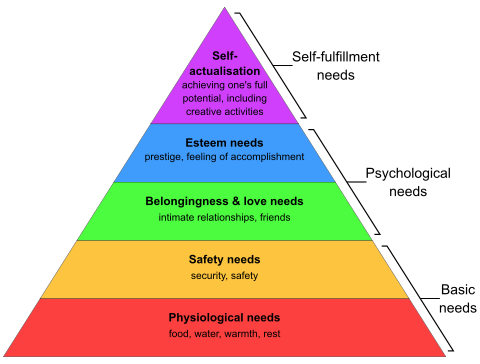
The future is grim if things don’t change
Fertile soil for planting the seeds of addiction is part of the human condition and experience; struggling with compulsive behaviors is a reality all humans are susceptible to. The same actions and behaviors that lead to addiction are those done to escape, avoid, numb a negative emotional experience. Every person engages multiple compulsive behaviors throughout their life, but not everyone develops a propensity for uncontrollable compulsive behaviors or chronic addiction. Those who do are often no different from everyone, except for a few circumstances or life conditions that led them down an unfortunate path that others don’t follow.
As devastating an epidemic that substance use disorder and addiction are today, technological and social trends will only compound and exacerbate this reality for future generations if we don’t chart a new course. Humans are social creatures that need community and authentic connection to survive. Social media and technology are tearing the fabric of natural human connection and replacing it with superficial, non-nurturing relationships. The consequence of this change fuels the need for people to escape, avoid, or numb uncomfortable human emotions.
A person looking to cope with this emotional unrest will often seek an escape through external stimuli that yield a desired internal physiological or emotional response. That reprieve once commonly found in a drink, a drug, an unhealthy food, or an exhilarating behavior, can now be found in addictive gaming, social media, or television binge-watching. While not bad in moderation, each time we chose to escape, numb, or avoid an emotional experience, we lose an opportunity to strengthen, grow, or mature as a person. A tendency to escape or avoid every uncomfortable human experience leaves one weaker and less capable of dealing with the next troubling life experience resulting in an increased need for escape.
These days, every man, woman, and child keeps an external stimulus within arm’s reach – a mobile device – that promotes superficial relationships and provides a physiological and emotional reprieve from any and every difficult life situation. As a result, our culture is being neurologically hard-wired to be less capable of dealing with life situations without an external stimulus of a potentially addictive behavior.

Exercises 1.1
Part A: Take time to reflect on the following questions and record your answers in a notebook or electronic document. Capture at least a few sentences in response to each question.
1. Define what human potential means for you.
2. Consider each of the following areas of your life: professional, financial, education, health & wellness, relationships & family, fun & recreation, contribution or legacy. Where in these areas of your life have you felt that you were failing to live up to your full potential?
3. Where do you presently feel like you might have more potential that hasn’t been expressed?
4. How does this feeling of not reaching your potential show up the most for you? Or, what does it feel like when you sense it? What are common thoughts that arise?
5. If this/these feeling(s) were eliminated from and you finally felt certain that you were living your true potential, how would things in your life be different? What would you do differently? How would you act differently?
Part B
Once complete, share what you are willing to with your cohorts in this program. This group sharing exercise works best if one volunteer records key phrases or points that show up on a flip-chart or a whiteboard. Once each person has had a chance to share what they would like to with the group, discuss any trends or themes that appear on the board. This may inspire another round of sharing about what each has learned from this experience.

Course Manual 2: The Human Potential Model for Performance
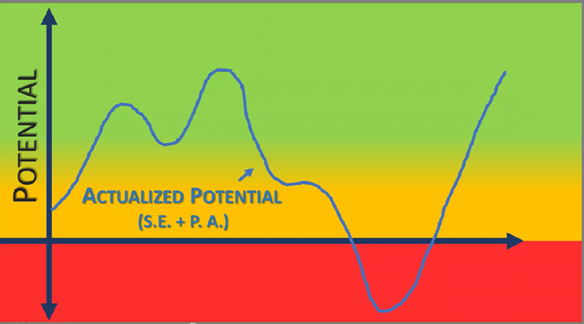
This graph illustrates a person’s potential. I believe every person has a near unlimited amount of human potential and this potential that we’re living into at any given time will fluctuate with how we have done recently i.e. if we have some new wins or we have learnt some new skills/new education/new opportunities given to us. If we succeed, that is going to increase the amount of potential that we are living in to. However, as we go through life, that amount of potential that we are living in to at the moment is going to actually fluctuate – we could have some setbacks/major loss/major trauma or some things that drive us away from living into our true potential. This graph shows how our potential can fluctuate throughout our lifetime and the blue line represents what our actualized potential is – how much of our potential are we actually living into at a particular moment. I have found that the actualized potential is a product of or a function of our self-esteem and our positive affect. Self-esteem or self-efficacy is our belief in ourself and our thoughts about what we can accomplish in the future – the confidence that we have means will be able to look at future obstacles and challenges and succeed in the future and our positive affect is our propensity towards positive and optimistic emotions – so somebody with a high, positive affect – when they see challenges and they have setbacks they still maintain a positive emotional state and their optimism remains high and they will be able to live through that experience and continue to succeed in the future. Somebody with a low positive affect is a person whose time in their life face a challenge or setback and begins on a downwards spiral of negative emotions.
The Green area of graph represents thriving – when we are living high into our potential and we are thriving in our life – we’re trying things, we are exceeding, we are doing well in our job/profession/personal life/relationships – this is where we’re really living into our potential and we’re experiencing the happiness, joy and fulfilment and we are thriving in our lives.
What this looks like: They are engaged in life with purpose and feel like they are making a difference. They have found something in life which excites them and they have a feeling of fulfilment. Their life is defined by hope and joy, they have high confidence and high resilience – when they do face those challenges or setbacks they can bounce back much quicker and they don’t head into a downwards spiral. They appear passionate and feel valued and things have meaning to them, whether it is the work that they are doing or their relationships. External stimulus that they expose themselves to, whether it is a behavior or material goods – they have little to gain from these things as they are already getting a lot of joy and fulfilment from their purposeful life. When they expose themselves to this external stimulus, e.g. new car, glass of wine or something they buy for themselves, they have little to gain as they are doing very well without it but have a lot to lose as these indulgences are going to take too much away from things that are providing a greater source of joy and happiness.
The yellow area I call the caution area, is when we’re just driving through life – going from day to day. This is an area where we are not excited or living into our potential – we are not exceeding or excelling in any area of our life but at the same time we are not really doing too bad – there is not a whole lot of joy or fulfilment in your life but there is not a whole lot of misery.
What this looks like: Their life looks more like they are just existing instead of living. They are going through their day and are not specifically challenged or specifically stressed out but the stress that they do have in their life is slightly greater than the joy they have. The despair they have is greater than the hope that they have for the future. The sensation of fear appears more often than the feeling of confidence regarding their future or ability. For somebody who is ‘driving’, their life or activities that they are engaged in lack substantial meaning. External stimulus e.g. spending money, going on vacations etc. are done because there is a lot to gain from doing so. They are not getting a lot of happiness or fulfillment from the meaning or purpose in their life, so when they indulge in these things, they get a much greater gain and sensation of happiness. They will continue to indulge in these things even though they are aware of the consequences that may come with it – they accept the consequences, and these consequences are manageable.
The last area, the red area at the bottom is what I call surviving. This is where there is more stress, more strain and your life is defined this way. You begin to rely on things like materialistic objects e.g. expensive clothing in order to feel fulfilled and happy in life.
What this looks like: Their life looks like they are just trying to ‘survive’. Their life is defined by stress, despair and fear and that lack of hope for the future. Those external stimuli or unhealthy behaviors are needed to just get by. A person who is in this stage is going to continue this behavior regardless of the known consequences due to now being so reliant on these distractions.

Self-efficacy: Factors Affecting It
• Enactive Attainment (a.k.a. Experience)
The most essential aspect in determining a person’s self-efficacy is “mastery experience.” Simply put, success increases self-efficacy whereas failure decreases it.
• Simulation – also known as “Vicarious Experience”
“If they can do it, I’m sure I can.” This is a process of comparing oneself to another person. When people see someone achieving at something, their self-efficacy rises; when they see someone failing, their self-efficacy falls. When a person sees himself or herself as similar to his or her own model, the procedure is more effective. When a peer with a similar ability succeeds, it usually boosts the self-efficacy of the witness. When a person is extremely unsure of himself or herself, modeling can be a tremendous impact, even if it isn’t as potent as experience.
• Persuasion in Social Situations
Encouragements and discouragements are part of social persuasions. These can have a huge impact; most people recall instances when something spoken to them had a substantial impact on their confidence. Negative persuasions lower self-efficacy, while positive persuasions raise it. It is typically easier to lower someone’s self-efficacy than to raise it.
• Physiological Variables
Shakes, aches and pains, weariness, panic, nausea, and other indicators of distress are prevalent in uncommon, stressful situations. The way a person perceives these reactions has a significant impact on their self-efficacy. Those with low self-efficacy may interpret ‘butterflies in the stomach’ before public speaking as a sign of their own inability, further lowering their self-efficacy, whereas those with high self-efficacy are more likely to interpret such physiological signs as normal and unrelated to his or her actual ability. Thus, rather than the sheer power of the response, it is the person’s belief in the consequences of their physiological response that affects their self-efficacy.

Increased Actualized Human Potential Benefits
1. Self-awareness
Self-awareness is the first step toward realizing one’s full potential. You learn more about yourself, your values, beliefs, and the goal you want to achieve. Pursuing other people’s ambitions will never bring you true fulfillment. If you want to be happy for the rest of your life, you must design your life around who you are. Then you can pursue your own objectives and goals. When you’re pursuing your own objectives, the journey is just as enjoyable as arriving at your destination. The initial step in the personal growth process is self-awareness.
2. The ability to navigate
After you’ve improved your self-awareness, you’ll have a better idea of what you want to accomplish in life. Making decisions gets a lot easier. Tasks that used to occupy up a lot of your time are no longer on your to-do list. You’ve realized that they don’t help you achieve your goals and are thus unworthy of your attention.
3. Increased focus and efficiency
Clarity comes with personal growth. Even if your sense of direction improves, multiple tasks will always vie for your attention. Prioritization gets more easier as your personal development progresses. You have a better understanding of your goals and can rapidly determine which work will yield the best results given the resources you have at the time.
Knowing and playing to your talents improves attention and effectiveness.
4. Increased motivation
It’s simpler to understand the advantages of taking action when you know what you want to accomplish. Even though the activity at hand is unpleasant, if you can see a clear reward, you will be more inspired to complete it. The old proverb “Where there is a will, there is a way” holds true. You build the essential willpower through strong personal development.
5. More resiliency
Life will be difficult at times. You must have the skills and traits to deal effectively with difficult situations when they arise. Personal growth will not be able to prevent all negative things from happening, but it will assist you in dealing with them when they do. You’ll have more self-assurance, resilience, and interpersonal and personal abilities to deal with any situation.
6. Relationships that are more fulfilling
Relationships have two sides to them. You are either lifted or dragged down by them. You’ll be able to see which connections are worth investing in and which need to be cut free as your personal development progresses. You also learn how to maximize the benefits of the relationships that have the most impact on your life.

Exercises 1.2: Self-evaluation of self-efficacy
On a scale of 1 to 10 , with 10 being absolute certainty, how confident are you in your ability to overcome an unexpected challenge in the area of:
Family, professional, financial, health, friendships?
Discuss with the group the steps that could be taken to ensure that you would be able to overcome unexpected challenges in the low-scoring sections.

Course Manual 3: Factors that promote or limit human potential
Your Mindset Is the Key to Realizing Your Full Potential
The problem with most people’s mindsets is that they are pessimistic and constrictive. The good news is that you have the ability to alter your mindset. In her best-selling book Mindset: The New Psychology of Success, author Carol Dweck describes two sorts of mindsets: fixed and growth.
Having a Fixed Mindset
A fixed mindset refers to having firm opinions about oneself. Someone with a fixed worldview created “their story” as a child, and it hasn’t changed much since then. Because they suffered in such subjects in school, they may assume they aren’t strong at public speaking, arithmetic, or writing.
When something goes wrong, someone with a fixed attitude may think to themselves, “What an idiot, I knew I wasn’t any good at that.” “Well, that just reaffirmed what I already knew; I won’t be doing it again,” or “Well, that just confirmed what I already knew.” A stuck mindset encourages negative beliefs and attitudes, making it more difficult to achieve your maximum potential.
Having a Growth Mindset
On the other side, a growth mindset is the polar opposite. Anything is possible if you have a growth attitude (but don’t mix this with being delusional!). It’s more about how you approach and think about challenges.
Consider the problem of not being excellent at public speaking: instead of telling yourself that you’ve never been good at public speaking and never will be, a person with a growth mindset will evaluate what went wrong and come up with strategies to improve next time.
They could, for example, enroll in a public speaking class at their local community college or join the Toastmasters organization. Whatever it is, they see failure as a tiny detour on the way to their destination, rather than an insurmountable wall.

Five Mental Barriers That Could Be Limiting Your Business And Life Potential
Have you ever had the uneasy feeling that something is preventing you from achieving your goals? It’s not always easy to figure out who’s to blame. We limit ourselves without even recognizing it most of the time. This is the modern entrepreneur’s predicament.
The mind is a complex beast. It has the ability to manifest an infinite number of possibilities. To construct a universe in which nothing is beyond one’s grasp. In a matter of seconds, it may shift from being your greatest ally to your deadliest enemy. So, how can you get from limited self-beliefs to mental fortitude that is unwavering?
Positive mantras, affirmations, and ritualistic mental mastery tactics are probably nothing new to you. But how often are you reminded of what you shouldn’t do?
When it comes to self-development, clarity is important. The only way to achieve meaningful progress — in business and in your personal life — is to learn how to check in with your demons and confront your foes head-on.
Being an entrepreneur is nerve-wracking. What’s worse scarier is looking back on the journey and wishing you could have done more. With these five mental roadblocks, are you unconsciously restricting your potential?
1. You think in terms of scarcity.
What is the distinction between being “broke” and “poor”? The former is a transient condition of being, but the latter is a persistent state of mind, or what psychologists refer to as a “scarcity mindset.” Things can improve while you’re broke. It is possible to re-establish wealth and increase assets. Being poor, on the other hand, is an attitude that is typically passed down from generation to generation.
If your family has always struggled to make ends meet, that thinking may be engrained in you. This is not meant to put someone who is poor in a bad light. Instead, consider it a lighthouse pointing to the distinction between who you are now and who you are destined to be.
You have the ability to break free from whatever mold into which you have been cast. You have the ability to establish a new path, one filled with abundance and limitless possibilities. However, it all begins with the thinking. Transform your reality by shifting your perception of yourself.
2. You may be overly concerned with yourself.
Many writers have written in the past about the importance of ego and how it may motivate you to improve your self-esteem and create better circumstances for yourself. However, the ego is a double-edged sword, and if you take life too seriously, you may limit your potential.
“You’ll never get out of life alive,” as the saying goes. So, why are so many professionals cranking up the “stern” dial to eleven? Rather than taking yourself too seriously, remember to appreciate the fact that you are alive. You may discover out who you really are and what potential you have when you’re constantly astonished by your existence and let go of thoughts of entitlement.
3. Your imagination is thin on the ground.
“You can’t depend on your eyes when your imagination is out of focus” Mark Twain is credited to have said. You must picture it with perfect confidence in your mind’s eye if you want to get where you’re going. It might be as simple as a dream car or as complicated as a generational legacy you want to leave behind. In either case, you’re likely to fail if you can’t visualize your end goal with vivid mental images.
Our imaginations, for the most part, are clutter magnets that wreak havoc on our productivity. Create a vision for your future if you don’t already have one. Make an effort to be specific. What does it feel like and how does it smell? As you cross the finish line, can you feel your heart thumping? If done with great conviction, this style of sensory vision is highly strong and will launch you to success.
4. You have a tendency to overthink things.
“Success comes with speed,” a wise man once stated. If you spend too much time evaluating your circumstance, you’ll become paralyzed. Overthinking is frequently a side effect of fear. But what would your life (and business) be like if you weren’t so worried? You’ll be able to get more done on a consistent basis and come closer to your goals in record speed. Remember that action, not thought, is what overcomes fear.
5. You’re an emotional (but loveable) mess.
Too many business owners, entrepreneurs, and motivated individuals make key decisions based on emotions rather than data. It’s also logical. The entrepreneurial mentality is built on taking risks. To go in with a firm commitment and rely on your gut and instincts to guide you. However, it’s always worthwhile to take a step back and assess the issue. Consult the numbers and get the help of your closest advisors. Start making critical judgments based on data, and rely on your intuition for the rest.
6. You punish yourself for minor blunders.
To put it another way, you’re being too hard on yourself. You get into a trap of overthinking and underperformance rather than embracing your mistakes and moving on gracefully. You become engulfed in a “fight or flight” condition, which impairs your capacity to make decisions in the future. Not to mention, you’ll be filled with anxiety if you stay in this mindset. The key is to slow down or stop. Stop second-guessing yourself. Stop going around in circles in your head. Instead of dwelling on past mistakes, search for methods to go forward and repair them. It’s a lot simpler to say than it is to do. You can tame the “monkey brain” that has tortured you with uncertainty over your own behavior with a little attention (and often meditation).
Just keep in mind that you are exactly where you need to be. There’s always space for improvement, but it shouldn’t come at the expense of your mental and emotional well-being. You’ve already taken the first step toward overcoming these mentality barriers if you recognize any of them in your own life.

5 indicators that you’re not living up to your full potential, and what you can do about it
“Is this all there is?” everyone wonders from time to time. You’ve got the job, the kids, and the new house, but you still feel like something is missing. The feeling of being lost or misguided in your life can occur for a multitude of reasons, but the hardest part is often recognizing that you’re lost.
If you notice yourself engaging in these activities or thinking these ideas, it’s time to take a look at your life.
1. You feel envious or competitive as a result of other people’s achievements. This is frequently the first clue that you’re more interested in what’s going on outside of yourself than what’s going on inside. You have the impression that what others have is what you should, could, or would prefer above what you have. This leads to an unhappy cynical or jaded mentality.
2. You begin self-medicating with alcohol, prescription or nonprescription medications, or you develop a medical problem such as headaches, stomachaches, or other ailments. Your body senses when you’re on the wrong track and reacts accordingly.
3. You become more self-conscious. You may feel less self-assured and more reliant on the approval of others. You become much more perplexed when you are unsure.
4. You have a sense of emptiness or that something is lacking in your life. When you aren’t invested in your purpose or passion, you begin to feel as if you aren’t important. When you believe you can be replaced or are inconsequential, you lose interest in what you’re doing.
5. You are more irritable and stressed. It’s almost as though you’re constantly irritated when you’re not living a life that fulfills you. You become irritated and frustrated as you think about it more.

Here are some ideas to assist you deal with your dissatisfaction.
1. Think about what you actually enjoy doing. What are some of the activities from which you find it difficult to disengage?
2. Establish clear objectives. Instead of focusing on what you don’t like, focus on what you do. Make it a mission to investigate the job of your dreams and work toward it for the next 12 months instead of saying things like “I hate my job.” Make a goal to pay off a specified amount of debt in three months if you’re in debt. Rather than complaining about your dissatisfaction, take action.
3. If you’re not sure what you should be doing, take the Myers Briggs personality test. This scale varies as you mature and grow, so if you took it in high school, you’ve probably changed a lot since then.
4. People are trapped in a life that is hollow and purposeless because of their laziness and self-pity. Although we are all lazy and use self-pity from time to time, living with it causes all of the above symptoms of being lost.
5. Being lost can be a source of uncertainty and irritation, but it can also be a source of progress. It indicates that it is time for a change. Acting is the most effective approach to change. Make a list of three groups that interest you and plan to attend one of their events. Churches, environmental, and humanitarian projects can all help you discover your abilities and give your life significance.
The importance of having meaning or purpose in one’s life is supported by studies on every happiness scale. Having a wonderful job and a loving family are both important factors. People need to believe they have a purpose in life and that they are loved and needed by others. Unreal expectations are when you look to one part of your life, such as your career or your marriage, and expect it to provide all of your requirements. People who live lives that are meaningful have a wide range of interests and feel connected to others.

Exercises 1.3: Reflection and sharing
Do any of these mental barriers/limiting potential indicators show up in your life or within your organization?
Discuss with the group how you may break these mental barriers.

Course Manual 4: 100% Responsibility – Taking ownership
What Are the Advantages of Taking Control?
1. Having a sense of ownership in your company can help it grow.
Perhaps you’ve heard of word-of-mouth hiring. If not, it’s one of the most typical methods for employers to fill open positions. Nobody wants to work for someone who makes excuses all the time. Employees and colleagues will be more inclined to refer your company to clients and applicants if you take ownership in business and ownership of your work seriously. Don’t get carried away, but keeping track of where your new hires and clients come from might provide you with information on where and how you’re being complimented.
2. Who Doesn’t Want Enthusiastic, Loyal Workers?
You get them by instilling in your firm a culture of trust and accountability. Every job your team completes is an opportunity to demonstrate that you are proud of a job well done rather than simply signing off on someone else’s work. Make sure you’re both a team player and a manager. Being enthused about taking ownership as a leader is a terrific way to demonstrate how to cooperate to your colleagues. You shouldn’t be in business if you don’t have heart or passion, because money is merely a result, not the goal.
3. Taking daily ownership of your work will keep your customers engaged.
Customers are what pay your bills, whether you’re offering a product, a meal, a service, or information. When you establish a positive reputation in your field by constantly exceeding your clients’ expectations, you set yourself apart from the competitors. With every sale and every connection with your customers, you should strive towards this.
Taking ownership, on the other hand, does not mean selling things that are unpopular with your customers and refusing to ask them how to improve them.
4. When you own a business, you can communicate your ideas more clearly, and people will believe you when you say what you mean.
You can back up your claims with specific examples of times when you devised solutions for your staff, assisted customers in understanding their needs, and went above and beyond the call of duty. You may construct an overview of how each piece of your firm is expected to work once you know exactly how each process you’ve created runs. That demonstrates ownership’s hallmarks of honesty and constancy.

Five Ways to Begin Taking Control of Your Work and Business
1. Consider what you’re doing now for your company.
You should constantly be available for inquiries and input from your team, but you should also be aware of areas where improvements could be made. Complacency might develop in if you rest on your laurels. It’s usually downhill from there when this happens. Marcus had a wonderful example of this when he met with the proprietors of a restaurant in western Pennsylvania who were selling franchises of their idea.
After seeing numerous locations and chatting with franchisees, it became evident that the owners were uninterested in long-term relationships or even long-term growth. In any firm, you should expect open lines of communication, collaboration, accountability, and responsibility from the owner or manager. This partnership might have been worth breaking a few plates over if the proprietors of this Greek restaurant concept had taken more ownership in setting up their franchisees for success rather than merely turning up once a month to collect a check.
Is there a lesson here? Allow oneself to be open to receiving information in whatever form. Read the room as you pass by workers to see where slack needs to be picked up or pressure needs to be relieved. Your proactive approach to employee well-being and workload demonstrates that you’ll take responsibility in both good and difficult times.
2. Make a game plan and tell everyone who will listen about it.
If you don’t already have one, now is the time to develop one and share it with your staff. Above all, trust the process, as Marcus likes to say. Take the guesswork out of your business. Then you may look at each step you’re doing to see where you might improve. Similarly, you should have a code of conduct that is understood by everyone in your office. Know your role and make sure your coworkers are aware of what you’re there to assist with.
Many employees are afraid of losing their jobs or appearing to be a burden, so they refuse to work through ideas or criticize their supervisor. Keep your doors open, take responsibility of your company, and let your employees know that your ultimate goal is their success.
3. Know and write out your values for new hires.
Assume that even one employee believes you place a higher priority on sales than on quality, or that you don’t appreciate diversity in the workplace. You’re putting yourself in jeopardy in that instance. As a manager, you take responsibility for your employees’ behavior by taking ownership. Create a workplace culture built on strong values, leadership, and accountability, and then trust your staff to demonstrate it on a regular basis.
4. Make others responsible for their actions e Every now and then.
You’re demonstrating solid, trustworthy management when the buck stops at your desk and you take ownership of your and their job. However, if you want an employee to feel like they have a stake in the company, you can transfer responsibility to them. Responsibility instils pride in the quality of their own work as well as the work of those they supervise. When that happens, you’ll have someone to relieve some of your tension, and you’ll have more time to focus on other elements of your company.
Take, for example, Bank of America. The bank was selected one of the top 100 companies to work for in part because 82 percent of employees felt it was a fantastic place to work, praising the “feeling of camaraderie” in particular. Bank of America also invests in leadership development by offering a number of managerial fast-track programs and educational materials. (2019, Aldridge). Don’t be hesitant to provide new goals or duties to staff, and assist them in training for new positions and responsibilities.
5. Pay Attention to Your Team and Be On the Lookout For Defensiveness
You must detect when someone believes their voice isn’t being heard if you want your staff to take ownership. Defensiveness can be a symptom that you don’t own your projects. “Jim did that bit, not me…” or “That wasn’t my idea in the first place…” could indicate that you overlooked a key tip from a member of your team. Consider changing how things run if your employees are still producing good work but are irritated by team failures. Unhappy campers may just lack initiative and require a new challenge. If you keep your ears open, you can discover new abilities anywhere.
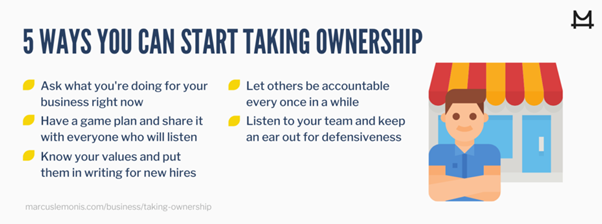
What to Be Aware of and What to Avoid
1. Don’t micromanage
Although this is generally sound advice, it is especially important if you want an employee to take responsibility for their work. Allowing your employees to accomplish what you recruited them to do deprives them of ownership. They may develop to believe that they are working for someone who does not appreciate their abilities. Why should they feel ownership of what they created if you coach them through every stage of the process? “You have to assign particular jobs to everybody so you don’t stumble into each other and start bickering about silliness,” Marcus thinks is the best way to do this. So offer your employees a map and tell them where they need to go.
2. Share the Successes and Failures
People frequently erroneously believe that acquiring ownership of a firm entails accepting responsibility when things go wrong. They may believe that the benefits of a well-done project are balanced by the risk of being held solely responsible if the job fails. In certain circumstances, management is fully responsible for the failure. Being a member of a team means that everyone is responsible for correcting errors, even if they did not cause them. Consider what would happen if the person who made a bad basketball shot attempted to get the rebound.
When mistakes occur, allow your staff enough time to correct them on their own. In the meantime, be quick to compliment and slow to blame. If employees feel encouraged, they are less likely to repeat mistakes.
3. Be aware of how you spend your time.
You should be responsible for your team and take ownership of your work. Keep in mind, though, that denying your staff a sense of ownership in the company will eat up the hours in the day. You don’t want to have to follow up on everyone’s daily output as a manager because you don’t trust them to accomplish it on their own. Similarly, just devote your attention to areas that require it, and don’t be hesitant to fill in when needed. Every stage of the process, no matter how minor, is yours to own.
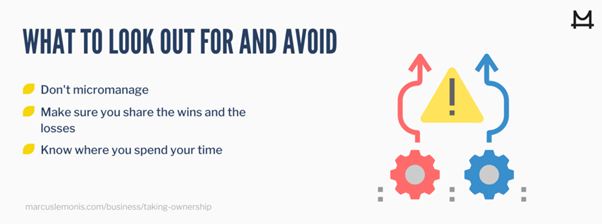

Exercises 1.4 . Responsibility Stems – Complete as a group
This exercise creates an awareness for you to see where you are not taking 100% responsibility, and it will show you how you can take more responsibility in all areas of your life. This concept can be overwhelming for some, so this exercise is a great way to ease you into the concept of taking 100% responsibility.
Procedure
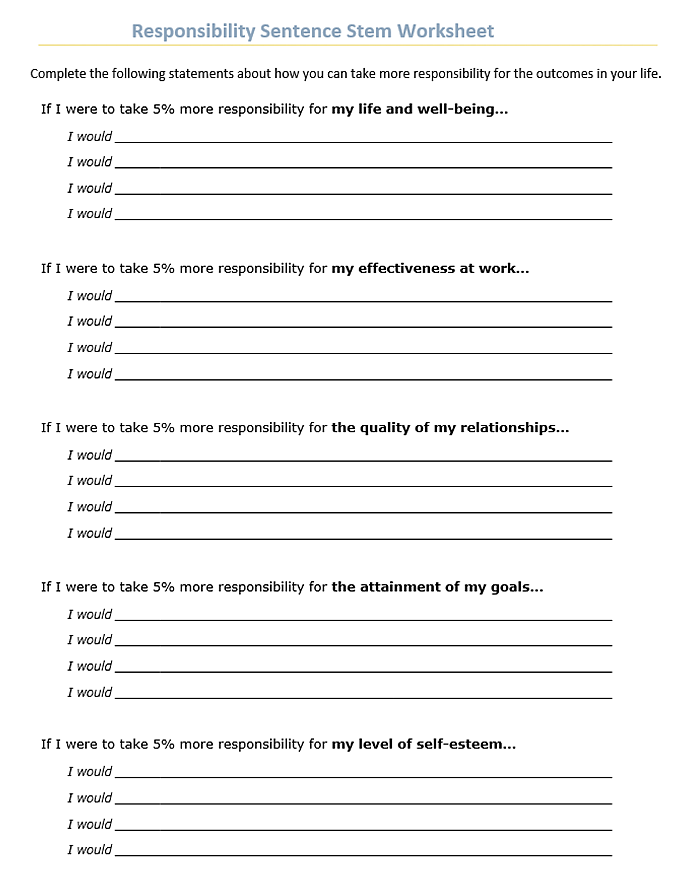
The purpose if this exercise is to identify small changes or little actions we can take that will move us in the right direction towards the outcomes we want in life. When completing your sentence stems, consider things you can do that would take no more than a few minutes a day to complete. For example, if considering things you could do to improve your health and well-being, a good example would be, “I would drink a glass of water in the morning when I wake up.” Or, “I will begin stretching for 5 minutes each morning before I take a shower.” Not, “I will commit to doing yoga for at least one hour, five days a week (if you currently don’t do yoga at all).”
These following are NOT examples taking of 5% more responsibility:
I will start taking a trip every month with my partner to improve our relationship.
I will get a gym membership and start a new workout routine and begin working out at least four days a week.
I will go back to school and earn another certification that will help me advance at work.
While these examples above are great intentions and will certainly move you in the right direction towards your desired outcomes, the level of change they require can quickly become overwhelming during our busy lives. Many best-intentions can slip away within days or weeks of setting them. And this doesn’t help build up one’s confidence or self-esteem along the way. There is a time and a place for setting larger, life-transforming goals, and we will get there during this Cultivating Potential program. For now, we are looking for small changes we can commit to and follow through on that will have us exercising our responsibility to create the outcomes we want in life.
These following examples are what a 5% more responsibility action might look like for you:
To increase my effectiveness at work, I will spend five minutes each Monday and Friday reviewing my goals for the next week, month, and quarter.
To improve the level of my self-esteem, I will acknowledge and give myself credit for one thing I accomplished each day before going to bed.
To take more responsibility for the attainment of my goals, I will spend thirty minutes at the start of each month reviewing my personal and professional goals.

Course Manual 5: Internalizing Locus of Control
The term ‘locus of control’ relates to a person’s perception of how much control they have over their own behavior. An individual’s locus of control can be either internal or external (Rotter, 1954).
People with a high internal locus of control believe they have a lot of personal influence over their behavior and are thus more willing to accept responsibility for their actions. For example, I scored well on the examinations because I worked really hard on revision. A person with a high external locus of control, on the other hand, sees their actions as the product of external factors or luck – e.g. Because the test was simple, I did well on it.
People with an internal locus of control are less conforming and obedient, according to research (i.e. more independent). People with an internal locus of control, according to Rotter, are better at resisting social pressure to conform or comply, maybe because they feel accountable for their actions. In practically every discipline of psychology, the term locus of control is crucial to understand. This is mostly owing to the fact that it can be applied to many facets of daily life; whether the locus is external or internal, it will inevitably effect your mind, body, and behaviors.
Educational psychology, clinical psychology, and even health psychology have all made progress in their studies of the phenomenon in order to learn more about how to regulate or improve one’s locus of control. Experts in the field of psychology frequently debate about whether discrepancies should be attributed to cultural differences or whether a more global measure of locus of control will prove to be more useful in terms of practical application.
Internal vs External Locus of Control
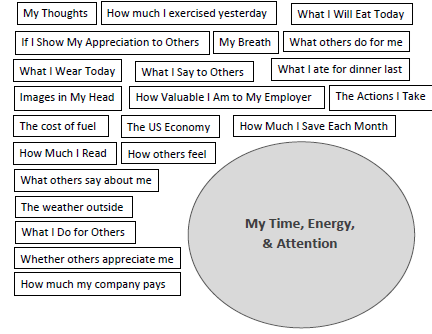
The locus of control refers to how much people believe they have control over their own activities rather than events in their lives occurring as a result of external causes. It’s calculated on a scale of ‘high internal’ to ‘high external.’
Julian B. Rotter coined the term in 1954, and it immediately became a popular one in the field of personality psychology.
An individual’s “locus” (plural “loci”) might be internal (belief that one can manage one’s own life) or external (belief that one’s life is bound by outside forces that one can’t control, or that chance or destiny rule one’s life). There is a spectrum, with the majority of people falling somewhere in the middle. A person with a high internal perception of personal control is more likely to accept personal responsibility for their actions, which they see to be the result of their own effect. High externals believe that external forces or luck play a larger role in their actions.
It’s also worth noting that the terms locus of control and attributional style are not interchangeable. The term “locus of control” relates to an idea associated with future expectations, whereas “attributional style” refers to a concept concerned with seeking reasons for previous results.
Example
People who have an internal locus of control accept that events in their daily lives can be controlled. To be more explicit, this means that they are capable of detecting situations in which fate can be influenced, such as when a person is taking a driver’s license test.
If a person has an internal locus of control, they will ascribe their exam success or failure to their own talents. If they passed the test, this person would be proud of their accomplishments, but if they failed, they would see the need to improve their driving.
An individual with an external locus of control might interpret the same occurrence differently. Instead of accepting that the exam went the way it did because of personal actions, this person would be more inclined to blame other variables such as the weather, their current state, or even the exam itself. Rather than accepting responsibility for some of the blame, the occurrence is blamed on uncontrollable forces (destiny/fate/etc.).
Along with neuroticism, self-viability, and self-esteem, locus of control is one of the four factors of center self-assessments — one’s primary examination of oneself.
Judge, Locke, and Durham (1997) were the first to investigate the concept of center self-assessments, and it has since been shown to predict a few job outcomes, specifically, work fulfillment and occupation performance. Judge et al. (2002) claimed in a subsequent report that locus of control, neuroticism, self-viability, and confidence aspects might all impact each other.

How it Works?
The term “locus of control” was originally used in Julian B. Rotter’s work (1954), which was based on the social learning theory of personality. It’s an excellent example of a generalized anticipation method for problem solving, which may be used in a variety of scenarios.
Rotter published an essay in Psychological Monographs in 1966 that summarized over a decade of significant study (by Rotter and his understudies), the majority of which had never been published before.
It is thought that Locus of Control, a concept coined by a psychologist named Alfred Adler, may have originated first. However, because evidence for this is lacking, Rotter and his understudy deserve the majority of the credit for the concept.
William H. James was one of the understudies. This psychologist would eventually go on to publish his own research in the topic, but when studying under Rotter, he was interested in what he called “expectancy shifts.”
A last thought
From how you cope with stress to your motivation to take charge of your life, your locus of control can have a significant impact on your life.
Having an internal locus of control can be beneficial in many situations. It suggests you feel your actions have an effect on others.
If you have a strong external locus of control, it may be beneficial to begin actively changing how you perceive situations and events.
Rather than seeing oneself as a helpless observer caught up in the whirlpool of life, consider what steps you may do to influence the outcome.

Exercises 1.5: “What is in my locus of control.”
Do You Have an External or Internal Locus of Control?
On the continuum, where does your locus of control fall? Select the group of statements that best defines your outlook on life from the list below.
Outlook 1
• I often feel that I have little control over my life and what happens to me.
• People rarely get what they deserve.
• It isn’t worth setting goals or making plans because too many things can happen that are outside of my control.
• Life is a game of chance.
• Individuals have little influence over the events of the world.
If the preceding words best describe your outlook on life, you probably have an external locus of control.
Outlook 2
• If you work hard and commit yourself to a goal, you can achieve anything.
• There is no such thing as fate or destiny.
• If you study hard and are well-prepared, you can do well on exams.
• Luck has little to do with success; it’s mostly a matter of dedication and effort.
• In the long run, people tend to get what they deserve in life.
If the statements above best reflect your outlook on life, then you most likely have an internal locus of control.

Course Manual 6: Equation for Responsibility: Event, Response, Outcome
Master Your Mindset: Event + Response = Outcome
There are numerous tools available to assist you in mastering your mindset. One of the most profound, yet simple, tools for mastering your mindset and taking control of the outcomes we experience is the simple equation espoused by “America’s #1 Success Coach,” Jack Canfield. (You may recognize Jack if you’ve heard of or read a Chicken Soup for the Soul book.)
The simple equation Canfield most attributes to anyone’s success is:
E + R = O.
Where, E represents the events we face in our lives.
R represents our response to those events.
And, O stands for the outcomes we experience as a result.
By this equation, we see that it is the responses we have to the events – the challenges, obstacles, and/or opportunities we experience – that determines the outcomes we ultimately experience. The outcomes may be the levels of success we have personally or professionally; it is also the levels of financial stability we have, the quality of our relationships, and our levels of health and well-being we maintain. Regardless of the events we face in life, it is not the event itself that determines the outcomes; it’s the response we have that determines the outcome. For any seemingly negative event we face, there is a way we can respond to that event that makes things worse and a way we can respond that leads to a more favorable outcome.
Accepting responsibility for every outcome we face may, at first, seem like a daunting responsibility. But through accepting 100% personal responsibility comes a sense of liberation and personal empowerment.
Every outcome you experience in life is a result of the way you have responded to an earlier event you face. As the simple equation illustrated, if you are not satisfied with the outcomes you are experiencing in life there are only two things you can: blame the events or circumstanced you have been dealt, or you can choose a different response to those events in the future. Blaming the event is giving away your control over the way your life turns out; identifying the response you took in the past and a different response you can make in the future is accepting responsibility and taking back control of the outcomes you create.
For every negative outcome we experience, there is some way we created the situation through our actions or allowed the outcome to occur because of our inaction. If we want different outcomes we must respond in different ways.
There are only three ways we can respond to event: behavoirs, thoughts, and images. Behavoirs include the actions we take (or choose not to take). Thoughts include our self-talk, assumptions, or stories we tell ourselves. Images include the visions we have representing a situation or the visions we have about the future.
Creating the outcomes we want in our lives becomes a process of finding the behavoirs, thoughts, and images that will bring about the results we seek from the events we experience.
Consider, if you will, any of number of disastrous events that you have witnessed or challenging circumstances people have faced in their lives. During each economic downturn there are people that suffer and people that prosper. Of everyone born into adversity, there are some that escape the circumstances and succeed while others succumb to their circumstances. Conversely, there are many who are born with an upper hand that live in despair while their counterparts thrive. Therefor we can conclude it is not the events or circumstances that dictate the outcome but something else – they way individuals respond.
Defining the Event
It doesn’t matter what the event is. Anything can trigger a reaction: a gut sensation, a coworker’s remark, traffic, a misunderstood email, a layoff, the weather, your partner’s behavior, etc. To put it another way, every and everything that is beyond your ability to change (fix, manipulate, control, etc). Let’s come to a halt right now. If you compiled a list of all the possibilities that fell into that category, you’d have a long list that included the majority of your life’s events and circumstances. The key to properly employing this “formula” is to get this section right. Because there will be many things on that list that are quite essential to you. Because they are significant to you, they are imbued with many of your values and ideas.
Working with your thoughts is the key. The first station on this train is thinking about your thinking. What am I thinking about? What do I usually think when this event occurs? So, what’s next? What do these thoughts make me feel like? What am I going to do about these sentiments and thoughts? In many cases, you’ll discover that your reaction to specific “events” is part of a thought pattern that you’ve developed through time.
Because the brain prefers stimuli to certainty, habits develop as a result of repeated activity, forming neural networks (count thought as a behavior). An increasing body of evidence suggests that changing our behavioral “strategies” in our daily lives rewires the brain and establishes new patterns of activity. Scientists have found “neuroplasticity,” which is the ability to change the neural networks in our brains (both favorably and adversely). So the most crucial element of your work with this formula is to struggle with the all-important question of what you believe is under your control and what isn’t.
When you’re working on clarifying this, it’s a good idea to develop another list – the what’s in my control list – while you’re at it.

Understanding the Response
Now we’ve arrived in the heart of the action. This is where you get to make choices – and additional choices – about how you want to RESPOND to life’s events, sometimes minute by minute. This isn’t about how you reacted in the past (though it can be useful knowledge), but rather how you CHOOSE to react in the present or in the future. This is the stage where you get to make a decision.
Regardless of how life’s events unfold (which can be a difficult and lengthy process), you get to choose how you will respond. You are in control of the vehicle. You have the ability to make your own decisions.
Your answer is made up of three parts: your thoughts, your emotions, and your actions. We typically begin by attempting to change our behavior before we have gotten our thought processes in order. Understanding your common emotional triggers might help you create a template for how you react to different situations. What’s equally crucial to grasp about your reaction – (root of word – responsibility) is that you’re completely willing to take responsibility for it.
That can be a significant difficulty for many of us. If you start taking on too many responsibilities, your ego will typically scream. It can trigger old attitudes and thoughts like, “Why should I always have to be the one who changes?” “Life has delivered me a severe blow, and I have every right to be depressed.” “If something is entirely unfair (and it could be), why should I respond fairly?” As you can see, this basic formula has a lot of power. To properly execute it, you must do a completely honest self-evaluation, reappraise your beliefs, engage your core values, and access sentiments such as empathy, confidence, optimism, courage, and tranquillity, to mention a few.

The Outcome
We use this formula on a regular basis (both individually and professionally). Our clients believe it may truly push them and help them see things differently (a key to changing behavior). They do, however, want assurances from time to time.
“Well, I’d be willing to change my behavior if I thought it would impact the way my co-worker acts.”
“I’ll take responsibility for my actions, but how do I know that my partner will care that I’ve changed?”
This is the real deal. There are no assurances in this world. The term “outcome” is merely a term. Despite our best efforts, we can never truly know what will happen in a circumstance. This is, once again, a matter of control. We can only respond to events with complete self-awareness and as comprehensive a view of the external forces as feasible. Because we always obtain results (typically without much conscious thought), this formula at least provides us a better chance to help mould the result to what we really desire.
We believe that the internal pleasures of contributing 100 percent of our conscious efforts are the most important outcome we can ever achieve in any of our responses to situations beyond our control. Too many of us are squandering a great deal of our time and energy attempting to “correct” what we don’t have control over. This isn’t to imply that we shouldn’t use our knowledge and desire to positively impact the situations we encounter that we believe should be improved.
This is our choice. But first, let’s be crystal clear about what we can actually “control” and what we cannot, how we use our energy, the effects of our impact externally – and most important – internally.

Example
Michael Phelps first met his coach, Bob Bowman, when he was eight years old, and was asked, “Are you going to wait till you win your first gold medal to have a positive attitude?” No, you’re going to do it ahead of time. Long before you have a gold medal around your neck, you must have the attitude of an Olympic champion.”
Bowman explained the formula and indicated that if you don’t like the results you’re getting, you have two options.
Blame the event (E) for lack of results (O)
You can blame the economy, the weather, a lack of money, a lack of knowledge, gender bias, your partner, the system, or anything else that suits you.
Phelps could be in a difficult situation (E) to adopt a pessimistic attitude; after all, he had plenty of reasons to justify his defeat. He was well aware that these were tests to see how he would react under duress.
Instead, you can alter your reactions (R) to the events (E) – the way things are – until you achieve the desired result (O)
You have the ability to alter your thinking, language, and thoughts. That is, after all, all you have power over. Unfortunately, most of us never change our behavior because we are conditioned to respond in certain ways.
When faced with significant problems, Phelps examined his own reaction and attitude, posing the question W.I.N: ‘What’s Important Now?’ to himself. Is it about moaning or complaining about the hand fate has dealt you, or is it about regulating your reaction?
If you consider what you believe causes you to have an attitude, I believe the vast majority of them fall into the ‘uncontrollable’ category (E). Consider what you genuinely have control over if this is the case. Attitude is one thing that falls under your ‘controllable’ area. It is a choice how we respond to the facts in our lives. And, regardless of the circumstances, it is always a decision.

Exercises 1.6: “How do I create or allow the outcomes I face?”
Consider the different areas of your life the outcomes you are experiencing and identify at least one outcome you would like to change.
In each of the following areas, list one outcome that you would like improved — financial, relationships, professional, health and wellness.
Now, list at least one way you are creating or allowing that undesirable outcome with your chosen behavoirs, thoughts, or images.
Sometimes it helps to consider people who are experiencing the outcomes we would prefer in order to identify ways we may be responding differently to create the outcomes we experience.
If you are willing to do so, share a few of your observations with your group. Taking this opportunity to be vulnerable with others can lead to conversation that will help us identify our own behavoirs that are promoting the less-than-desirable results we are experiencing.

Course Manual 7: The Indirect Sphere
All past events also belong in the Indirect Sphere, as these events are no longer in your control. You may have a lingering circumstance from a past event that you can still affect (perhaps working to make amends to someone you have hurt), but you cannot change the past. No amount of fretting about your mistake or regretting an action will change the circumstance you now face, and lost energy and attention spent dwelling on that past event will only cost energy you could otherwise invest in changing your circumstances.
I have made mistakes in my past and done things I wish I hadn’t. My relationship history is a perfect example of that. When my marriage hit rock bottom and I realized my wife and I were heading to a divorce, there were many memories from my past that would haunt my thoughts and divert my energy. I spent a significant amount of time dwelling over missed opportunities to connect or communicate: the evenings I worked late which, in hindsight, I didn’t have to, the apologies I never gave, the compliments I failed to share and the arguments I should have avoided.
Each of these past events contributed to the future circumstance of me being single. During the course of our separation, I spent a lot of time reliving those past events in my mind and punishing myself for the choices I made and the things I could have done differently.
All that time spent living in the past was time and energy I couldn’t spend doing anything about my present circumstances. I was dwelling on the past instead of developing plans, skills, habits, or anything else that might help make my future better than my past.
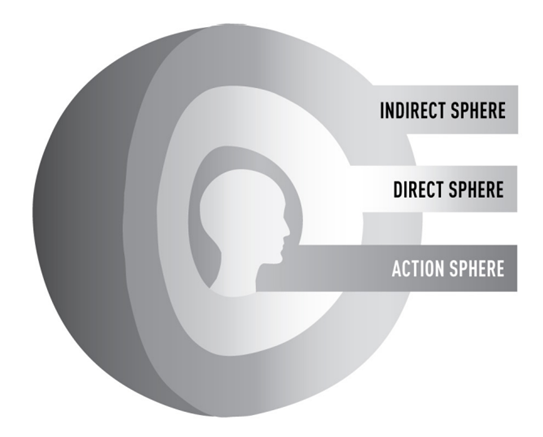
There is always something to gain by reflecting on past events— the best way to grow for the future is to learn from our past. But there is a certain point where reflecting on the past goes from constructive to destructive and from a tool we can use for a better tomorrow to a negative thief of our positive energy.
The past is just one example; if you allow something negative in your Indirect Sphere to occupy your mind, it will inevitably take a toll on your emotions, and ultimately your activity. Dwelling on these Indirect Sphere events pulls your attention from the aspects of your life that should otherwise matter most.
There are, of course, many good things that occur in our Indirect Sphere. Hearing a story of a heroic event that saved lives or an everyday story about a stranger committing a kind act to help another, can motivate us to be better versions of ourselves. Maybe you’ve read an inspiring book about someone overcoming tough odds to achieve their dreams or helping to make the dreams of others come true. These stories are Indirect Sphere events that can bring positive emotions to your life.
If we choose to be touched by these Indirect Sphere events and circumstances in a positive way, we can actually gain quite a bit: inspiration, motivation, compassion, and a slew of other positive emotions. As long as the time we spend thinking about those events and circumstances doesn’t distract us from dealing with the things we must respond to or can control, there is plenty to be learned by reflecting on Indirect Sphere occurrences or the experiences of others.
The important thing to understand about the Indirect Sphere is that the events here can affect us if we allow them to. If we let the news of tragedies occurring a thousand miles away fester in our minds or occupy our attention, this will have an effect on our emotions and our actions as a result. If we spend too much time dwelling on Indirect Sphere events, it consumes our time to deal with the things that we must respond to and can affect.
I am not suggesting that we ignore the Indirect Sphere or pretend it doesn’t exist. Rather, be aware that many things in the world don’t really have to affect us if we choose not to let them.

Controlling Your Indirect Sphere
Understanding and properly managing the Indirect Sphere is the area that may make the greatest difference in your life. Remember, the Indirect Sphere is the Sphere of events and circumstances you can’t control and that don’t directly affect you. The only thing you can control in relation to this Sphere is how much emotional energy you devote to it.
When we can regain our energy and attention from the Indirect Sphere things that are stealing our time, we can redistribute that energy to the things that we can control. And we can use that time we gain to work more productively to find the positive from the Direct Sphere events and circumstances we are faced with.
Ultimately, we are all better off if we remember that our energy is best spent focused on the events and circumstances we can affect. This doesn’t mean we cease to have compassion or care for those in circumstances that are occurring outside our personal realm of control, but it does mean that we are reasonable about how much energy we devote to the circumstances we cannot change. This is particularly true when those circumstances have no direct effect on us, as is the case with all events within the Indirect Sphere.
Motivational speaker and business philosopher Jim Rohn calls these things his “blame list”—everything in the world that might have been holding him down or preventing any greater success in his life.
As he tells it, he spent much of his youth looking for all the reasons beyond his control that contributed to his lack of prosperity and good fortune. Rohn, like so many of us, took comfort in his blame list because it served as a great excuse for why he didn’t have more happiness, abundance and success. Made up completely of Indirect Sphere items, he had no control over anything on the blame list, so he could blame those items anytime to validate his lack of success.
Rohn recounts, “It was hard to give up the blame list. It was so comfortable blaming the government, negative relatives, a company policy, unions, wage scales, economy, interest rates, crisis and circumstances.”
While there may be some circumstances in which these things do directly affect you and must be responded to (the union you are a part of declaring a strike, for instance) for most people, these are Indirect Sphere events and circumstances occurring outside your possible control or influence. Most of these things are news items you hear about but don’t need to respond to directly.
Remember to use that as your point of reference when determining whether an event or circumstance belongs in the Indirect or Direct Sphere—the question of whether or not you need to respond or react to that event or circumstance in some way.
We may all worry about the things that were on Rohn’s blame list, but we cannot directly affect them, and they don’t directly affect us. Any indirect impact they have is only because we allow them that power. If we let them occupy our minds and influence our emotions and attitude, they will then affect our actions, which will in turn affect our results and future outcomes.
You may find that the best way to preserve your emotional energy when dealing with these events is to tune them out. Turn off the news if it affects you too deeply. Avoid political conversations with people who hold opposing views if they tend to get you riled up. And choose to shift your focus toward the events and circumstances that you can control and that stand to have the greatest positive impact on your life.

The Past
The Indirect Sphere also contains everything that has happened in our past, events that no longer hold any direct bearing over our lives today.
We all have regrets and hurts we are holding onto from the past. The love we let get away. The dream job we said “no” to. The personal feud we got into with a friend or loved one, and then didn’t have a chance to resolve before that person passed away. The words we said that can never be taken back…
While it is true that things that have happened or decisions we have made in the past have created the life we are currently experiencing, there isn’t anything we can do to change that past now. We may take actions and do things that alleviate a pain or challenge created by past events, but we cannot undo the past to make that challenge go away.
Think about it. You can work to pay off your credit card debt, but you can’t change the fact that you racked it up in the first place.
Remember, the events that make up the Indirect Sphere are all things we cannot change, and obviously the past is something we can no longer alter. So, how do you keep it from cycling like a hamster on a wheel through your mind today?
Perhaps you made a mistake 10 years ago that changed the course of your life forever. Or maybe someone you deeply cared about hurt you in a way that made it difficult for you to trust anyone again. A lot of us are guilty of allowing our past to shape our future and of hanging onto events and circumstances that we likely should have let go of many years ago.
I want you to ask yourself what you actually gain by holding onto the past. It is important to learn lessons from our experiences and to apply those lessons to our future interactions and dealings with others, but obsessing about past events can deprive you of energy that would be better spent on cultivating the future you actually want. At some point, we should all find a way to accept the past for what it is and realize that we cannot change the circumstances that have already occurred. All we can do is learn from those experiences and move forward.
So, if you are holding onto the past, I would urge you to ask yourself why? For what purpose? Does any potential regret or remorse serve you in any positive way right now? When you realize you aren’t served by holding onto that past, you find ways to let go of it and move forward.
This doesn’t mean you should allow toxic people back into your life or plunge yourself right back into old and precarious situations. Rather, it means forgiving yourself for any missteps you may have made and allowing yourself to bury those past experiences so that you can create a clean slate for yourself to build upon now.
Whenever you find yourself obsessing over events from the past, remember that they can’t be changed and that they, therefore, aren’t worthy of your time and energy. The more focused you are on the past, the less you have to give to your present and future.
Sometimes, letting go of the past can feel impossible, though, and acknowledging that is okay. “Letting go” is not the only way to deal properly with Indirect Sphere items. I only suggest that first because anytime you can let it go, it is the easiest solution to embrace. Doing so will certainly save you the most time and frustration in dealing with these events. If you can will the dark clouds from the Indirect Sphere to vanish, you can more quickly refocus your attention on your Action Sphere and creating the life you desire.
But there are plenty of times we cannot just let things go. I know that, and have faced the same reality myself. When I personally find myself clinging to the past, I apply the Universal Laws to find whatever positive I can. If you can’t push the dark cloud from your sky by letting it go, use the Universal Laws to at least transform that dark cloud into a nice puffy white one.
Remember that negativity from the Indirect Sphere influences your mood, creates fear, diminishes performance, and causes stress, which can impact your health and the actions you take today, darkening your outlook on life. Make a choice.

Course Manual 8: The Direct Sphere
Managing Your Direct Sphere
How do we easily determine where the Indirect Sphere ends and the Direct Sphere begins?
The truth is, the ability to pinpoint the Sphere you are dealing in will come only with experience and may depend on a variety of details. Both the Indirect and Direct Spheres contain events and circumstances we cannot control. While we’ve discussed evaluating whether or not you are being directly affected (whether you need to respond or react), it is sometimes more complicated than a quick determination might allow.
For instance, while a housing market crash is typically an Indirect Sphere event, how does it change if you are currently in the position of needing to move for a job, and the value of your own home has just dropped by $100,000 due to the crash?
Let’s say you’ve already asked the two main determining questions we’ve discussed:
Is the market crash event happening directly to me?
In our example, it’s not exactly happening directly to you, but it is directly affecting you.
Is there some effect of the event that I must respond to, or could I simply side-step the event entirely and allow it to pass by?
You at least have a decision to make in this situation—do you move forward with trying to sell the house, knowing you will now lose money in doing so? Do you attempt to secure a loan modification or negotiate a short sale with the bank? Do you default on your mortgage and face them consequences to your credit and ability to buy again? Or, do you explore other options, like renting the house until the housing market recovers, or declining the job offer and remaining where you are until a better time to sell? Simply sidestepping the event isn’t really possible, as even inaction is a decision in a case like this.
The next thing to ask might be:
If I closed my eyes or refocused my mind, would this event still feel like a big deal in my life?
Closing your eyes and refocusing likely won’t make this event go away—you still have big decisions to make as a result of this crash.
Occasionally, there may be a little disparity, so there is one more question that that might provide you clarity:
Is there anything I can do about this event or circumstance?
There is nothing you can do about the crash itself, but you can decide how to respond to the crash—thus altering the effect this event has on your life.
If you realize there is nothing you can do, that is typically a sign that you are dealing with an Indirect Sphere issue. But in this case, the answer is more complicated than that—moving this event into the Direct Sphere, mostly because while you can’t alter the circumstances of the crash itself, you can make decisions that will determine how deeply that crash affects your life, given your own current personal circumstances.
The reason we must know the difference between the Direct and Indirect Spheres is that we must learn how to focus our energy on only the things that directly affect us, preserving our energy for the events and circumstances we have the power to affect ourselves. If you weren’t in the position of needing to move, a housing crash would be an Indirect Sphere event you would be best served not worrying about.
Because you can’t really manage your Direct Sphere without first gaining control of your Indirect Sphere, I want to take a moment to further highlight how these two Spheres can overlap.
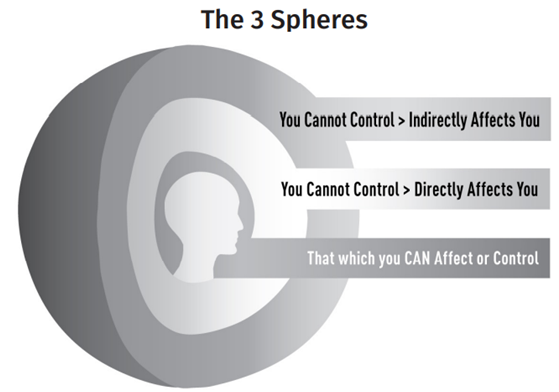
Let’s say news of the bad economy affects your mood. The country’s fate weighs so heavily on your mind that you think all day about the possibility of losing your job. You take this attitude to work, and your preoccupation with the economy makes it hard for you to focus. You have a bad attitude toward others because you are living in fear. You lose the ability to perform as you once did and your productivity declines. You soon begin to feel subconsciously that your job isn’t as fulfilling as it once was because you haven’t enjoyed the work you have been doing there for the last few weeks. Now your emotions are on a downward spiral.
After a few weeks of dragging yourself out of bed to get to a job you don’t want but are fearful of losing, all parts of your life are now affected. You are not as happy with friends and your negative feelings seep into your recreational time. You have lost balance in your life, so you are frustrated more easily and find less enjoyment than you once did in just about everything.
You have let something from the Indirect Sphere take hold of you and directly affect you. Unless you are on the board at your company, you likely have no control over whether or not there will be job cutbacks. You certainly cannot directly control whether or not the company will continue on a negative slide with employment. The only thing you do have some control over is whether or not you will lose your job. And the action of worrying about it won’t do anything to protect that job.
What you can control is your attitude on the job. You can control your performance and the contribution you make toward the company that employs you. If you recognize that the economy is not something that directly affects you, you can make the simple choice to not allow it to indirectly affect you, either.
Understanding how to manage the Direct Sphere starts with recognizing what we can and cannot control. One way to think of the Direct Sphere is to see it as everything that is within arm’s reach. These are the things that you push and pull at all day long, those that have a direct affect upon you. As with the Indirect Sphere, you lack control over what happens within the Direct Sphere. But unlike the Indirect Sphere, you can’t simply ignore the events that occur within your Direct Sphere. They are happening to you, and you therefore must respond. But it is always up to you how you respond.
A perfect example might be a bad driver who keeps cutting you off on the way to work. Because this person is creating unsafe driving conditions, while also taking the same stretch of road you need to travel, you are being directly affected by a circumstance you can’t directly control but must, in some way, respond to. Your options are to grow angry and begin driving aggressively in return or to pull back and allow this vehicle to get far enough ahead of you that they can no longer affect your driving experience. You could also continue driving at a safe distance while consciously monitoring this vehicle so that you can be prepared if they cut you off again.
Many people would get angry. We all feel possessive over our right of way on the road, after all, and unsafe drivers can easily frustrate us. But growing angry and responding by driving aggressively yourself only further perpetuates the unsafe driving conditions for all those around you. It isn’t likely going to change this poor driver’s behavior, and may actually only further aggravate whatever part of them is fueling this bad driving to begin with. At the very least, reacting with aggression on your part will increase your blood pressure and may lead to a ticket, or worse-an accident, thus making a bad situation worse—that downward spiral.
Instead, if you choose to take a deep breath and pull back, or to focus on your own safe driving in response, you not only do your part to provide for the safety of others on the road, you also create an environment where you aren’t allowing this stranger to affect your mood or attitude any more than absolutely necessary.
A significant point to realize is that you have the ability to choose how everything in this Sphere affects you. And applying an understanding of the Universal Laws can help you to control that. If you want to allow a negative encounter at the morning meeting to ruin the rest of your day, you can do that. But if you would prefer to think of the situation in the context of Polarity or Relativity, and conclude that it really isn’t a big deal in the grand scheme of things, you can do that as well.
Managing your Direct Sphere is all about protecting your vibration. Doing so inspires you to commit positive actions, which empowers the Law of Cause and Effect to work for you instead of against you. It is the difference between allowing one negative event to cloud your thoughts and emotions (thereby attracting more negativity) and searching for the positive so that you can move forward (thus producing your own positive effect).
Taking ownership of this can be difficult for people at first. Let’s be honest; it is humbling to admit we have allowed some of the negative circumstances in our life to exist. The sooner you realize that your realm of control resides in how you react and respond to Direct Sphere events, the sooner you begin shrinking the level of negative influence this Sphere has over your life.

Course Manual 9: The Action Sphere (Equation for Results/Outcomes)
Using Your Action Sphere
The Action Sphere is…where the action is! This Sphere consists of the time and space you have control over. With a little consideration about how actions and events inspire other actions and events, that control you hold is much farther reaching than you might first suspect.
We have all been in tough situations before; those circumstances where we felt out of control and at a loss for how to make things better. Perhaps you lost a job, leaving you feeling powerless and unable to find a solution for the money issues you knew were just around the corner. Or maybe you went through a bad breakup and are sure that you will never love or trust again.
It is in these times of despair when it may seem as though our Action Sphere has disappeared. You feel helpless and overwhelmed, so of course you assume that you truly have lost all control. On the contrary, though, there are always powerful tools we have at our disposal that can add a little sunshine to a terrible situation. Use what tools you do have to improve your positive vibration.
The ultimate purpose of managing our Action Sphere is to create positive vibrational energy within us, and to spread this positive energy to the people and environment surrounding us. Positive thoughts and emotions dispel the stress, anxiety, frustration, lack of confidence and helplessness that prevent us from living life as we want to. With these negative thoughts and emotions looming in our mind, we find our life to be less enjoyable and less fulfilling than it should. Managing our Action Sphere begins with our thoughts because these thoughts breed emotions and images in our mind which then dictate the actions we take and the results that we get from our life experience.
Two great tools you should always have ready in your Spheres Managing arsenal are the tool of gratitude and the tool of charity. The first develops positive energy within; the second helps spread that positive energy far beyond.

The Power Of Gratitude
Gratitude was first mentioned as a Quick Tip in the Universal Laws discussion of vibration. By its nature, gratitude is a positive emotion that is spurred by positive thoughts. Because a positive thought and negative thought cannot coexist in our mind, thoughts of gratitude can be used to replace negative, self-defeating thoughts when they arise.
If you have ever tried to think of nothing at all, you know how impossible a task this can be, especially when trying to stop thinking about worries and concerns. The more effective approach is to replace negative thoughts with positive ones—in comes gratitude!
The next time you find yourself in a funk, stop and think of what you have to be grateful for, no matter how simple those things might be: the roof over your head, the food in your stomach, the air in your lungs and the blood in your veins. Be grateful for the things you don’t have as well: things like a terminal illness, a broken bone or a black eye. If these new emotions don’t completely change your situation, they will at least lend reprieve from the angst or frustration on your mind.
Thinking of the things you are grateful for stimulates a little positive emotional energy, but if you want to get the greatest benefit, write them down or say them aloud. The additional effort to hear, see and say the things you are grateful for makes the exercise significantly more effective.

Charity And Selflessness
Selfless and charitable acts for the benefit of others can be the fastest way to improve the environment around you and to garner more enjoyment and fulfillment from the experience of life. I believe that many of the personal and societal ills we face as humanity can be traced back to thoughts of selfishness. And the quickest way to move beyond the issues of stress, anxiety or oppression and hatred is through selfless thoughts and actions.
If you question this idea, then consider how much positive energy is created from a kind or generous action you commit. Not only can you create a positive feeling in another through a selfless act, but it makes you feel better, too! Because of this, selfless or charitable acts can also be used as a tool to create a positive vibration within you, or to amplify your good emotions when you are already in a good emotional place.
Giving of ourselves for the benefit of others is often the purest form of gratitude. When you give your time, energy or money to another person, you are demonstrating to the Universe appreciation for what you already have. This action, through cause and effect, opens the floodgates for you to receive more and more to be grateful for. Remember, the more you appreciate all that you have, the more the Universe wants to give!

It’s Not All About Size
I ’ve described the Spheres in order of size, simply because that is the easiest way to picture them. But just to clarify—these Spheres can’t be physically defined. And even if they could be, they would be in constant flux.
The boundaries between the Direct and Indirect Sphere are determined based on how events and circumstances affect us. It isn’t about how far that sphere reaches, but rather about the effect the events and circumstances within that sphere have over you. Something may happen to a friend 500 miles away that absolutely affects you. And at the same time, a neighbor down the street could be going through something that doesn’t affect you at all.
The visual metaphor of three Spheres, with the Indirect Sphere being the largest, just illustrates that there are many more events and circumstances going on in the world that don’t directly affect you than those that do.
When you are first introduced to this concept of Spheres, there are likely to be many Indirect events and circumstance that presently reside in your Direct Sphere. This simply means there are things occurring around you that are having a direct impact on your emotions or happiness, even though they shouldn’t. If a tragedy on the news or a memory of the past has held a string to your emotions, you are allowing these events to operate like Direct Sphere events.
With awareness, you can move events and circumstances that shouldn’t affect you directly to where they belong, the Indirect Sphere.
You shrink the Direct Sphere by not committing energy to worrying about events and circumstances that don’t directly affect you. If the wins and losses of your favorite sports team dictate the mood you carry and the energy you emit in the days following a game, this would be an example of something you are allowing to reside in your Direct Sphere that doesn’t need to. Similarly, if the fictitious life events of a character on your favorite TV show affect your emotional vibration for a day or two, you are allowing that show to have a direct effect on you and possibly the actions you take.
When you let these things slip into your Direct Sphere, the sphere grows because there are now more things in the world permitted to affect your thoughts, emotions and actions. In these examples, your Direct Sphere is artificially inflated because of the Indirect Sphere intruders you have allowed in.
When you “shrink” your Direct Sphere, you are merely identifying the indirect intruders and pushing them back to the Indirect Sphere where they belong. The ideal goal would be to shrink your Direct Sphere as small as you can, greatly reducing the events and circumstances that hold a direct connection to your thoughts, emotions, actions and ultimately the results and blessings you receive into your life.
The Action Sphere can be harder to visualize in this regard. I introduced the Action Sphere conceptually as the smallest of the three, but it has the ability to reach beyond anything you might now imagine. The size of this Sphere has everything to do with the influence you have on the world around you, and the ripples you create through your actions. The more you increase your own reach, the larger your Action Sphere will become.
I like to imagine them as three concentric Spheres with me in the middle, but this is just where the analogy begins.

Course Manual 10: Personal Integrity
Integrity can have a significant impact on your own mental health as well as the success of your organization
• It is well known that holding intrinsic values, such as personal growth and affiliation, is positively associated with happiness.
• Studies have shown that people who think about their highest values before a stressful event experience less stress.
• Knowing your values helps you distinguish between what seems urgent and what is truly important.
• 33% of workers across 13 countries said they had observed misconduct in their workplace in the previous year.
• In the United States, 30% of workers have witnessed rules violations at work.
• Both employees and C-suite leaders place a high premium on integrity among executives.
• Stock prices of companies recognized for their ethics outperformed the U.S. Large Cap Index by nearly 5% from 2015 to 2017.
• Only 21% of employees believe they work in a business with a strong ethical culture.
• 40% of employees said their companies had weak or weak-leaning ethics.
• More than 50% of the 10 largest corporate bankruptcies since 1980, such as Enron, WorldCom, and Lehman Brothers, resulted from unethical business practices.
• The ethics of an organization’s culture plays a significant role in creating and sustaining value.

Why is personal integrity important?
Personal integrity is vital for many reasons, but the most important reason is that it is the right thing to do. When you have integrity, you are dedicated to doing the right thing regardless of the circumstances. A person of high integrity is more likely to be satisfied in life since they are aware of their values and goals and are not hesitant to pursue them.
Integrity might help you make more friends as well. Others value integrity in the people they associate with, as most people dislike working or spending time with people who lack strong or even aligned principles.
Finally, as the data above demonstrates, a lack of integrity in an organization’s culture can have a detrimental impact on personnel as well as the company’s overall performance. When a firm’s integrity is valued and personnel are held to high ethical standards, the company performs better.
How do you show personal integrity?
The way you conduct your life day in and day out demonstrates your personal integrity. Consistently following your values and principles is the most effective method to demonstrate personal integrity and the ability to do the right thing even when no one is looking.
You can also demonstrate your personal integrity by being forthright about any potential faults you’ve made or noticed from others that you feel compelled to report. Having integrity relies heavily on keeping yourself and others honest. If you’re ever unsure how to act with integrity in a situation, consider what the appropriate thing to do is. That is the finest course of action for you.

What are the five attributes of integrity?
1. Have and follow a set of values
If you don’t have a moral code that you create for yourself and obey, it’s impossible to have integrity. Your beliefs might be written down, or you can make a personal mission statement to which you can relate everything in your life. Some people find that adhering to a philosophical or religious system aids in the formation of their morals and values.
Some example personal values you could jot down include:
• Authenticity
• Gratitude
• Honesty
• Kindness
• Reliability
To establish and maintain integrity, regardless of how you choose to form your beliefs, it’s critical that you follow those principles in all situations. Your values are your route map to personal integrity success.
2. Be honest
Honesty is also a necessary component of personal integrity. You should be clear and honest about your behavior in addition to adhering to a set of ideals because you have nothing to hide.
Everyone values honesty, even if it is tough for both the truth giver and the truth recipient. You can keep your personal integrity if you make honesty a priority in your life.
3. Help others
A person who wishes to assist others brings a lot of good into the world and usually has a good moral character. If you value giving and doing good things, you’ll want to make sure you act on those values.
You can help people you interact with on a daily basis, or you can contact volunteer organizations to perform community service. Whatever way you choose to give back, make sure you do so sincerely rather than just to keep up appearances or check a box.
4. Lead by example
Someone who follows the philosophy of “do as I say, not as I do” is one of the worst sorts of leaders. It’s difficult to appreciate someone who doesn’t do what they say they’ll do, and it’s even more difficult to work with or for them.
Acting in accordance with your values, whether or whether those values are shared by those around you, is one of the best ways to exhibit your integrity. Even if you don’t have direct reports, you can still influence people to act ethically. If you can stick to your morals while everyone else follows their whims, you’ll be viewed as a person of good character, and you might even inspire others to do the same.
5. Take responsibility
There will almost certainly be a period when you don’t display your integrity as well as you should or when you compromise your ideals. This is normal, and keep in mind that everyone makes mistakes now and then.
However, how you react after realizing you’ve made a mistake is crucial. You’re digging yourself a deeper hole away from personal integrity if you avoid taking responsibility and create excuses for not acting in accordance with your morals.
When you’ve made a mistake, own up to it and accept responsibility for the consequences. Not only will others respect you for your accountability, but you may also be able to restore any damage caused by breaking trust by acting against your ideals.

What is personal integrity in the workplace?
Integrity may have a huge impact on businesses and employees in the workplace, as the data above shows. The ethical culture of a firm is critical to a productive and pleasant working environment.
Here are four ways that personal integrity manifests itself in the workplace, as well as what you can do to ensure that you do so.
1. Follow company policies
The purpose of company policies is to ensure that the organization maintains or creates an ethical culture. Companies frequently have a set of values, rules, and mission statements to help employees understand what is expected of them and what is vital to the company.
By adhering to these workplace rules and statements, whether it’s a vacation policy or an anti-harassment policy, you’ve demonstrated that you value the advice and are prepared to put in the effort to guarantee that the workplace reflects the regulations.
2. Respect all co-workers
While you may not be everyone’s greatest friend, it’s still crucial to treat everyone with respect and care at work. There will be occasions when you disagree with someone, and it will be easy to gossip with your co-workers about them. Hold fast to the values you hold dear and take the high road.
You’ll be seen as a mature and capable professional, and your boss or co-workers will respect you even more. Allowing others to contribute equally during meetings, being flexible with diverse working schedules, and asking for opinion or criticism are all examples of respect.
3. Speak up about any misconduct
“If you see something, say something,” is a good statement to use here. You should speak out if you witness any of your coworkers or leaders acting in a way that does not reflect the company’s values or could be considered unethical.
Coming out about workplace wrongdoing can be scary, especially if the person you’re reporting is a friend or a boss. But who will speak up if you don’t? People often give the justification that they believe someone else will report unethical behavior, but no one does, and the behavior continues unchecked. Maintain a culture of integrity in your job by holding yourself and your coworkers to high ethical standards.
4. Be accountable for mistakes
There are times when your actions aren’t necessarily unethical, but they don’t reflect your integrity. If you make a mistake, own up to it and accept responsibility for making things right. Placing blame on others or avoiding confrontation only serves to exacerbate the problem and does not reflect well on you.
Furthermore, the way you go about your work might demonstrate personal integrity. If you or your organization appreciate hard work, for example, handing in a project that was completed with little effort because you were feeling sleepy on Friday afternoon does not hold up well. You may keep yourself accountable by blocking off time to work on projects so you don’t leave it to the last minute, or by being open and honest with your business partners to come up with a realistic deadline for showcasing your finest work.

Exercises 1.10: Inventory of Broken Agreements – group collaboration
• What agreement or agreements have you broke in the past?
• When did you first know you’d have a broken agreement?
• What did you make more important than keeping your word?
Discuss the following reasons why people don’t keep their agreements:
– Convenience
– Comfort
– Approval
– Rebellion
– Control
What is the price you pay for not keeping your agreements?
– Integrity
– Respect
– Self-esteem
– Confusion
– Power
Discuss typical excuses that you have made in the past or excuses that could be made and then discuss with the group what tips you may have for keeping agreements.

Course Manual 11: Improving Response/Increasing Resilience
It’s Critical to Develop Resilience in Your Career
In life and at business, everyone experiences stress, disappointment, and failure. Resilience permits you to stay the course and operate in difficult situations, particularly at work:
• Meet the pressures of your profession, remain on track with huge projects, and meet deadlines by building resiliency.
• Take steps to improve or resolve issues over which you have control, and learn from situations over which you have no influence.
• Recognize when you should seek assistance from your supervisor, coworkers, or mental health specialists.
• Maintain your role in team settings to foster positive collaborative connections with co-workers.
• Put yourself in a position to take on leadership roles.
In a world that is continuously changing, resilience provides security. Resilience entails anticipating dangers and being at ease with change. Limiting damage during stormy times, absorbing harsh knocks, regrouping, and bouncing back when the worst comes are all examples of resilience. It’s the ability to recover your confidence and start feeling better after a setback. It’s staying engaged in the face of ever-changing challenges.
And detecting trends and converting them into opportunities is a sign of resilience. Resilient people reject the temptation to dwell on the past and instead focus on the future. They are inquisitive and continue to learn. Resilience is being able to change with the times, whether you’re a college student looking for your first real job or a Baby Boomer considering retirement options.
It is possible to develop resiliency
While some people appear to be naturally resilient, research has revealed that these characteristics may also be learnt. How can you improve your resiliency? You must be knocked down often. Resilience can be compared to a muscle. You can’t use it until you’re dealing with a difficult situation. The more times you fall and get back up, the more powerful and brave you become.“ My work has shown me that deliberate, intentional effort to cultivate resilience can bolster our inclinations for it. When we think of it that way, we can understand that there are specific habits, behaviors, and mindsets that help us foster it.” says Dr. Kristen Lee, head faculty in behavioral science at Northeastern University whose research focus is resilience.
People who are resilient aren’t necessarily born with a special aptitude to bounce back or go forward. Rather, they are everyday people who develop behaviors, attitudes, and work patterns that enable them to persevere and thrive even in the face of adversity.
You may give your career fresh force, direction, and enthusiasm by learning to be more resilient. You may feel better at ease in an environment where nothing remains the same and old methods may no longer be effective. You may build a more successful job path while also finding more satisfaction in the rest of your life if you develop resilience.
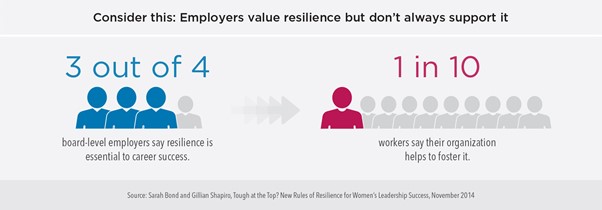
Resilience can be cultivated
Today’s workplaces are frequently unclear, complex, dynamic, and confusing. Many events could threaten to wreck your career, whether your firm is downsizing or you were passed over for that coveted promotion. Resilience is essential for overcoming the hardships that will inevitably arise in your profession. These tactics will assist you in developing resilience and achieving job success:
1. Establish a connection. Create a robust network of positive connections. Don’t wait until there’s a crisis to begin expanding your circle; start today. Even if you don’t feel like it, go to events. Join a group of people. Find ways to mentor others and recruit mentors. Look for opportunities to help friends, coworkers, and even acquaintances in the workplace. And know that they will accept, encourage, and inspire you even when things are tough.
2. Make the decision to be optimistic. Positive people are more resilient than pessimists, and you may improve your optimism by practicing it. Stop focusing on what goes wrong and start focusing on what goes good as a starting point. Keeping a journal can assist you in this endeavor. If you find yourself thinking about the same old anxieties and regrets, write them down and decide if you want to let them go or confront them in some way. Also, start keeping track of the good things that happen to you. Write a few paragraphs at the end of each day on what went well and what you’re grateful for in your current situation.
3. Discover something new. It helps to be actively involved in altering yourself in order to deal effectively with change. Professionals who are most innovative and resilient are more likely to participate in learning and improvement activities on a regular basis. When you’re learning, your perspective shifts, and you find connections that you never noticed before. Start learning something new if you don’t know what to do next.
4. Consider yourself an entrepreneur. Recognize that you are in charge of your career and that no one else will set the course for you. You can operate your career like a one-person business even though you feel like a cog in the middle of a large organization. And if you need to make a transition, this will make it easier. Consider your brand, who your consumers and supervisors are, and what they want you to do for them. Look for innovative ways to add value, which will allow you to grow your product line.
5. Take a step back and look at the larger picture. Allow yourself to forget about this week and consider what success might look like in five years. And keep in mind that you won’t be able to advance in your work if you disregard the rest of your life. Write a short personal vision statement, construct a list, or draw a picture that includes your most essential values and life elements. Even if you’re in the midst of a job crisis, keeping your perspective will make you feel better.
6. Get yourself in shape. Everything you do to keep in shape – physically, mentally, and spiritually – has an impact on your profession. Manage your fitness and energy levels, as well as your time, to do your best work and build the resilience that will keep you going.
Identifying and analyzing strengths and shortcomings
Self-reflection is the only way to properly develop resilience. They must analyze the pillars of resilience and determine which areas require improvement. Giving and receiving feedback at work can be extremely beneficial in this regard.
Having frequent 121 sessions between managers and employees, as well as encouraging people to complete 360 feedback for everyone on their team, are good examples of how to do so. People learn to focus on achievement and chances for progress when they develop the practice of assessing their strengths and flaws. As a result, they’ll believe that nothing will be able to stop them.

Employer Guidance
It requires dedication to build a more resilient staff and a healthier culture, but it is possible. Case studies from companies as different as Garmin, Health Partners, and Unilever demonstrate that it is possible. The following are important aspects to consider when creating a more resilient workforce:
Recognize Your People: Organizations with resilient employees are more likely to be successful. Supported, motivated, and prepared people are in the best position to overcome barriers and distractions. Find out which work-related pressures have the greatest influence on employees. Inquire with your EAP provider about how they might help you achieve your objective of increased resilience and stress reduction. Consider requesting anonymous work satisfaction surveys from employees, or including stress and resilience-related questions in your Health Risk Assessment (HRA). You may construct a plan for promoting resilience and a healthy work culture after you have data and understand the impact of stress and other factors.
Engage Leadership: A resilient workplace necessitates buy-in from the top. When the organization’s executives are active, employees are more likely to participate in resilience programs. To enhance organizational resilience, leadership is critical in creating priorities, setting goals, and allocating resources. Also, in clearly and forcefully articulating the organization’s commitment to resilience. If your leaders aren’t already on board, revealing survey and HRA results can help you create a compelling business case.
Consider Resiliency Training: With good reason, employers are increasingly focusing on resiliency training. Resiliency training improves job performance and engagement in a dynamic work environment. The American Heart Association published a detailed report on workplace resilience training. The importance of utilizing innovative ways to promote employee health and organizational success is emphasized. The following elements should be included in training and design, according to the report:
• Overcoming Interpersonal Challenges
• Managing Emotions
• Avoiding Burnout
• Dealing with Work-Related Stress
• Improving Sleep Habits
• Remaining Calm
• Dealing with Difficult People
• Improving Communication Skills
• Taking on New Challenges
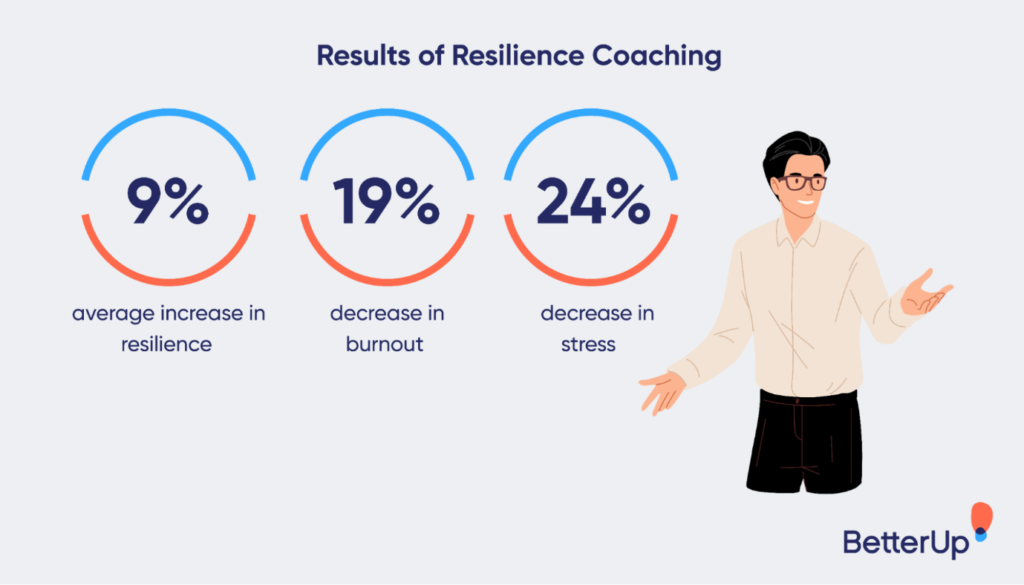
Create a Resilient Culture: There are several layers to organizational culture. It is based on the ideas of empowerment, purpose, trust, and accountability in the end. A company-wide statement expressing support for staff and a commitment to tackling resilience can help to build or improve a resilient culture. Promote an open and trustworthy management style, and educate managers on the necessity of supporting employees’ mental health. This commitment necessitates action and regular communication, just simply a declaration is insufficient.
The world’s most successful people are also the most resilient. Before being accepted, J.K. Rowling’s initial Harry Potter manuscript was rejected by 12 major publishers. The Kansas City Star fired Walt Disney because his editor thought he “lacked vision and had no good ideas.” Sir James Dyson (who, by the way, does not have an engineering degree) went through 5,126 failed prototypes over the course of 15 years before producing the world’s best-selling bagless vacuum cleaner, which earned him a $5.4 billion fortune. Remember a point in your life when you were able to persist the next time you face a career setback. You are a lot tougher than you think.

Course Manual 12: Leadership – Developing the Potential of Your Workplace
Here are a few things that leaders do to help employees reach their full potential:
1. Encourage them to think and act in ways that they are most comfortable with.
A superb leader does not try to persuade you to think the same way he or she does. They value your natural methods of thinking and build on your abilities. They can figure out your “default settings” by looking at what you naturally lean towards (and what you don’t). The most effective leaders ensure that you are placed in situations that will allow you to show off your abilities.
2. Improve their decision-making skills
If an employee is to make the most of the possibilities that come their way, they must have strong discernment and the capacity to transform it into solid decision-making. A smart leader understands how to assess a worker’s decision-making blind spots. Frequently, it is not only the present decision that must be made, but also the later decisions that must be predicted before events compel our hand. We are prone to falling into our own traps if we lack the ability to see beyond the obvious.
This is when a good leader will start to figure out where an employee’s reaction to a situation is most and least predictable. Problem solving becomes a treasure hunt of unforeseen opportunities as they correctly guide them to understand the repercussions and probability patterns of each action.
3. Increase their tolerance for poor performance.
A great leader keeps track of how much each person can take on. They determine their performance tolerance threshold by assessing how well they deal with adversity, how they function under duress, their readiness to take on new tasks, and their overall mental toughness. Working on the areas that need more attention and growth so that they can rise to any situation on their own is key to unlocking their full potential.
Potential will emerge organically over time with the correct leadership advice – encouraging people to take chances, test their ideas and principles, and challenge the existing quo in an effort to improve things.
4. Strengthen potential by encircling it with even more powerful people.
Without a supporting cast that can keep everything in perspective, a great leader realizes that enabling potential is a zero-sum game. That is why you must surround potential with components that are both stronger and complimentary. Potential needs to be tested, and surrounding it with other high-potential individuals will only strengthen it. Employees become wiser as a result of the process, and they build a mindset that isn’t scared to take risks and learn from their mistakes.
When you’re a member of a high-performing team, things like this happen. Every employee in the company has the potential to be a top performer. Strengthening a good foundation of talent by surrounding it with more experienced and knowledgeable people is the key to success. To control their agendas, gain maturity, and project executive presence, potential leaders must understand how the game is played.
No matter how much potential an employee have, if it is not properly managed and nurtured with the right nutrients, it will remain dormant. A strong leader will never let an employee’s potential go unappreciated or lose traction. Breaking down barriers and establishing new paradigms are frequently required to fully realize one’s potential. As a result, the 21st-century employee must see what others don’t, do what others won’t, and persevere when caution tells them to give up. Today’s leaders aren’t simply seeking for people who can do their jobs better; they’re searching for people who can reimagine their jobs in their own image, discovering new standards along the way to boost productivity, sustainability, and bottom-line effect.
Leadership Skills That Are Important In The Workplace
Having a diverse set of abilities and attributes that enable you to accomplish your job with ease is an important part of demonstrating leadership. Hard and soft skills are among the qualities a leader should possess. Here are some crucial attributes that every workplace leaders should have:
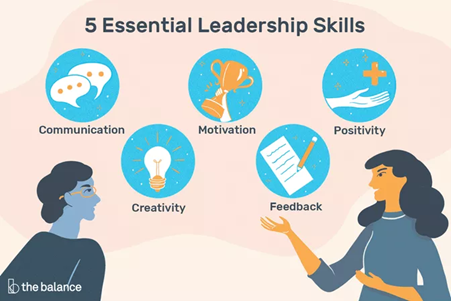
1. Effective communication: As with other jobs, it’s critical for leaders to be effective communicators. They are, in many ways, the company’s voice, therefore being able to communicate successfully with their team and employees is critical in their role.
2. Creativity: It is critical for CEOs to have a clear vision in order to make a company profitable. This suggests they are motivated and capable of thinking beyond the present and proactively planning for the future.
3. Motivating: As a leader, you’ll be in charge of not only leading but also empowering your team to perform to their full potential.
4. Feedback: Leaders should be open and honest about the company’s current situation, goals, and other issues. This entails talking with others in the organization in an open, honest, and effective manner. As a leader, the more transparent you are, the more your people will trust you in the future.
5. Positivity: Positivity can help raise morale and promote a positive work atmosphere in general. Leaders should have a positive attitude and remain optimistic throughout their daily activities. Employees are more likely to be positive if they witness their bosses being positive. Leaders should strive to inspire people by displaying a good attitude.
Empower people to take charge of their work and achieve peak performance.
It’s no secret that higher levels of engagement lead to higher levels of performance, and that individuals are more involved with the products they help develop.
In order to succeed in business, persons must possess three key characteristics:
Competence – Employees must be proficient in a set of abilities and behaviors that are required to perform. Their attitude is also important because, while skill may be learned, attitude is far more deeply imprinted in a person.
Autonomy – Employee autonomy is important because it has a major impact on intrinsic motivation.
Purpose – Employees must operate with intention and be aware of the corporate mission in order to understand how they may have the most impact.
The business mission and vision can be effectively conveyed by cascading OKRs, Objectives, and Key Results from the CEO level down to all teams at all levels of an organization, fostering employee autonomy. While the Objectives are organized in a descending order, the Key Results are organized in an upward direction, giving employees the opportunity to select how to fulfill each target by developing appropriate key results. Individuals may shape their work and take ownership of their roles and responsibilities with this employee-led approach, which has a substantial impact on business success.
As a business leader, you must examine your leadership style to ensure that you get the most out of your people, keep them totally engaged, and encourage them to become great leaders.
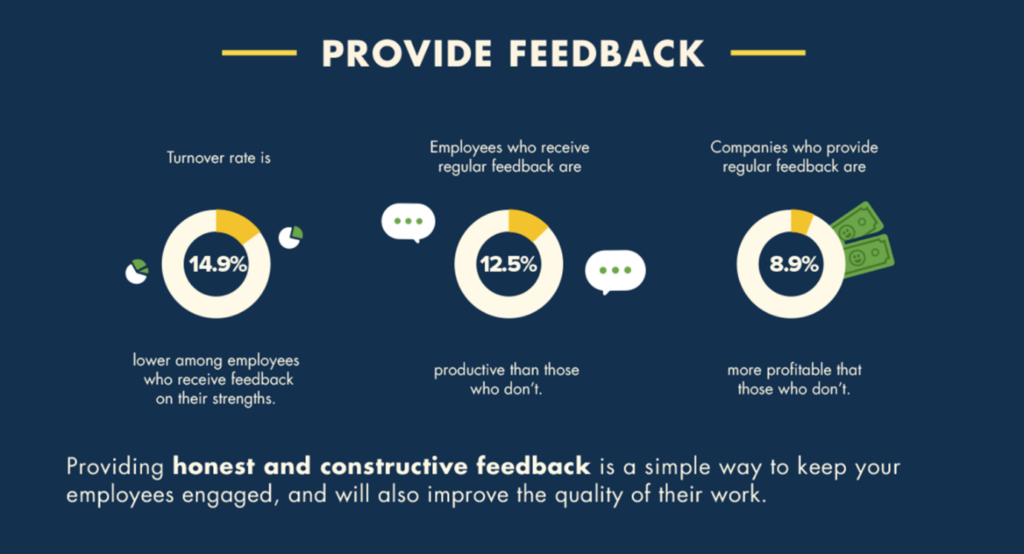
To Be A Great Leader, You Must Be Able To Delegate Effectively
The move from doing to leading is one of the most difficult for leaders to make. You can get away with keeping your job as a new boss. Peers and superiors may applaud your desire to “roll up your sleeves” and complete tactical tasks. The distinction between a successful leader and a super-sized individual contributor with a leader’s title becomes painfully obvious as your responsibilities become more complex.
You may have the stamina to wake up earlier, remain longer, and outwork the obligations you confront in the near term. However, the inverse equation of dwindling resources and rising demands will eventually catch up with you, and how you include others at that point will determine the extent of your leadership effect. Only by empowering each partner to offer their finest work to your shared priorities can the upper limit of what’s achievable rise. Similarly, every initiative you cling on to needlessly reduces your strength.
While it may appear challenging, increasing your effect necessitates accepting an inherent leadership paradox: you must be more important while being less involved. When you rationalize your absence from work, you’re conflating involvement with necessity. But they’re not the same thing, just as being busy and being productive aren’t always the same thing. Your participation is a result of a combination of opportunities, mandates, and decisions you make about the job you accomplish. How decisive and smartly you energize others around you determines whether you are peripheral or essential to the portfolio’s success.
This involves influencing rather than dictating others’ thoughts and intentions, having a sought-after perspective rather than being a required pass-through, and witnessing your own priorities come to life via the inspired acts of others.
On the surface, this suggestion may appear to be basic sense; after all, it’s what effective motivators should do. Yet, far too many of us are constantly overworked, fueling an innate reflex to “defend” work. This survival instinct dilutes our impact by having a long-term, restricted impact on others.
Answer this simple question to see if you’re guilty of hoarding too much: Would your initiatives and priorities advance if you had to take an unexpected week off work?
If you responded no or aren’t sure, you might be more involved than necessary. You must extend your presence through the activities of others to raise the ceiling of your leadership potential.

Make sure you know how to say “yes,” “no,” and “yes, if.”
Consider Anika as an example of these methods in action. She didn’t know how to say no, and as a result, she was involved in every team priority. Members of her staff were increasingly irritated as they waited for some of her valuable time to advise on, examine, or approve various issues. Anika was on the verge of burnout while dealing with the prospect of losing her team’s trust.
Anika’s initial step was to question the definition of her leadership mandate. “I’m the one in charge of getting the job done,” she had defined her key responsibility up to that moment. As she thought about it, she realized it was her doer’s perspective that was limiting her potential effect. Her peers were involved in several strategic dialogues and business development chances with senior leaders in recent months, but Anika was dealt out of these possibilities to demonstrate her potential due to a lack of energy and space.
She realized that her focus on doing the task was not only preventing her from doing the big-picture work of leading, but it was also causing irritation among her subordinate employees. She wanted to start giving them more rope, despite how uncomfortable it was. Anika redefined her leadership mandate to avoid being involved and not being essential as she considered her obligation to develop others — upskilling, providing tangible leadership experience, and so on. “I lead people, priorities, and projects — in that order — and the work will get done because the right people are focused on the right tasks,” she said.
Her next step was to examine her portfolio with this new perspective. She glanced at her calendar for the previous two weeks and the next two weeks, then counted the hours she had dedicated to each effort (for example, through meetings, working sessions, and conference calls). She ranked each item on a 10-point scale when she finished the time count to determine how significant the initiative was to the team’s overall success.
Anika was dedicating too much time and attention to priorities that were not in the top five, as demonstrated by this two-column exercise. Her next step was to analyze each team member’s unique blend of abilities and development needs in order to make an informed decision about who could take on greater responsibility. Some of the efforts could be totally handed over, while others could be split down into smaller chunks to allow others to participate without a complete handover of responsibility.
She spent 15–20 minutes preparing for each conversation with these new duties in mind. Anika got significantly less involved in the details over time, but she remained important to the objective and momentum of each critical project.
So, going forward, she resolved to use the method of saying yes, no, or yes, if to new requests in order to avoid diluting her effect by participating in activities that did not correspond with her desired growth and personal brand.

Exercise 1.12 Complete delegation to promote ownership:
For this exercise, think about a decision or responsibility that can be passed onto one of your employees in real life. When you return to work, allow this person to take ownership and make decisions about (take responsibility for) that project, initiative etc.
The objective is to allow this decision to stand as decided by one of your subordinates without you overriding the decision or making changes. This would stop you from feeling like you have to take responsibility and you can see how some decisions do not always have to be made by yourself.
Project Studies
Project Study – Taking Responsibility for Difficult and Troubling Situations You Face
Project Study (Part 1) – Taking Ownership of a Personal Issue You Face
Find a colleague to help you complete this first part of the Project Study – preferably a fellow participant in this Cultivating Potential program. Each of you will take turns fulfilling the roles of the Participant (the person analyzing a situation) and the Coach (the person asking the questions).
During this Part 1, you, the Participant, are to identify one difficult or troubling situation you are facing in your life. With this situation in mind, answer the questions posed by the Coach. When you finish this series of questions, record your new awarenesses and your commitment. Once you have completed the process, you may choose another issue in your personal life and repeat the questions or you may switch roles with your partner and Coach them through the process.
Note to the Coach: During this exercise it is important to stick to the script and just ask the questions; let the questions do the work. Resist the temptation to coach your partner through the process by offering suggestions or filling in the blanks for them. If the Participant gets completely stuck, try and offer some encouragement without providing them the answers. If Participants are left to their own analytical and creative devices to come up with the answers, they will experience a greater gain of awareness and the growth will be long-lasting. If you would like to take notes throughout the process, you are welcome to share your observances with your partner AFTER they complete the process.
Before you begin, it may be helpful to read through a hypothetical example of what someone may come up with through this process. See the example provided below.
Use these questions during this exercise:
1. What is a difficult or troubling situation in your life?
2. How are you creating it or allowing it to happen?
Think back to Course Manual 6. If there is a difficult or troubling situation you face (an Outcome), what thoughts, behaviors, or images are you Responding with and to what previous Event(s)?
3. What are you pretending not to know?
Are you pretending that your circumstances might change even if you don’t change? Are you pretending there is nothing you can do about it? Are you pretending that it has to be this way?
4. What is the payoff for keeping it like it is?
What do you gain by not addressing the situation? For example: You don’t have to hurt someone’s feelings? You don’t have to contend with the fear of doing something uncomfortable or the effort to learn something new?
5. What is the cost for not changing it?
What is it taking from your life – time, energy, money, peace of mind, stagnation, friends, self-esteem – if you continue not to address the situation?
6. What would you rather be experiencing?
State an ideal future situation where this situation no longer exists.
7. What actions will you take and what requests will you make to get it?
What new Responses are you going to make in order to get on track to what you want? Think back to the “Exercise 1.4 – Responsibility Stems” for some inspiration as to where you can start.
8. By when will you take that action?
There is no better time to act then when the emotion is high and the determination for change is the greatest. “As soon as we are done with this exercise,” or “by the end of today,” would be great answers. “By the end of the week,” could be appropriate. If you are tempted to push the first action step to beyond this week, your chance of following through and experiencing different results will be significantly reduced.
Jim Rohn often said, “You can’t change your destination overnight, but you can change your direction.”
9. On a scale of 1-10 (10 being highest probability), will you follow through on this action?
Note to Coach: When asking for a commitment, if the Participant answers with less than an 8, they aren’t likely to follow through. Here, you can ask some questions to determine what might be blocking them from committing to taking action. One powerful technique that can increase the likelihood of follow through is external accountability. If Participant answers with less than an 8, recommend that they find someone else they can share their commitment and report on their progress to. If Participant agrees, be sure to record by whom, how, and by when will the Participant be accountable.
Example results someone may have during this process:
1. What is a difficult or troubling situation in your life?
I am not in as good physical shape as I would like to be.
2. How are you creating it or allowing it to happen?
I am not making the best food choices and find myself snacking a lot late in the evenings in order to wind down. I have also stopped going to the gym almost altogether and rarely find time for any exercise.
3. What are you pretending not to know?
I am pretending not to know that I am getting older and my health is more important than ever. I am pretending not to know that if I don’t make some changes soon, my physical health will continue to slide.
4. What is the payoff for keeping it like it is?
It’s a lot easier to not change anything that to make some changes that will be uncomfortable. I have grown accustom to snacking a lot even when I am not very active throughout the day. I also really love to enjoy some not-so-healthy food choices with my daughter on the weekend and I don’t want to lose that.
5. What is the cost for not changing it?
I am feeling more lethargic than usual and cannot focus as well or as for long as I used to. I don’t like the way I am fitting into my clothes. It’s embarrassing to get winded when I start doing something only mildly strenuous.
6. What would you rather be experiencing?
I want to wake up feeling more energetic and sustain that energy and focus throughout the day. I want to feel that general sense of well-being and confidence that I do when I am in great shape.
7. What actions will you take and what requests will you make to get it?
I am going to reboot my diet by going back to a healthy breakfast and large glass of water each morning. I am going to commit to walking for 20 minutes at least 4 mornings a week and will get back to at least 2 yoga classes a week.
8. By when will you take that action?
I can take a walk this evening when I get home and then commence my morning routine tomorrow. The yoga classes I like are only offered a few nights a week so I will sign up for one this week and then two next week.
9. On a scale of 1-10 (10 being highest probability), will you follow through on this action?
Maybe a 6, to be honest. I often say I will make changes to better my health but I don’t seem to follow through.
Coach – “What if you had someone hold you accountable by committing to report your results to them as you progress. Would that help you follow through?”
Yes! I will ask my neighbor to walk with me in the mornings and whether he does or not, I will let him know if I followed through by calling him on my way to work. My sister likes to support me so I will tell her about my commitment to yoga and I will report to her each Friday to tell her my progress. In fact, I am going to make a repeating calendar reminder right now to call my sister each Friday evening so I can report my results.
Coach – “This is great. It seems like this issue is really important for you to change. Is there anything else you can think of that will encourage to follow through and guarantee your desired results?”
Well, I know we have an office pool right now that we are using to raise money. How about any week that I don’t follow through on my commitments, I will donate $100 to the pool the following Monday. I really can’t afford too many of those so I will have to follow through. And I will share this commitment with my team so they can hold me to it.
Coach – “Great! Now with these accountability measures in place, on a scale of 1 to 10, how likely are you to follow through?”

Project Study (Part 2) – Taking Ownership of Your Role in the Organization
Now that you have experience applying this process to take responsibility for difficult or troubling situations in your own life, it is time to extend this to your professional life by taking greater responsibility for challenges you face at work.
If you are a team leader or department head, it may behoove you to perform this exercise by leading your team through the process. For some sensitive issues, you may prefer to contemplate these issues with a colleague or trusted mentor.
Whether participating as a group or individually, pick at least three to five difficult or troubling situations you are facing in your organization and conduct this nine-part process. Be sure to record your own reflections and commitments if conducting this privately. If you are performing this as a group, elect a scribe who can take notes on a flip-chart or white board during the process. Ensure all who participate take time to record the action steps and commitments; be sure to clearly delegate which actions will be taken by which individuals. Ultimately, the responsibility to fulfill any commitments rests with you.
1. What is a difficult or troubling situation I/we face in the organization?
2. How am I/are we creating it or allowing it to happen?
3. What am I/are we pretending not to know?
4. What is the payoff for keeping it like it is?
5. What is the cost for not changing it?
6. What would I/we rather be experiencing?
7. What actions will I/we take and what requests will I/we make to get it?
8. By when will I/we take that action?
9. On a scale of 1-10 (10 being highest probability), will I/we follow through on this action?
Conclusion:
This process of identifying solutions to difficult and troubling situations is one that can become more valuable over time. It is recommended to re-visit this process regularly. Once everyone on your team is familiar with the process, it can be a great way to open or close periodic meetings with the group. In addition to the ideas that are brought up during this process, completing this exercise in a group setting is a great way to learn more about the perspectives and understanding of different members in the team.

Project Study (Part 3) – Implementing a Business Process for Permanent Change
The Head of each Department is to provide a detailed report relating to the Framing Potential process – specifically, the Taking Responsibility for Difficult or Troubling Situations process introduced in this Project Study.
Now that you have completed Cultivating Potential’s Framing Potential Workshop, it is time to adopt what you have learned into your normal business processes. This specific process promotes greater ownership and individual responsibility while allowing for creative problem solving. Adopting this approach to surmounting difficult and troubling situations will empower your organization to move beyond current and future limitations.
What to include in your detailed report:
Together with all key stakeholders of the department, report on how Framing Potential will be implemented through new or refined processes in your department. You may focus specifically on the process codified during Part 1 and Part 2 of this project study. Or, if you elect to, you may detail the implementation of other key processes shared during the whole of the Framing Potential workshop that are uniquely beneficial to your organization.
Be sure to provide in your report details about how you address each phase of: planning; development; implementation; management; and review.
Program Benefits
Human Resources
- Improve engagement
- Improve retention
- Mitigate burnout
- Foster wellbeing
- Human flourishing
- Inclusive environment
- Recover morale
- Inspire workforce
- Reduce absenteeism
- Employee satisfaction
Management
- Greater collaboration
- Increased focus
- Supportive culture
- Cohesive workforce
- Greater potential
- Team work
- Employee empowerment
- Individual ownership
- Strength exploitation
- Improved outcomes
Production
- Promote innovation
- Lead-time reduction
- Increased productivity
- Enhanced feedback
- Accurate projections
- Better responsiveness
- Resource utilization
- Reduce risk
- Greater resilience
- Improved performance
Client Telephone Conference (CTC)
If you have any questions or if you would like to arrange a Client Telephone Conference (CTC) to discuss this particular Unique Consulting Service Proposition (UCSP) in more detail, please CLICK HERE.


















